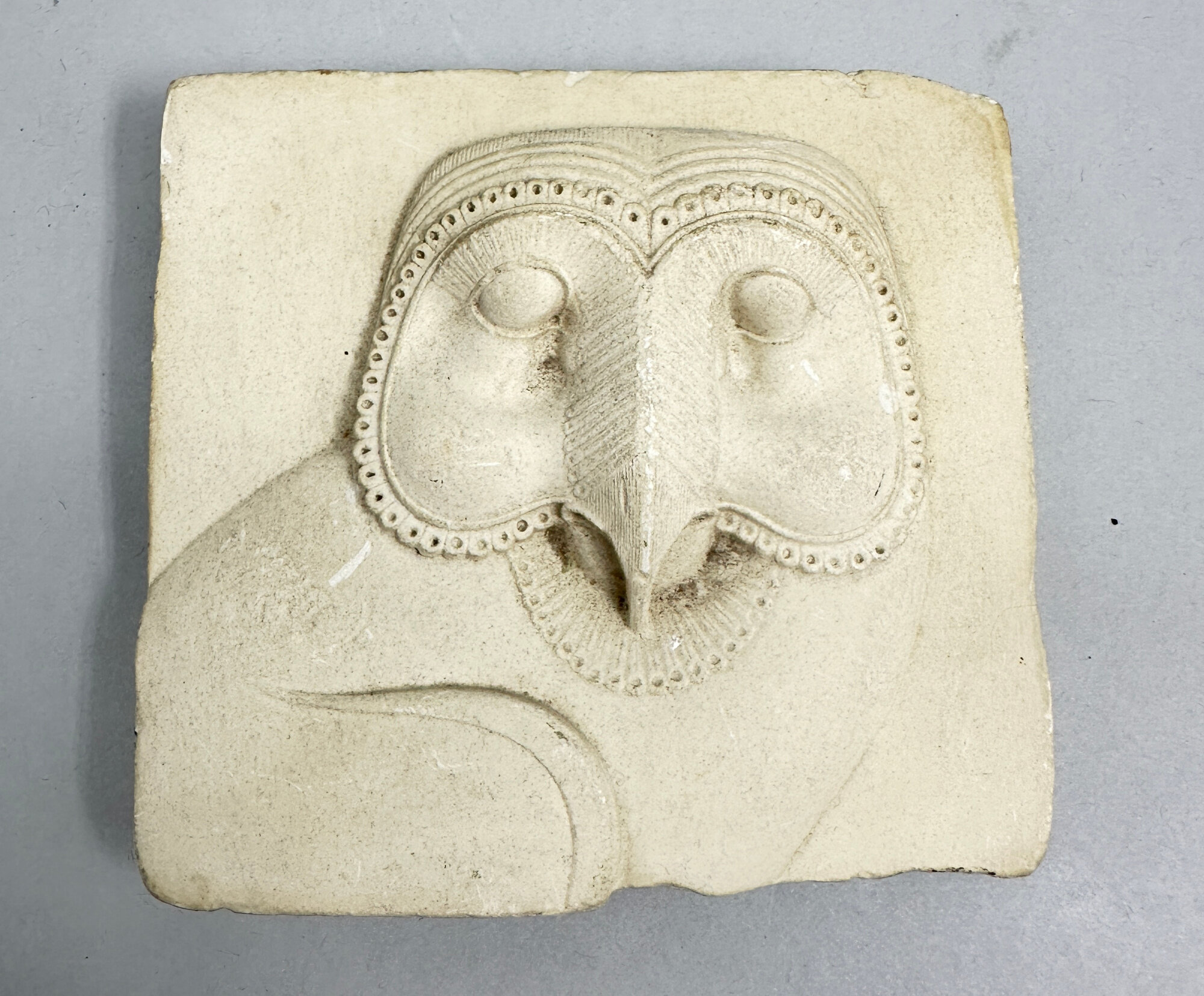
Metropolitan Museum of Art Egyptian Hieroglyphic wall plaque c2000
Price: £20
Blackpool souvenir teapot c1920
Price: £35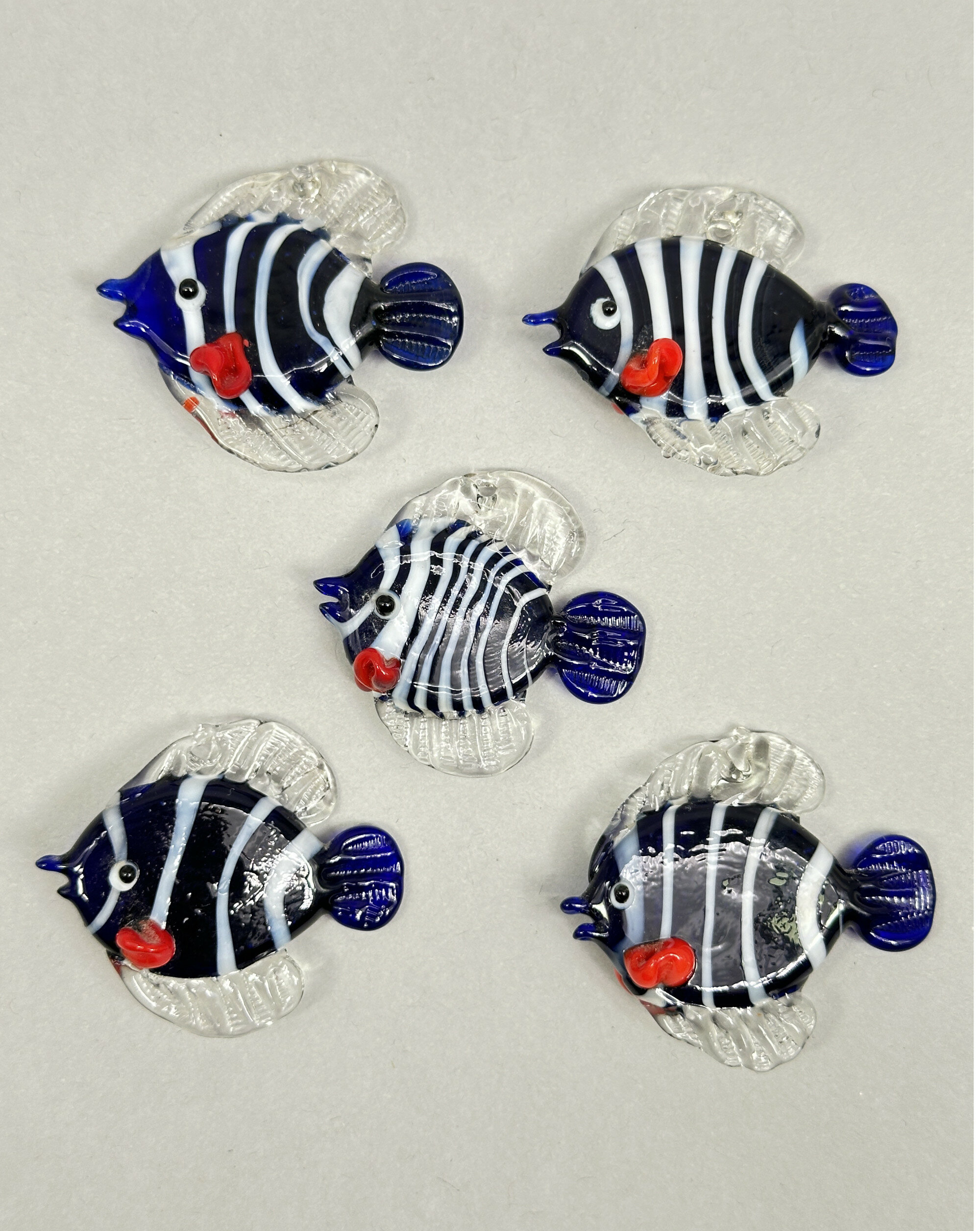
Five Murano glass fish pendants
Price: £25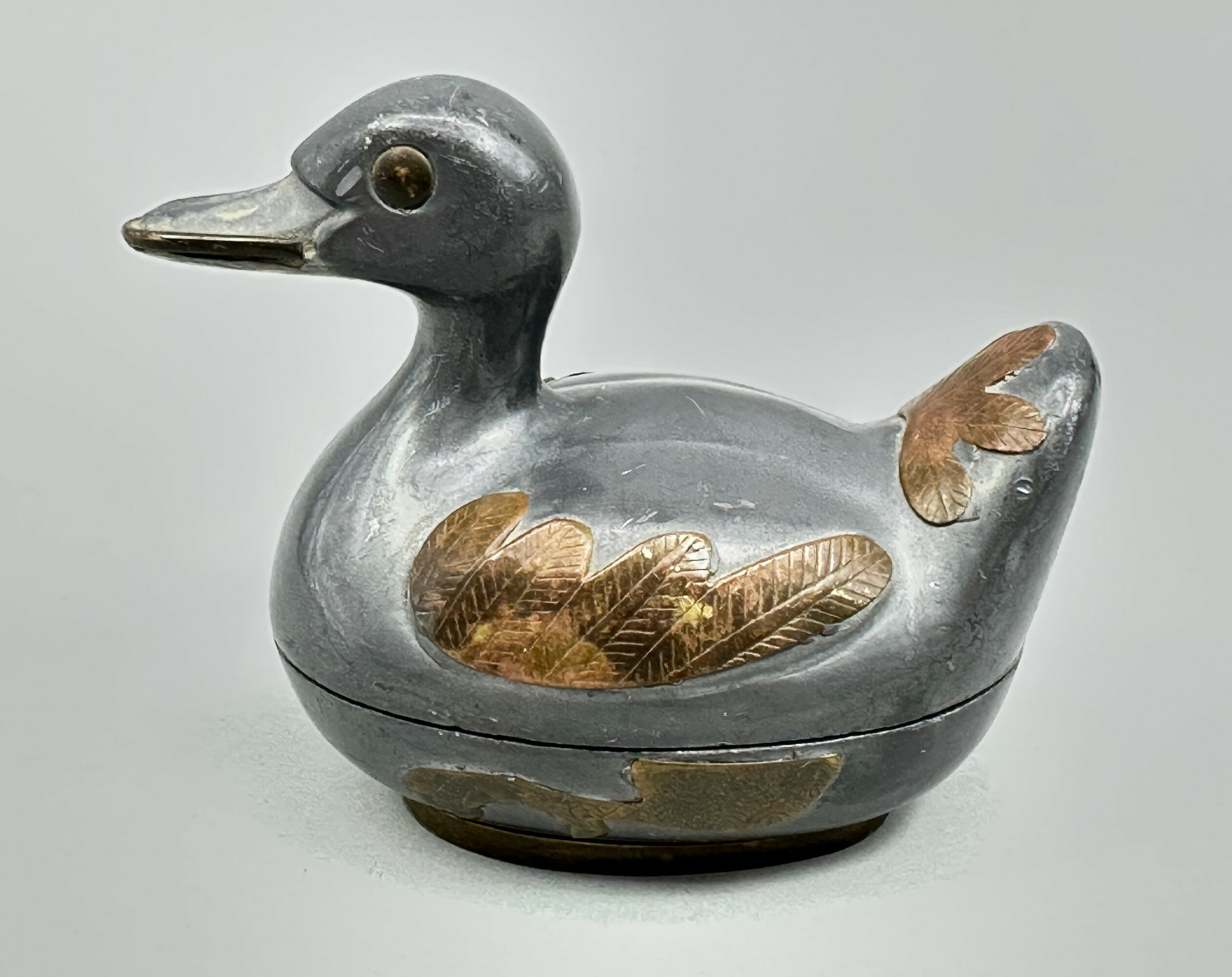
Pewter and brass box and cover in the form of a Mallard Duck, Gatco, Hong Kong, 1960s
Price: £25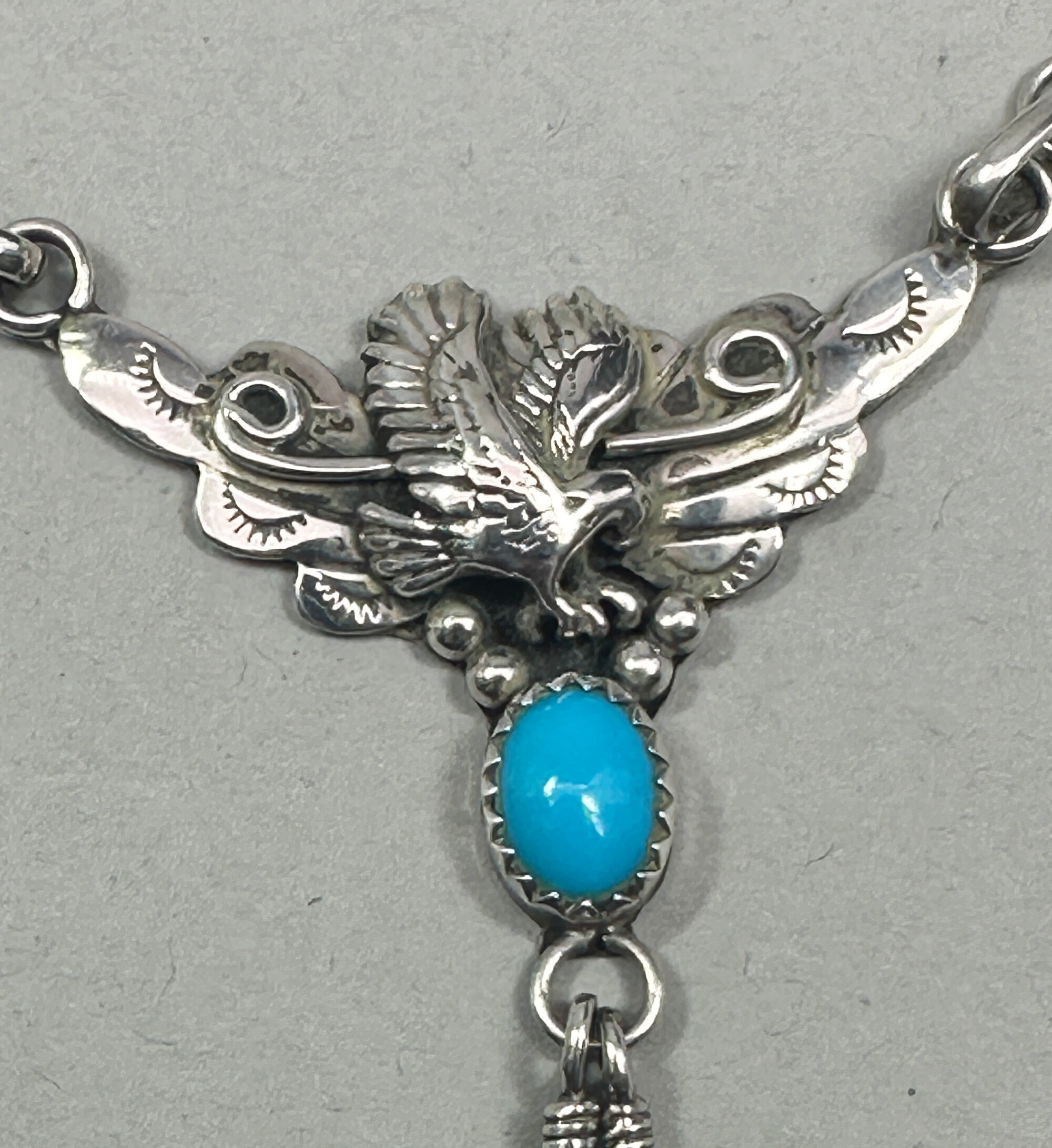
Navajo suite of Necklace and Earrings set with sleeping beauty turquoise, 1990s
Price: £250The Navajo are a Native American people of the Southwestern United States with the largest reservation in the country, mainly concentrated in Arizona and New Mexico. Their silverwork, which they began to produce in the late C19th, came to enjoy great popularity and often employed the use of turquoise. This matching suite is an excellent example of their work. The necklace is marked ‘Sterling’ for 925 silver and the same material would have been used throughout, providing a perfect backdrop to the ‘sleeping beauties’.
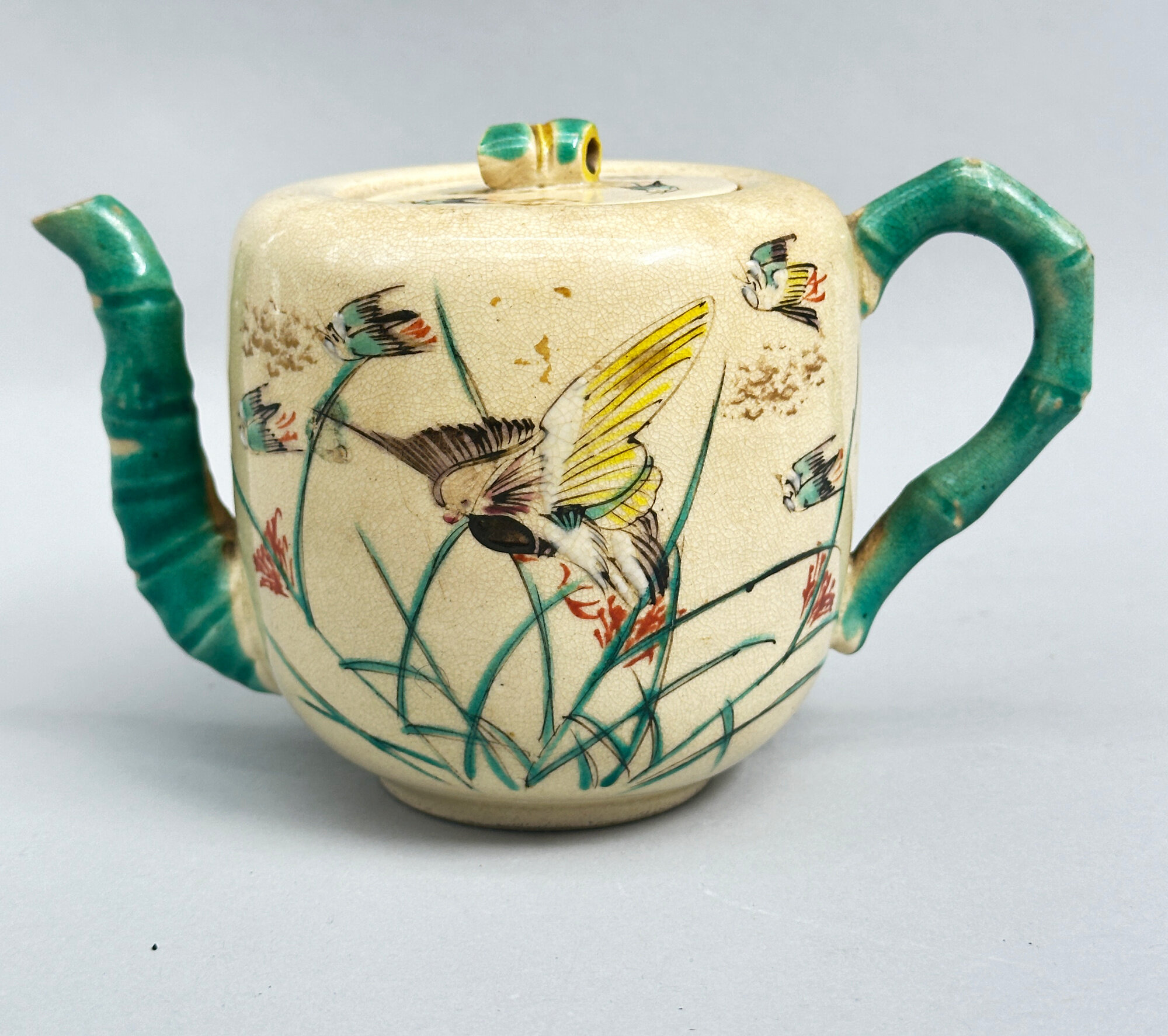
Japanese Awata ware Teapot and Cover, signed, circa 1900
Price: £25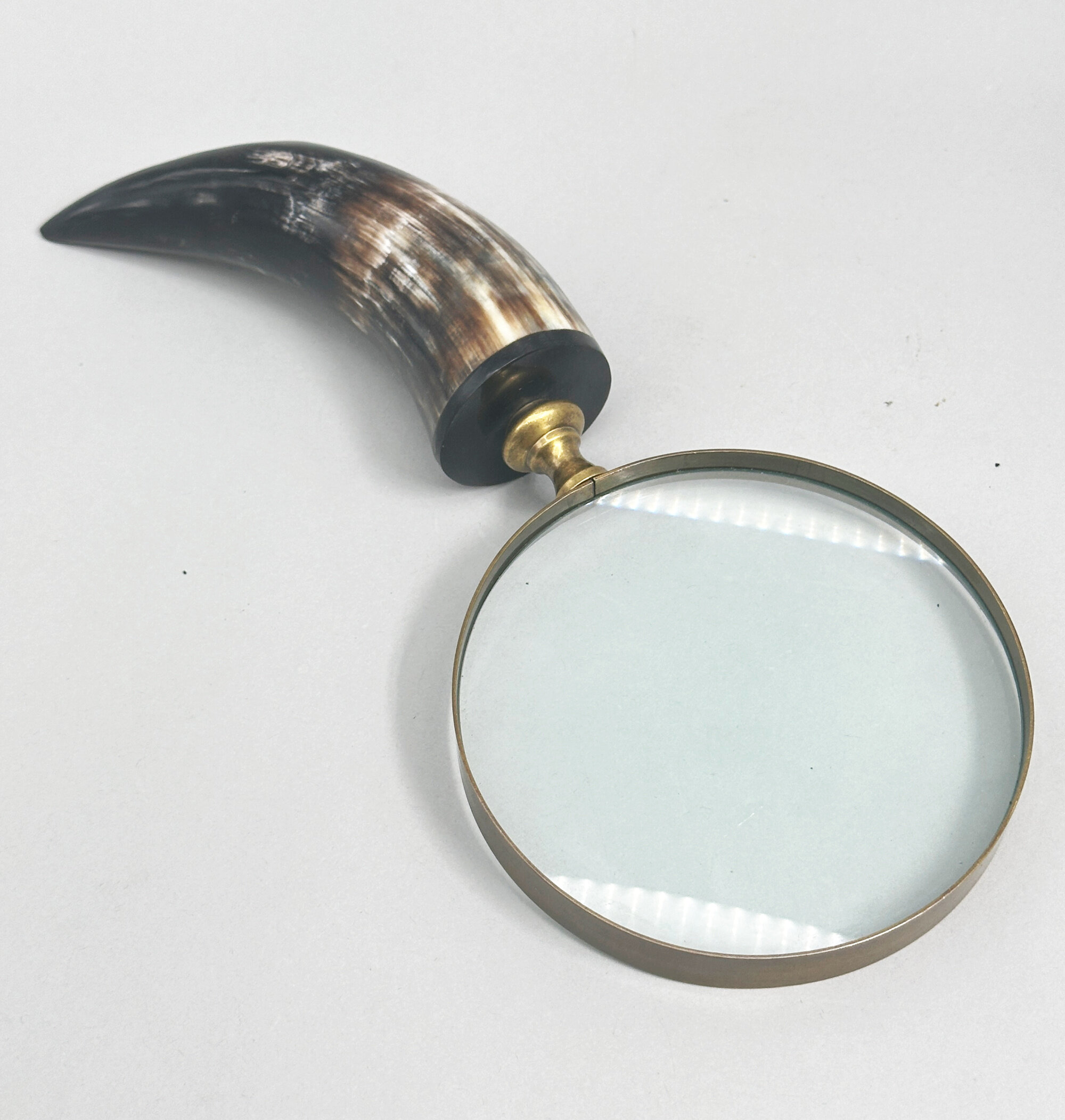
Edwardian large text magnifying glass with horn handle, early C20th
Price: £25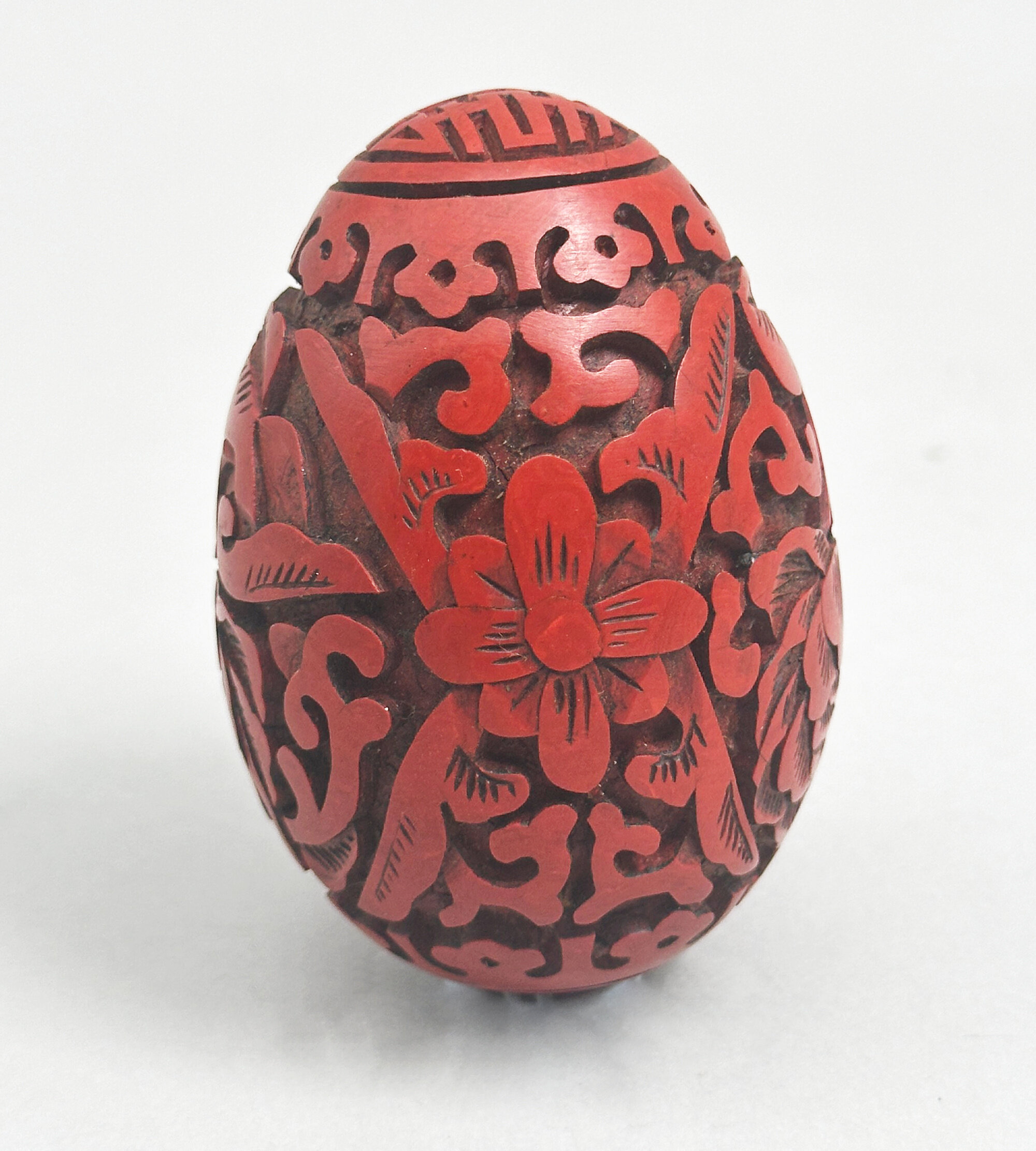
Chinese Cinnabar Lacquer Egg, C20th
Price: £55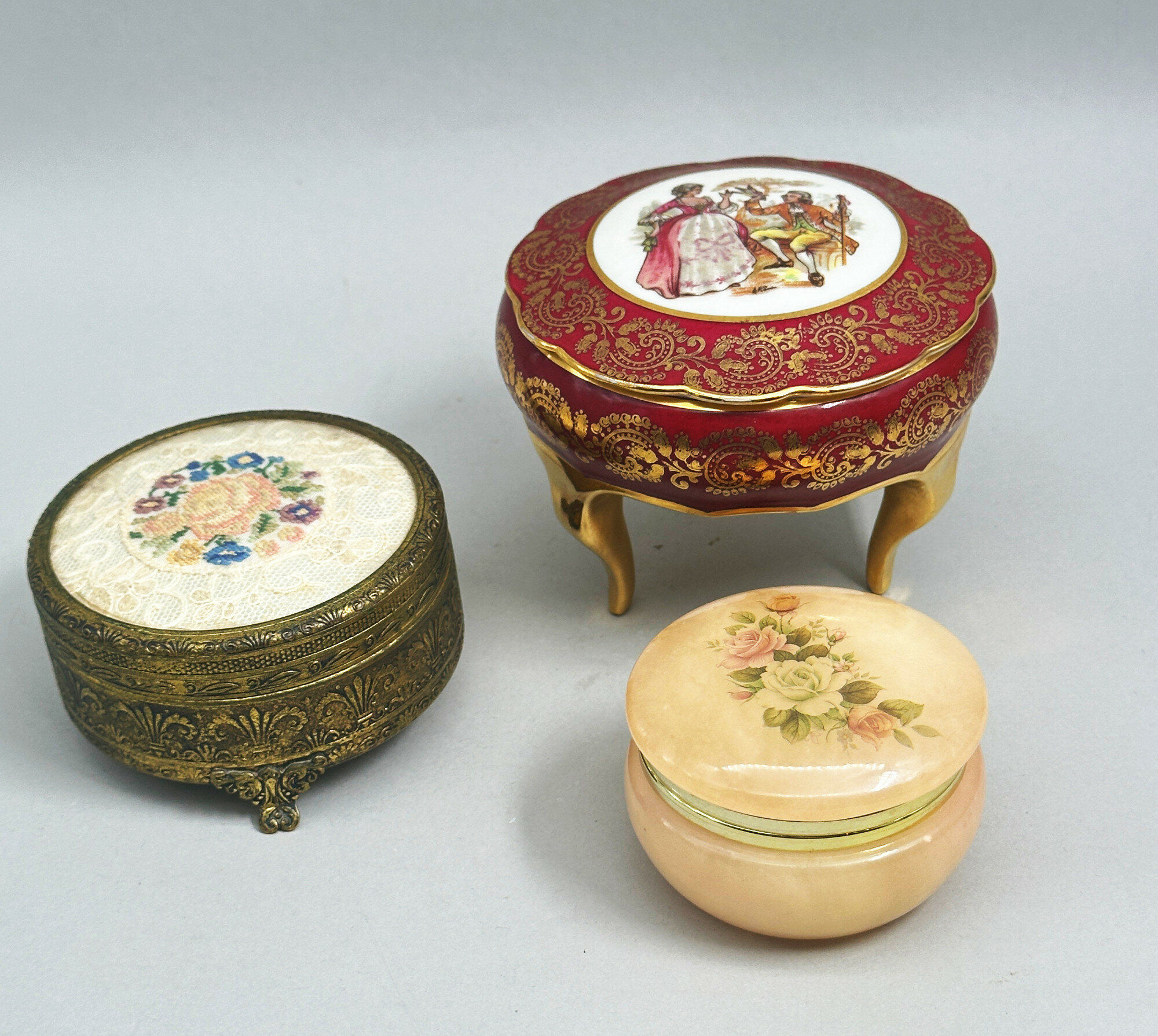
Three Powder Boxes, gilt metal, alabaster and porcelain, mid C20th
Price: £45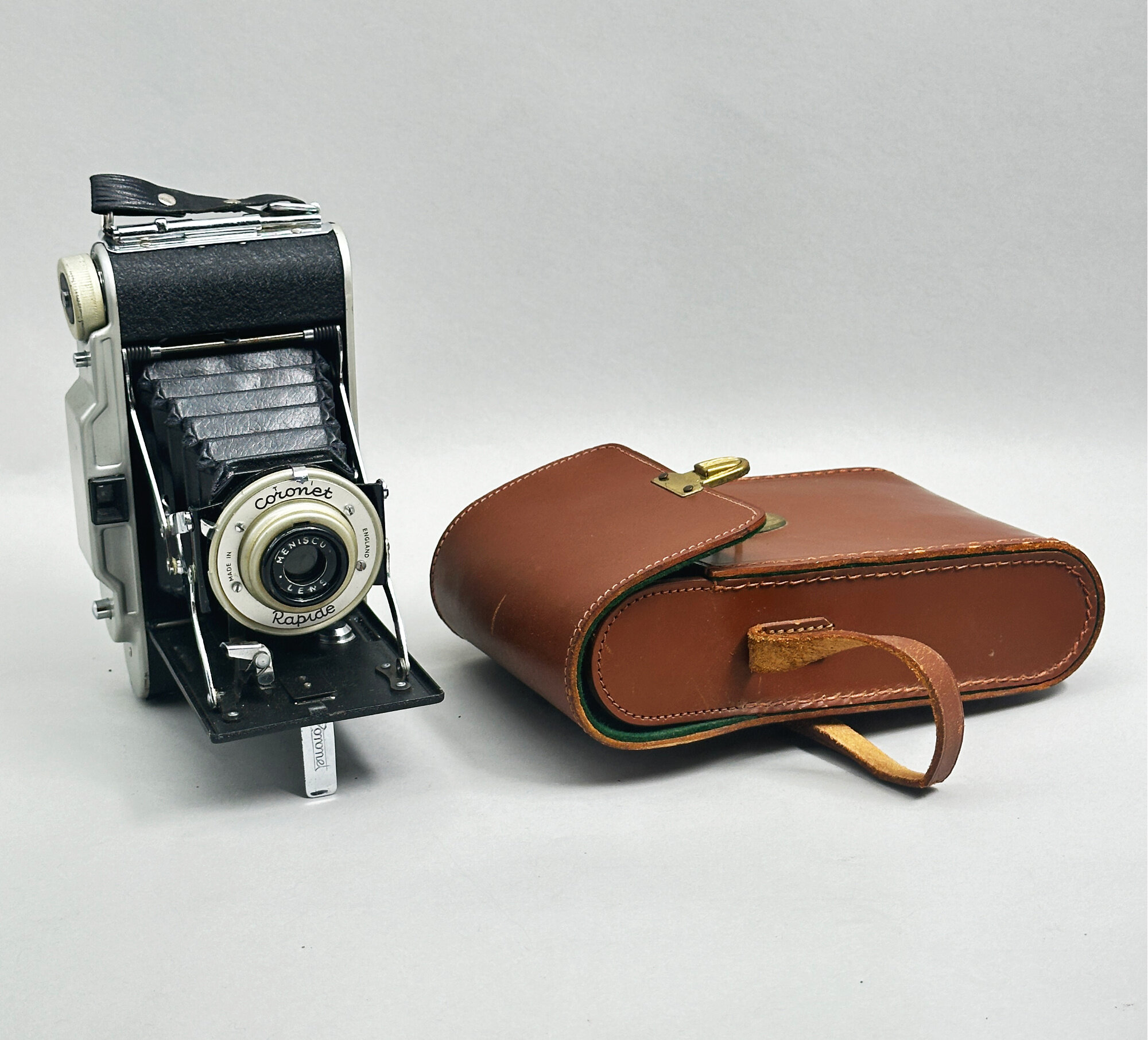
Mint Coronet Rapid camera with case 1950s
Price: £45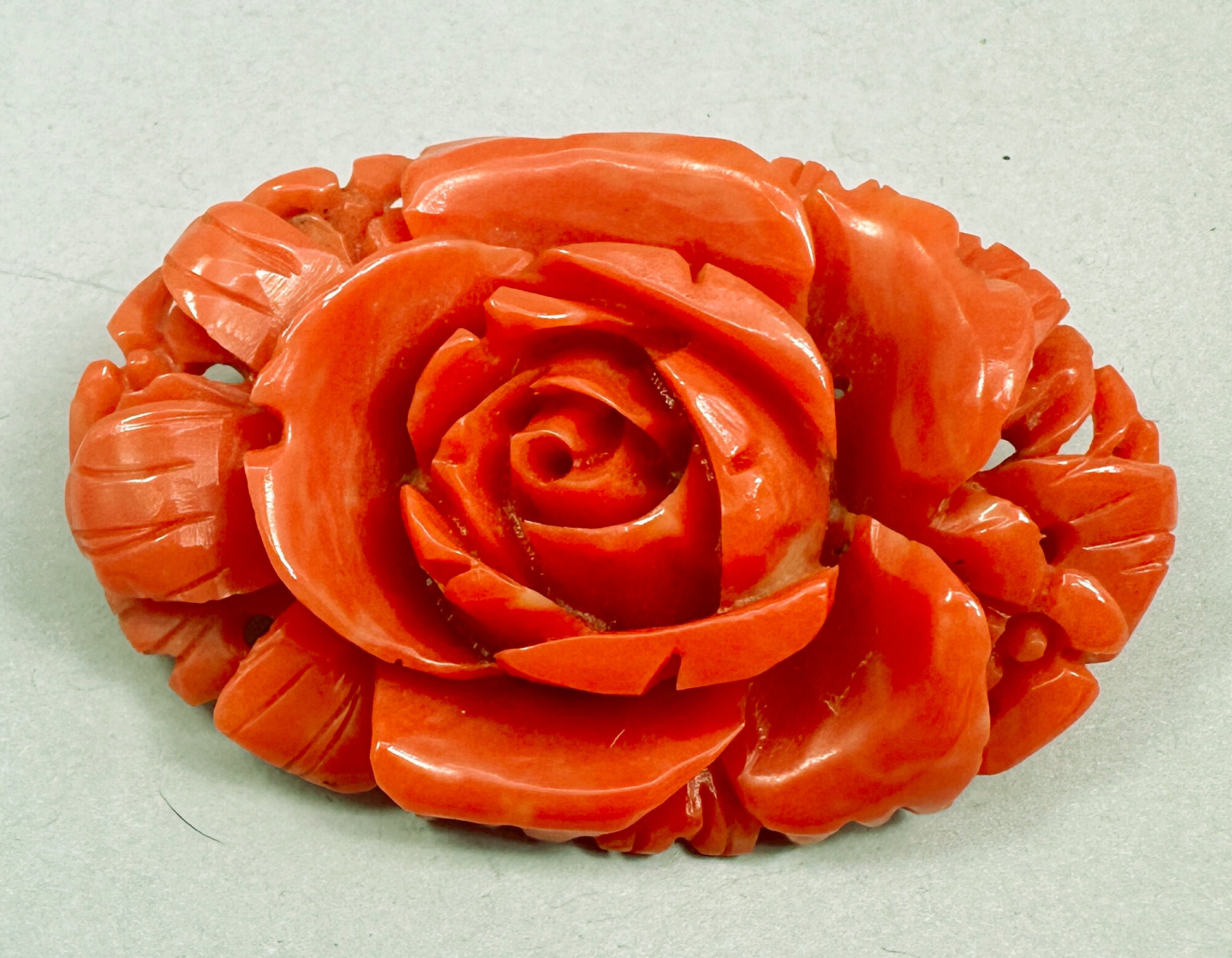
Large faux coral Bakelite brooch, British c1940
Price: £65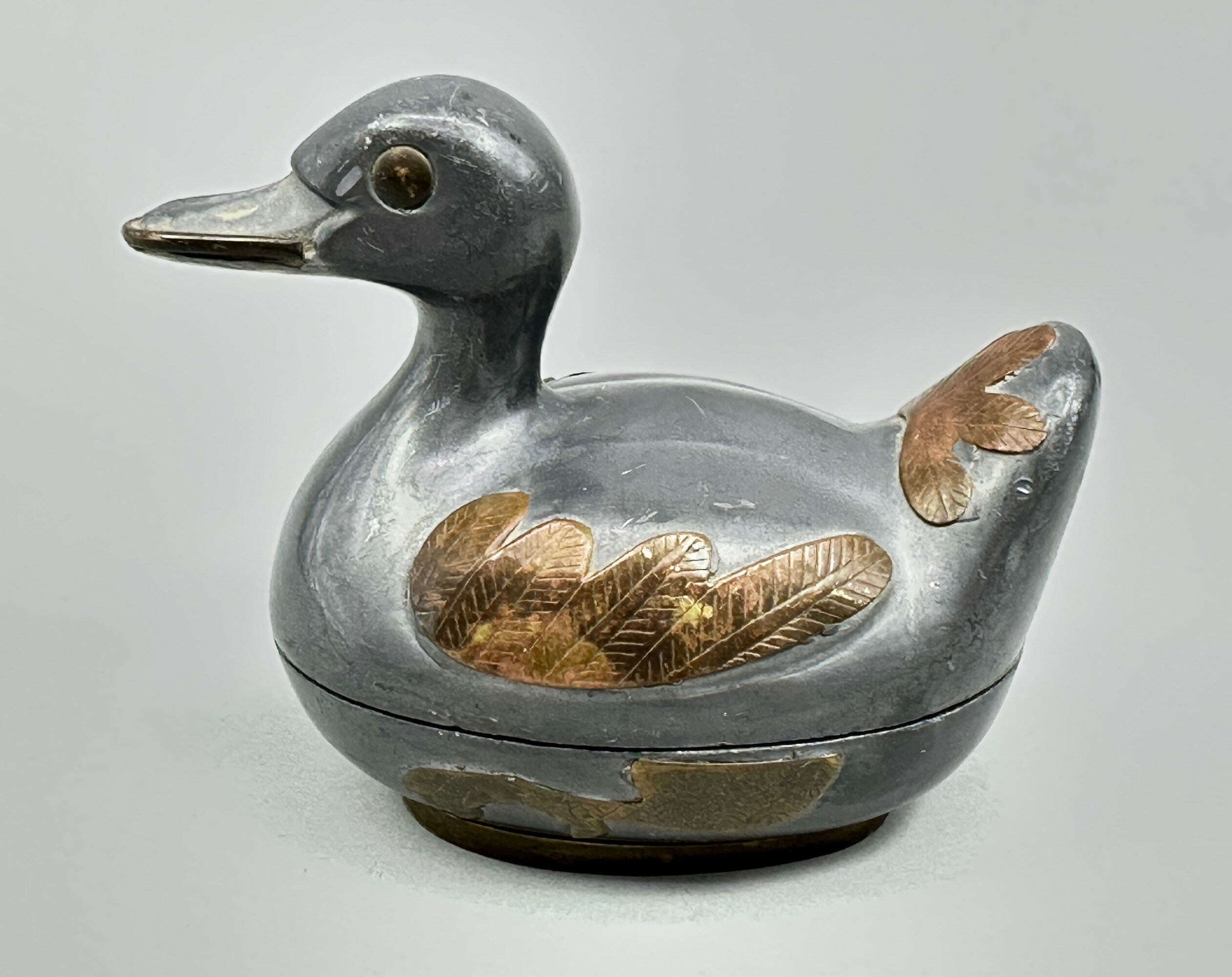
Pewter and brass box and cover in the form of a Mallard Duck, Gatco, Hong Kong, 1960s
Price: £25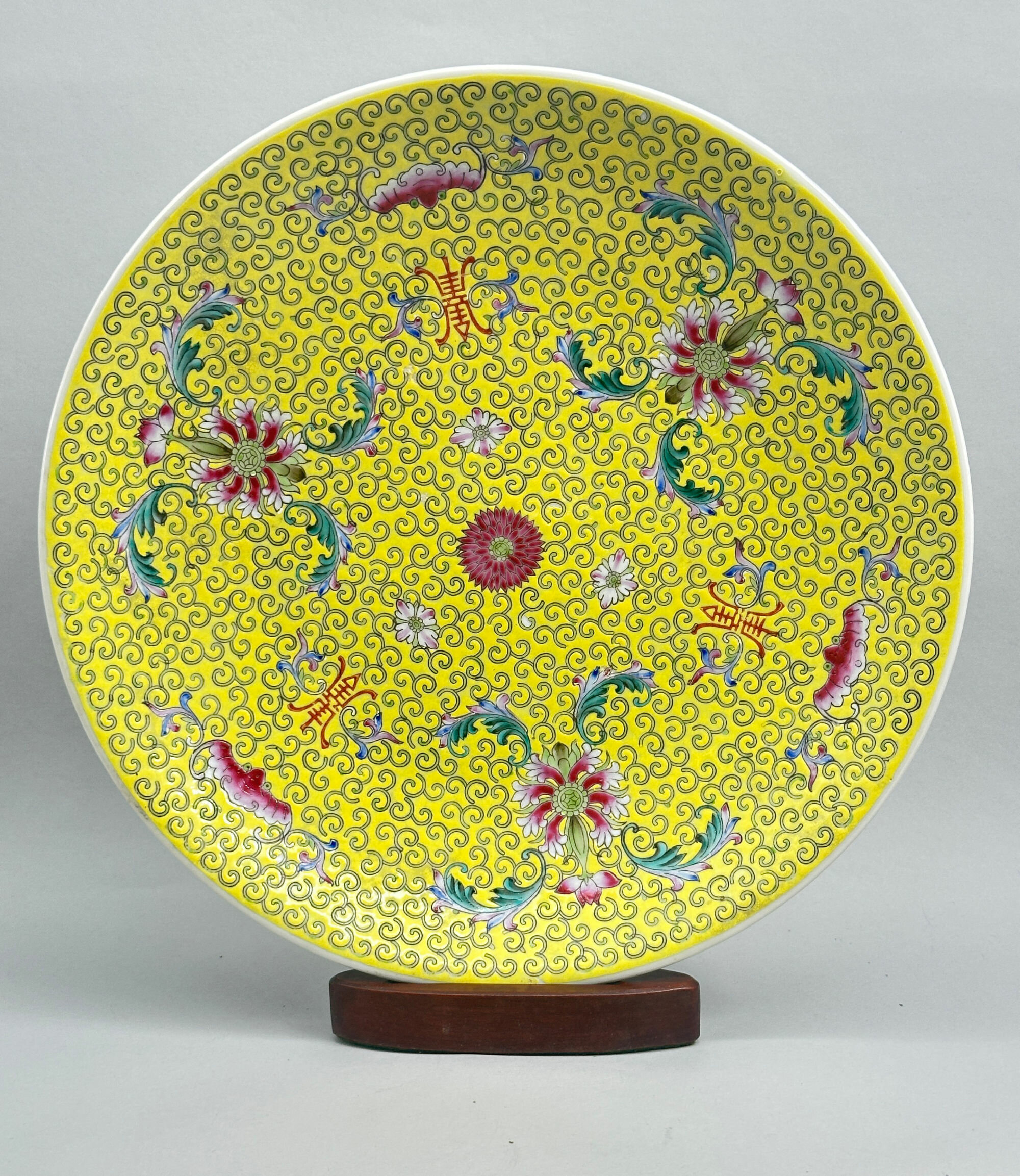
Chinese Yellow Ground Famille Rose Charger, 1950s/early 1960s
Price: £55This is a fine example of the porcelains made at Jingdezhen, for centuries the chief centre of ceramic production in China, in the early years of the People’s Republic of China (1949-). Soon after the communists took control, the kilns at Jingdezhen were organised into co-operatives, each with a number. Many of their pieces were marked and the form of the mark determines the date of production. The circular marks, as here, were the earliest allowing a dating of this charger to the 1950s or possibly the early 1960s. Some of these conglomerates, for the quality can vary, retained the skills of their predecessors and produced works of high quality. This is clearly seen here in the careful and precise enamelling and the general artistry of the design employing ‘imperial’ yellow with the symbolism of happiness (bats), longevity (shou symbols), friendship and a life of ease (chrysanthemum) and fruitfulness and offspring (lotus), all combining to produce a piece well worthy of its many predecessors.
Please note that the wood stand is for display purposes only and is not incuded with this lot.
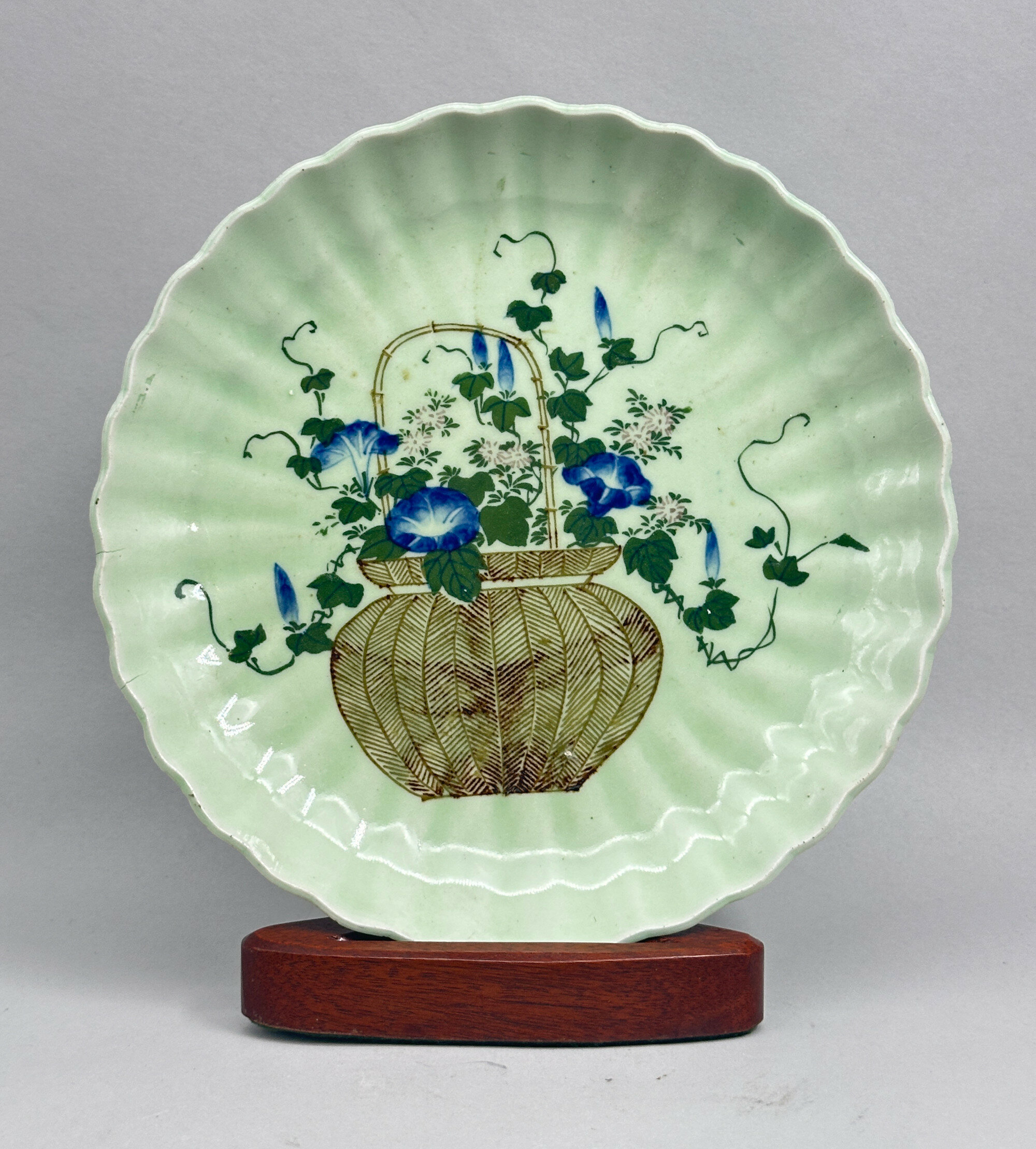
Japanese Celadon Dish decorated basket of flowers, circa 1900
Price: £45Celadon glazed wares with enamel decoration in fairly muted colours are a familiar product amongst the ceramics produced by Japanese potters at the end of the nineteenth century but examples of this type of dish are rather less commonly found. The basket of flowers is a regular decorative feature of Chinese ceramics, but given here a slightly different interpretation with the depiction of lotus, the emblem of summer. The mark probably imitates Chinese ‘commendation’ marks inscribed within the foot rim, another nod on the part of the Japanese potters towards their Chinese counterparts.
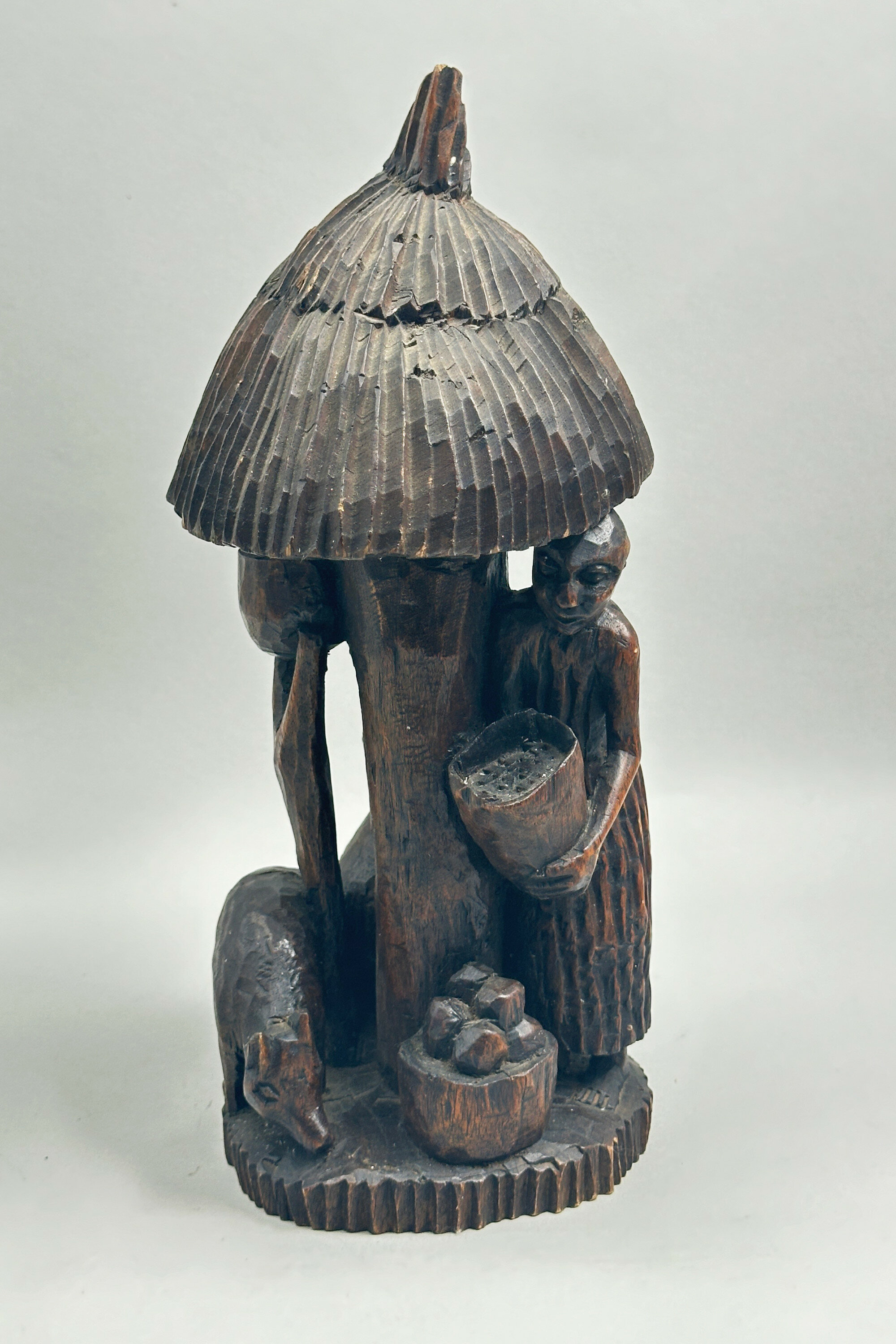
African wood figural group, Guinea c1970
Price: £35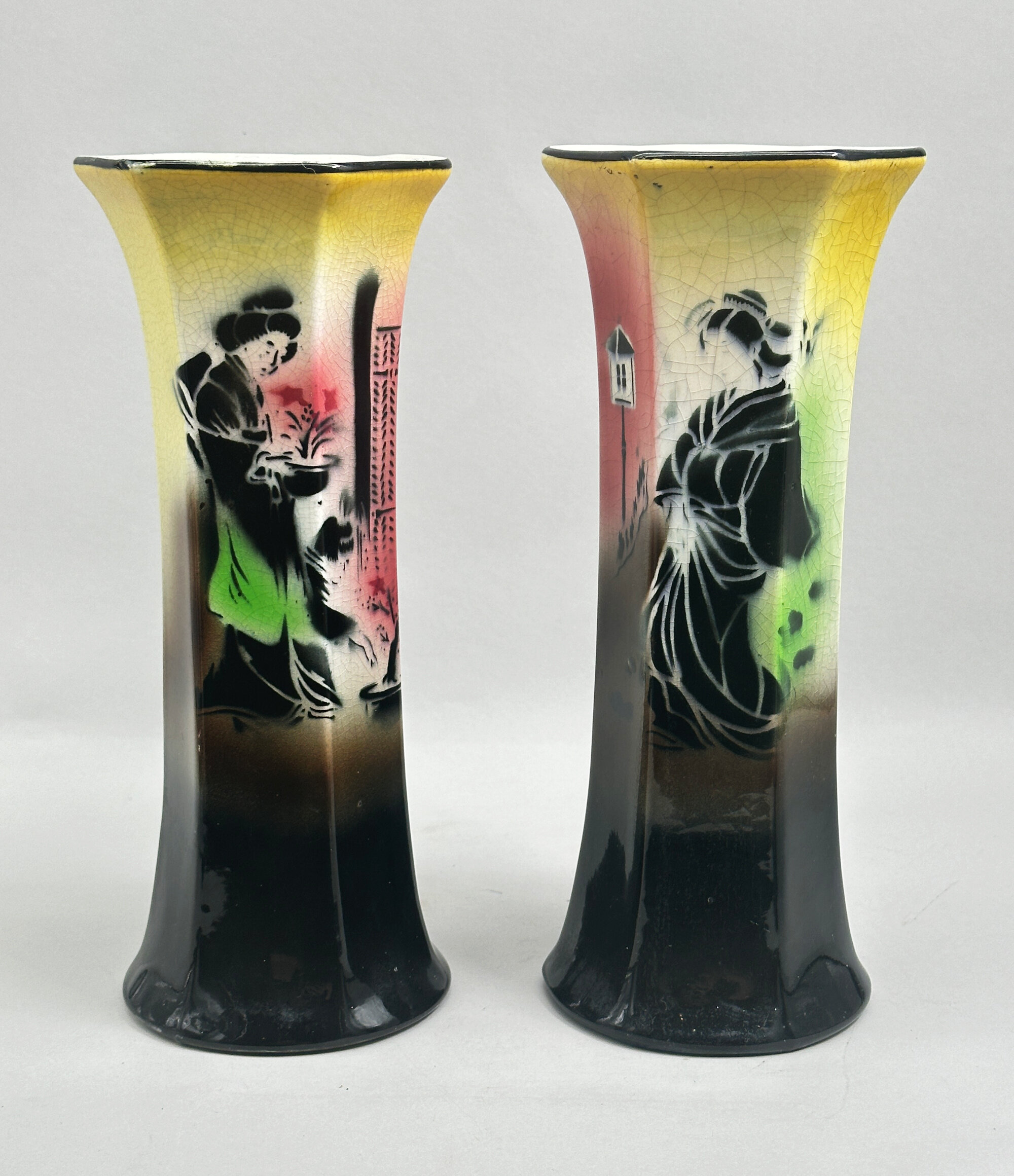
An unusual pair of Art Deco style Japonaiserie ceramic vases, probably French 1920s/1930s
Price: £75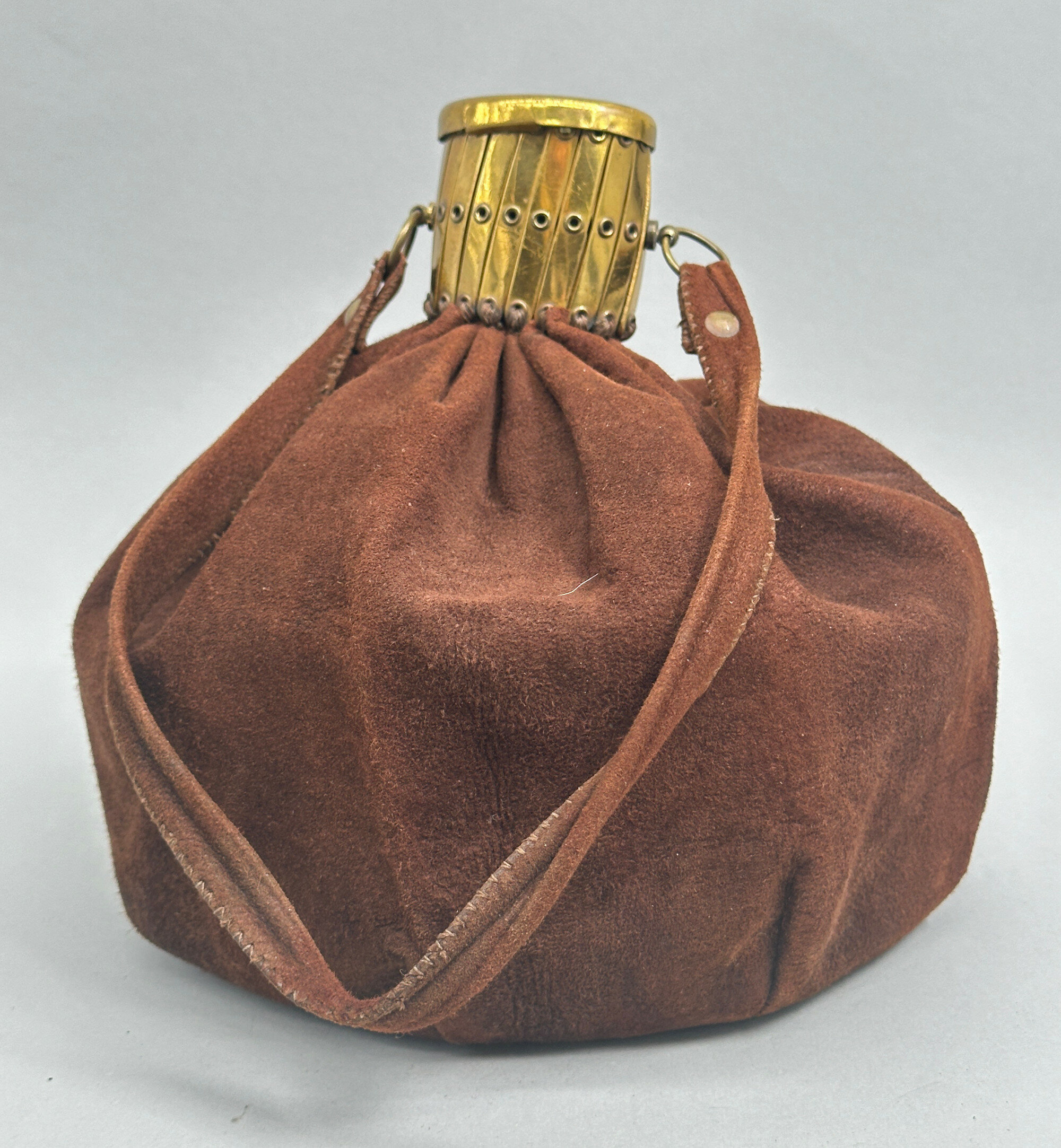
Large suede pouch bag with concertina opening c1930
Price: £65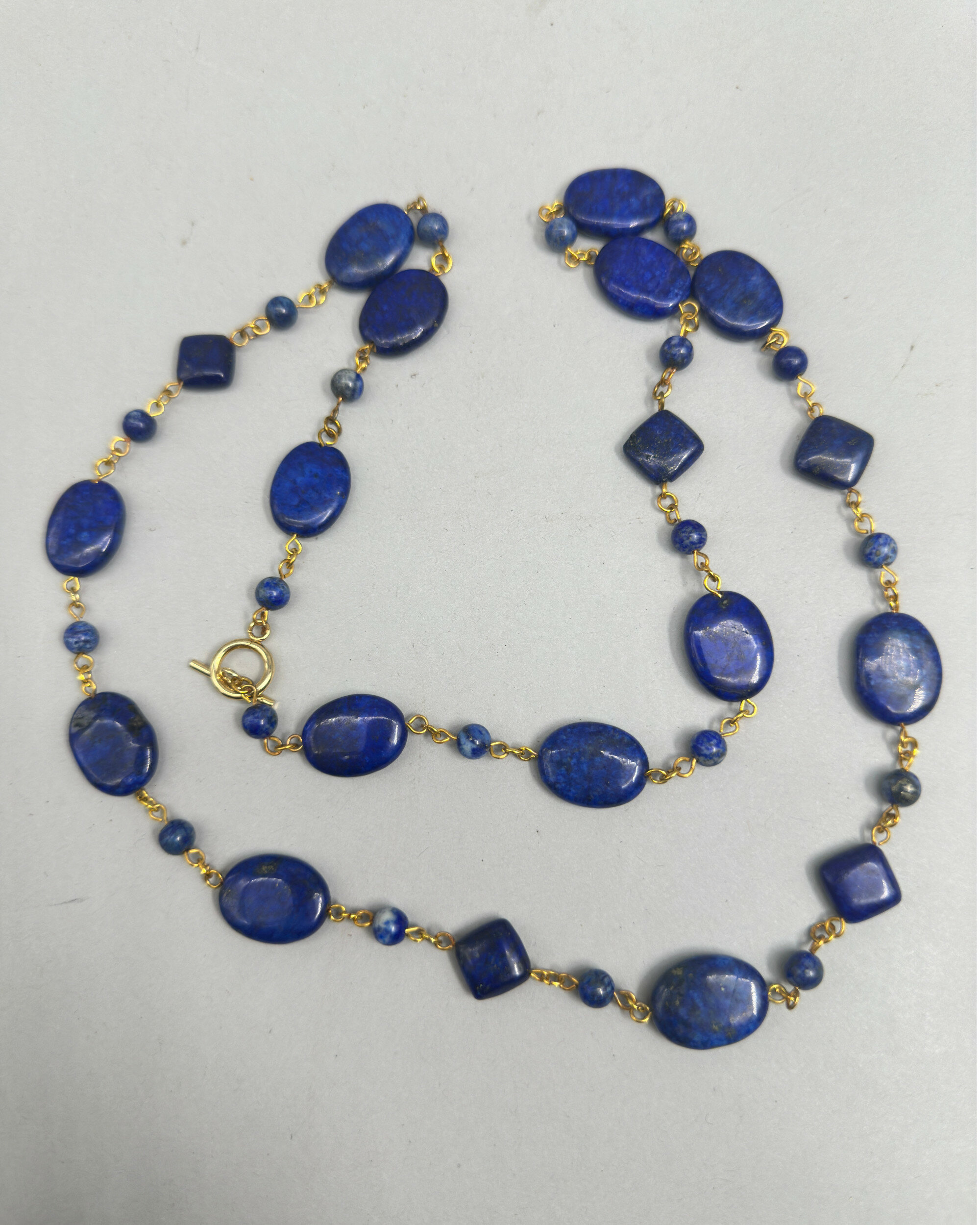
Long lapis lazuli bead necklace c1980
Price: £30
Large faux coral Bakelite brooch, British c1940
Price: £45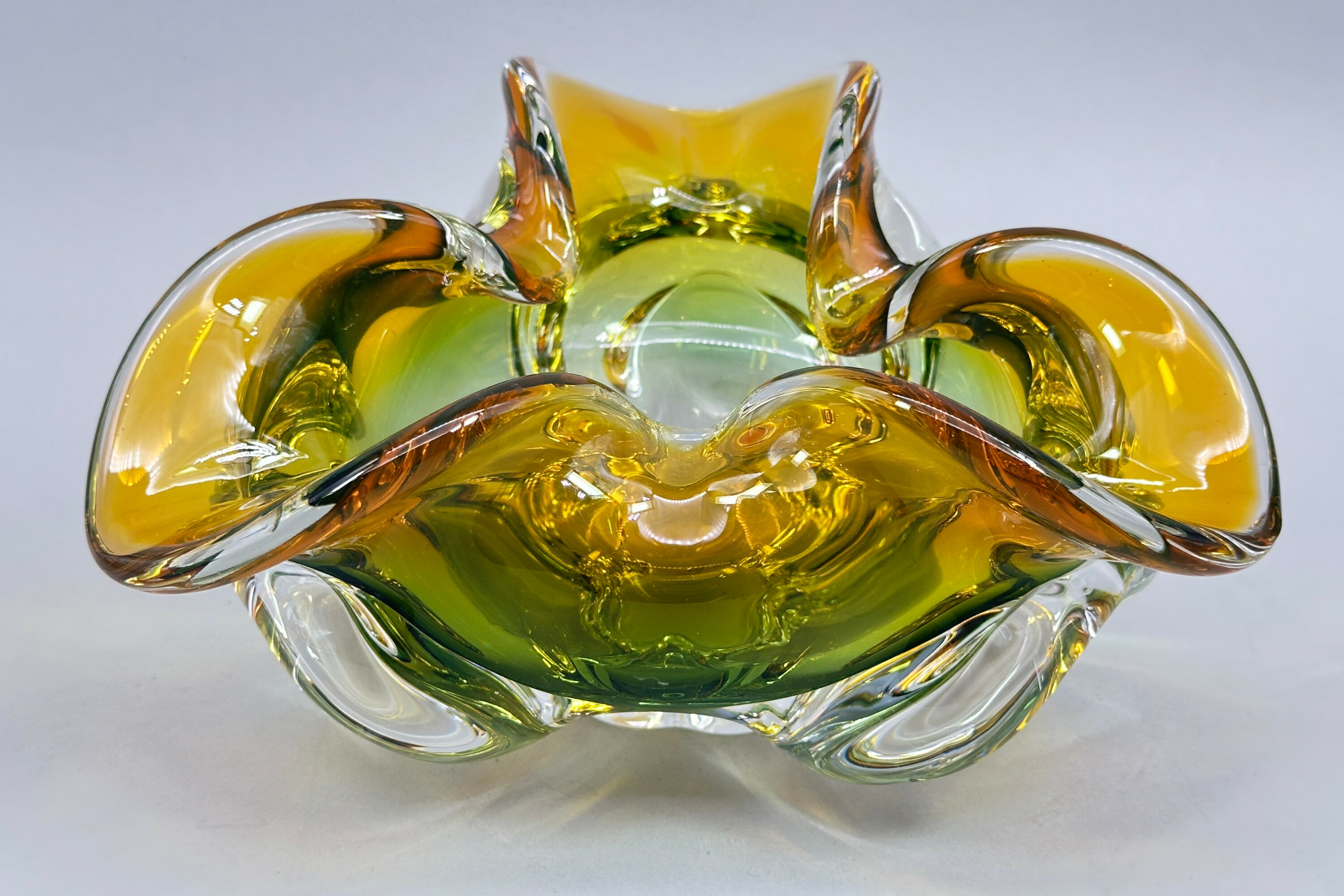
Chřibská Glass bowl designed by Josef Hospodka, Czech 1970s
Price: £75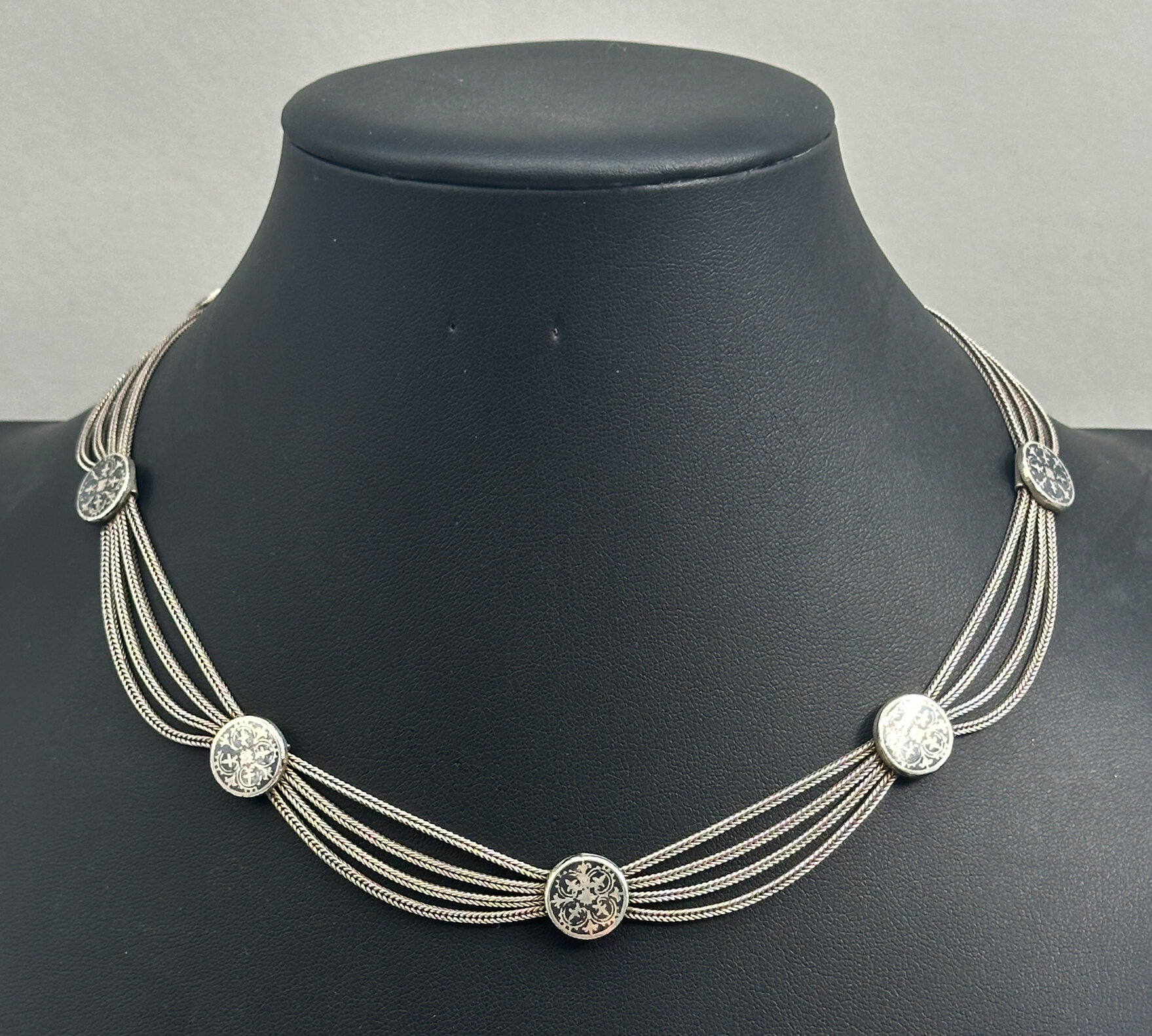
Islamic Silver Necklace with Niello work plaques, c1930
Price: £75The technique used is that of ‘niello’ work. (The word derives either from the classical Latin word ‘nigellum’ or the later mediaeval words ‘nigello’ or ‘neelo’.) Niello is a black mixture, usually of sulphur, copper, silver, and lead and used as an inlay on engraved or etched metal, especially silver. Added as a paste, it hardens to a black colour after firing and is then polished. Here it is the ground that formed from niello while the design shows though in silver, a less common version.
There is much skill in the craftsmanship here and the result is a piece of classic and timeless simplicity.

Pair of Beige Opaline Glass Vases, enamelled decoration, probably French late C19th
Price: £75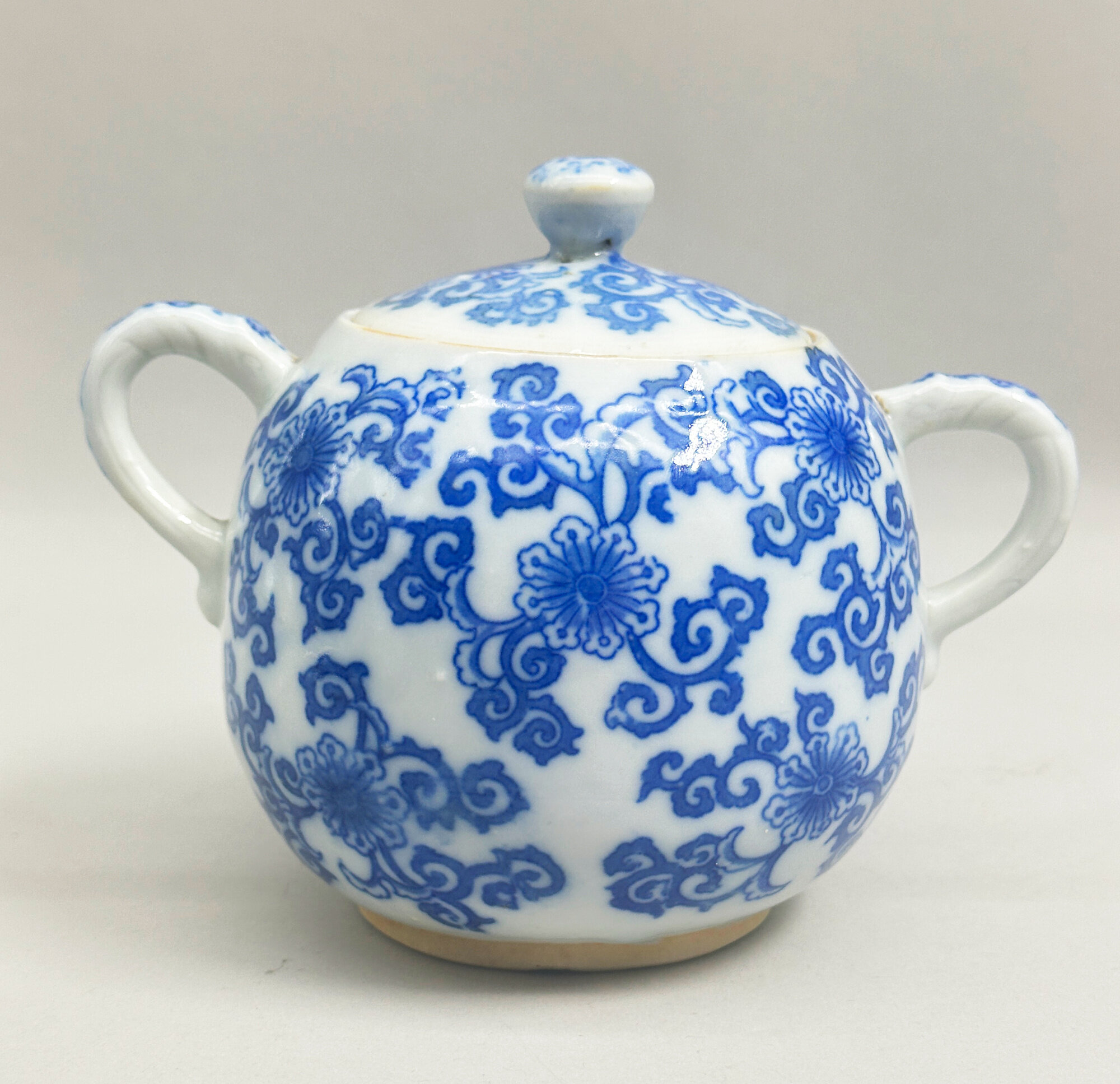
Japanese Blue and White Sugar Bowl and Cover, first half C20th
Price: £25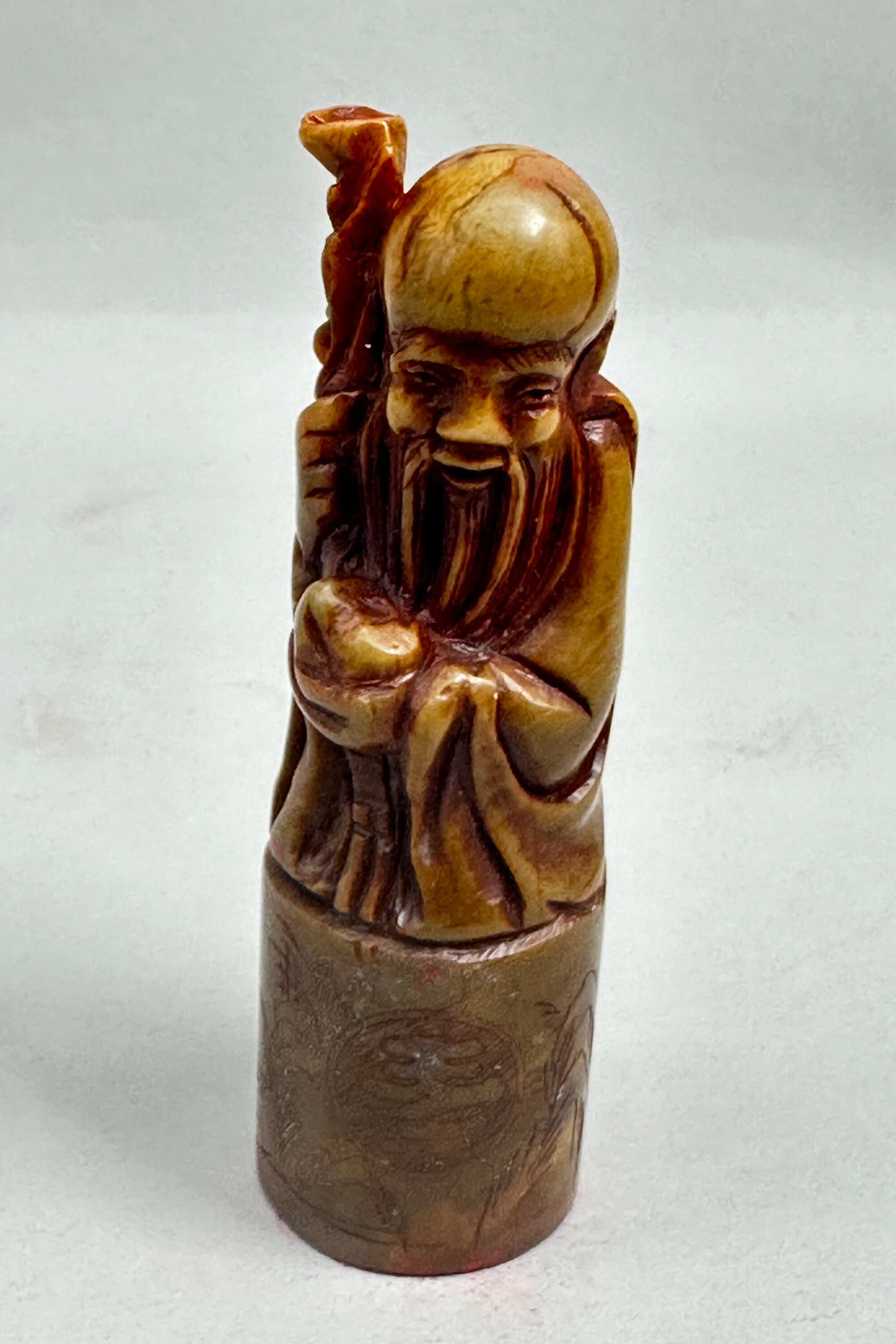
Chinese Soapstone Seal with Shou Lao, C20th
Price: £45
Japanese Arita Square Sake Flask and Cover decorated flowers, C20th
Price: £25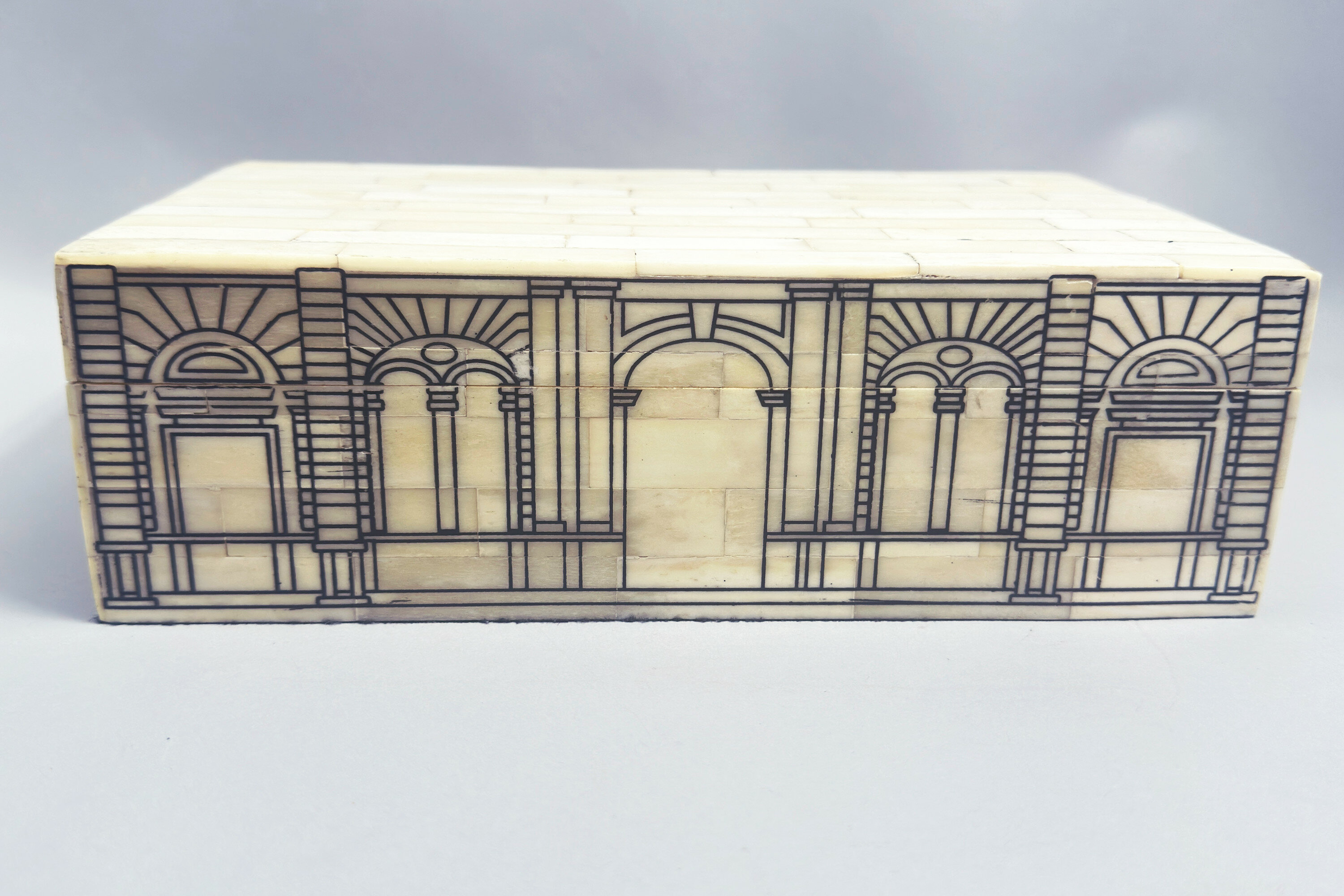
Bone parquetry box decorated in the manner of Fornasetti, Venetian, mid C20th
Price: £85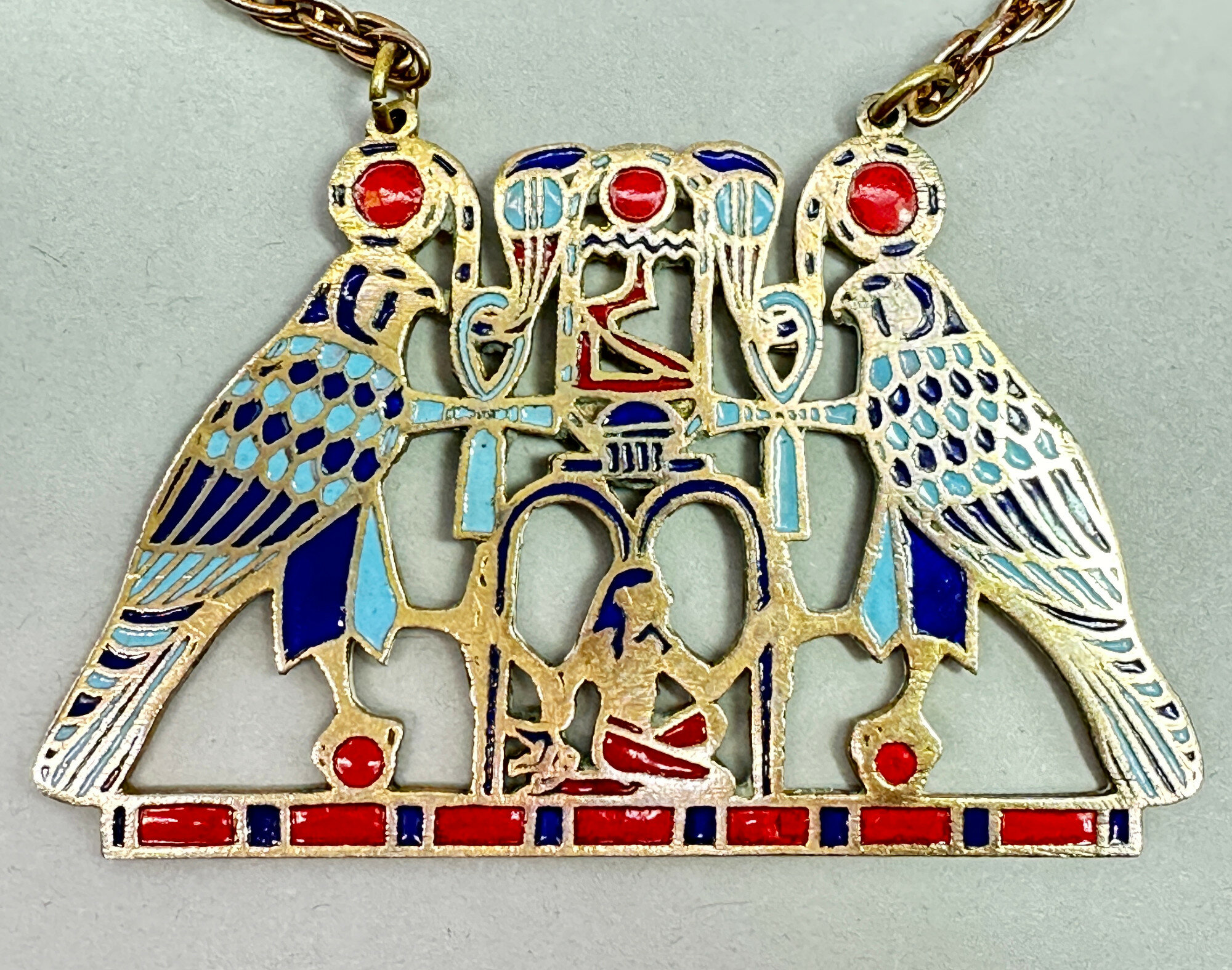
Outstanding Egyptian Revival necklace c1960
Price: £125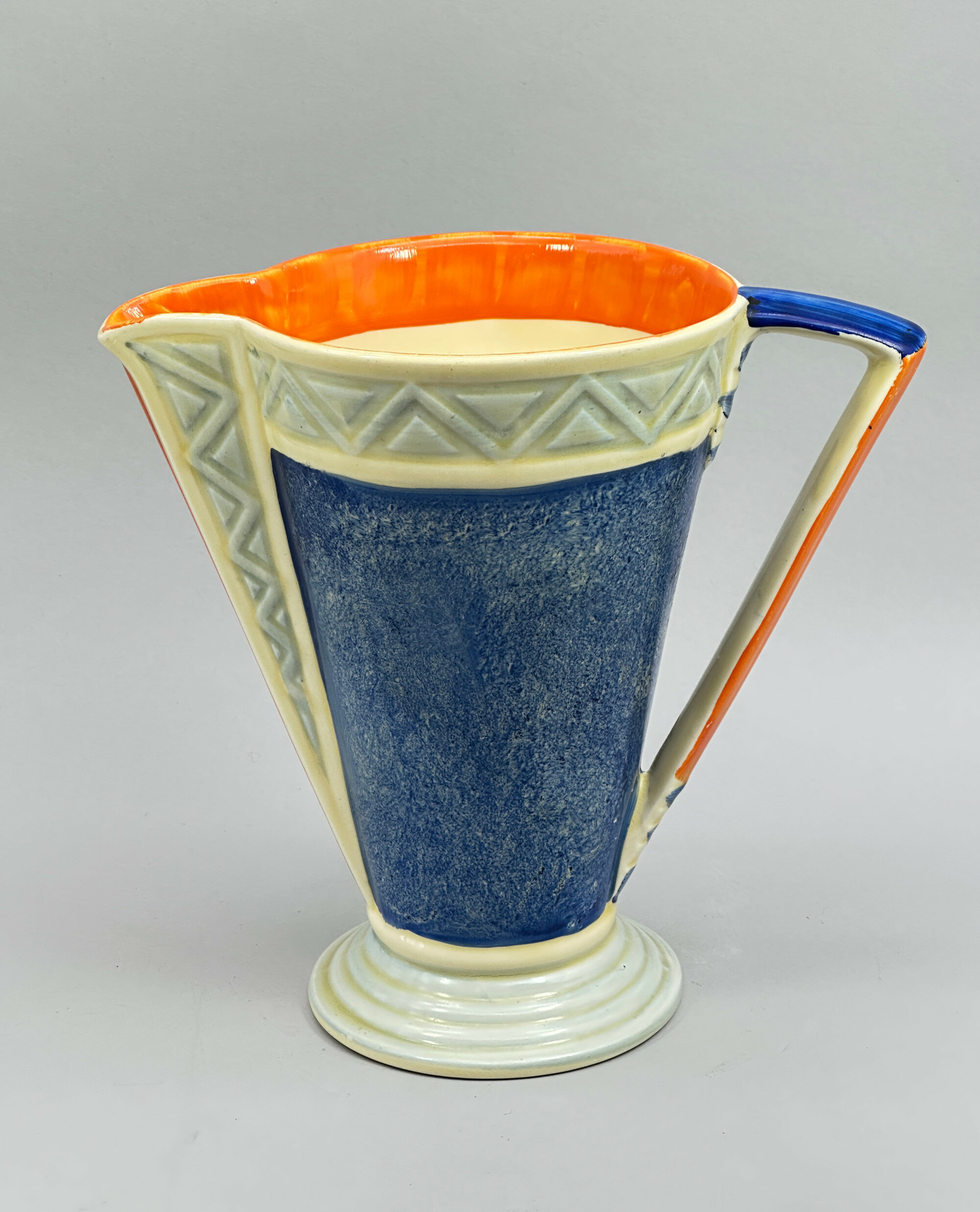
Myott Son & Co Art Deco style Jug, 1930s
Price: £75Myott Son & Co was one of famous the Staffordshire Potteries and traded for over 90 years. Founded in 1898, it began production in Stoke moving to Cobridge four years later. Its output was continuous but in 1949 the firm suffered a disastrous fire which reportedly destroyed the firm's records and pattern books and probably for this reason it relocated to Hanley. In 1969 it was bought by the American firm Interpace, but the Myott name was retained until 1976 when the company merged with Alfred Meakin Ltd, who were based in Tunstall, to form Myott-Meakin Ltd.
Myott now are best known for their Art Deco inspired designs from the 1930s. Following the success of their competitors, most notably the designs of Clarice Cliff, Myott established their own popular following and produced pieces which could rival the output of their celebrated competitors. This jug, with its clean lines and bold colours is an excellent example and like others of the same form bears the pattern umber ‘8498’. Some of their glazes were easily subject to wear and blue was less commonly used so both the condition and the colour range of this jug make it a highly desirable collector’s item.
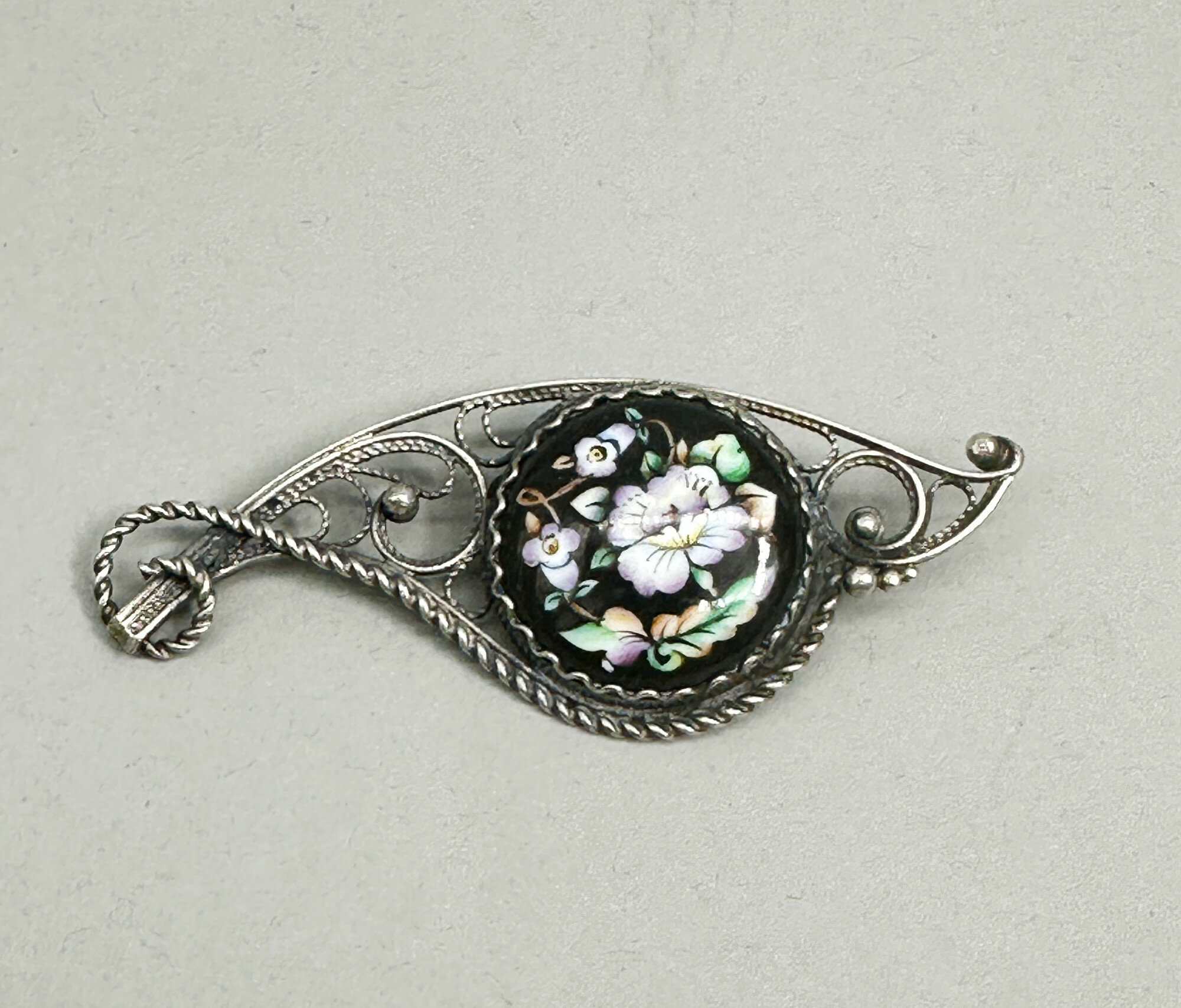
Russian Enamel Brooch, probably Rostov Finift, mid C20th
Price: £20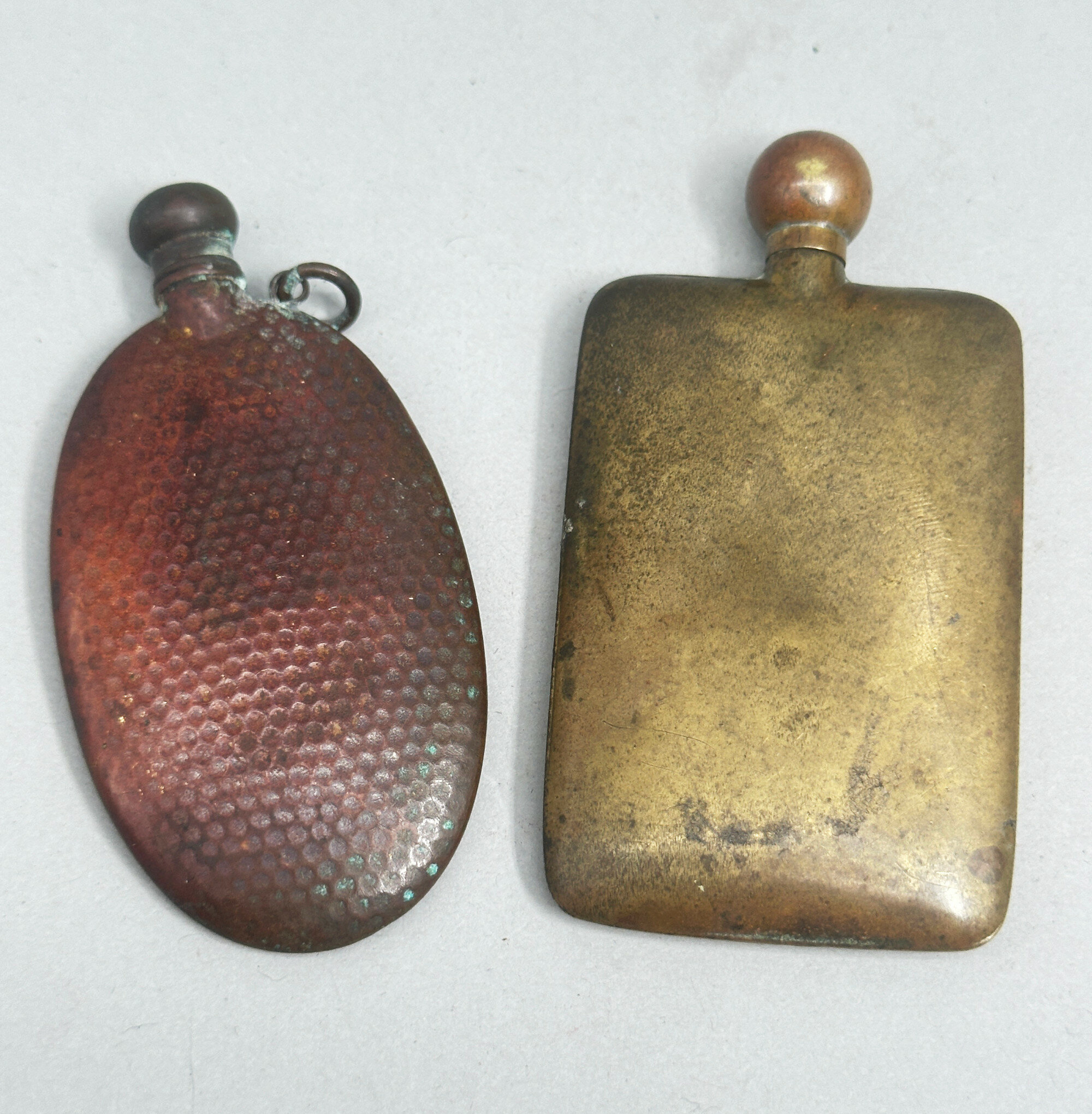
Two small metal perfume Flasks and Stoppers, 1920s
Price: £35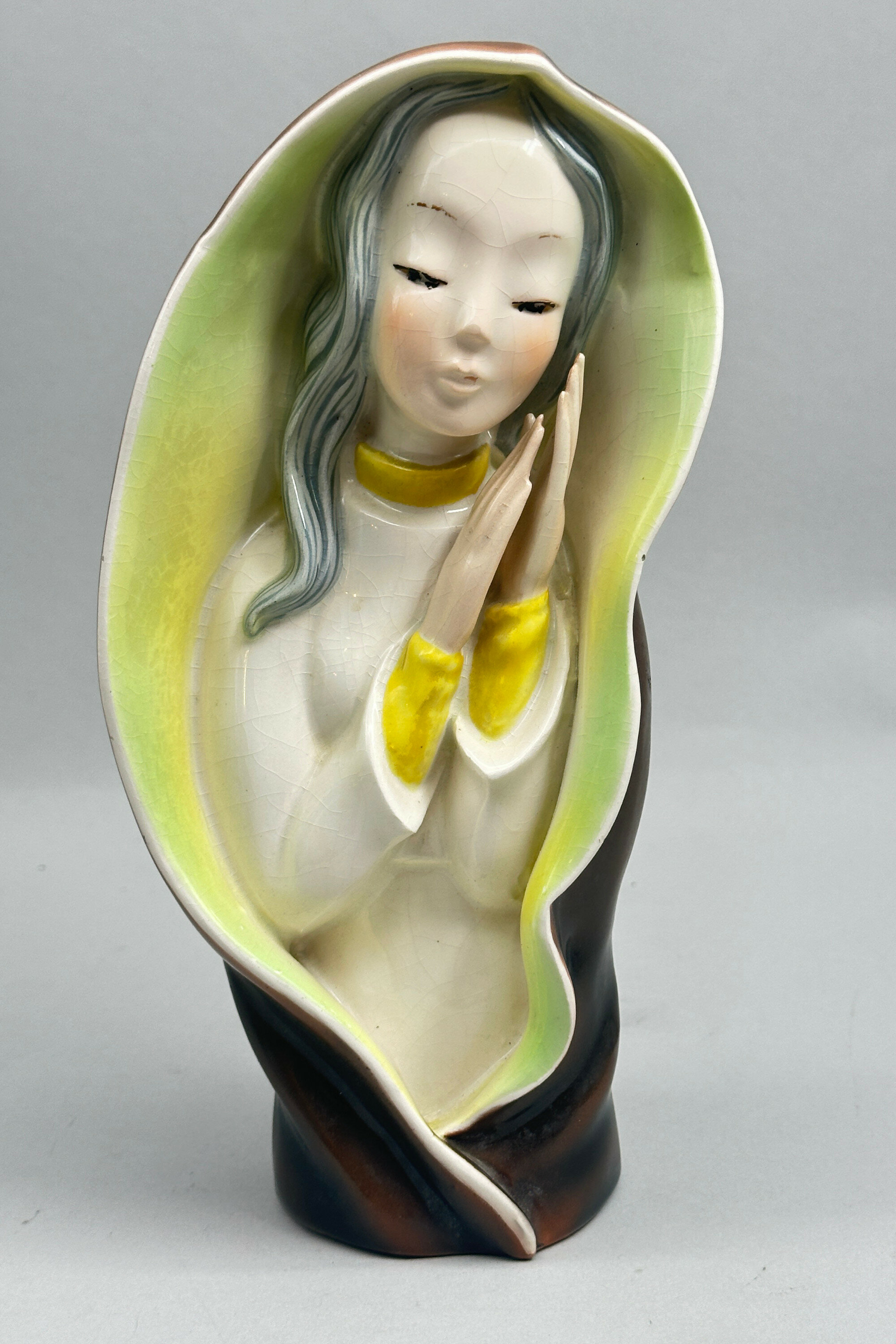
Figure of a Young Girl Praying, Continental, probably mid C20th
Price: £55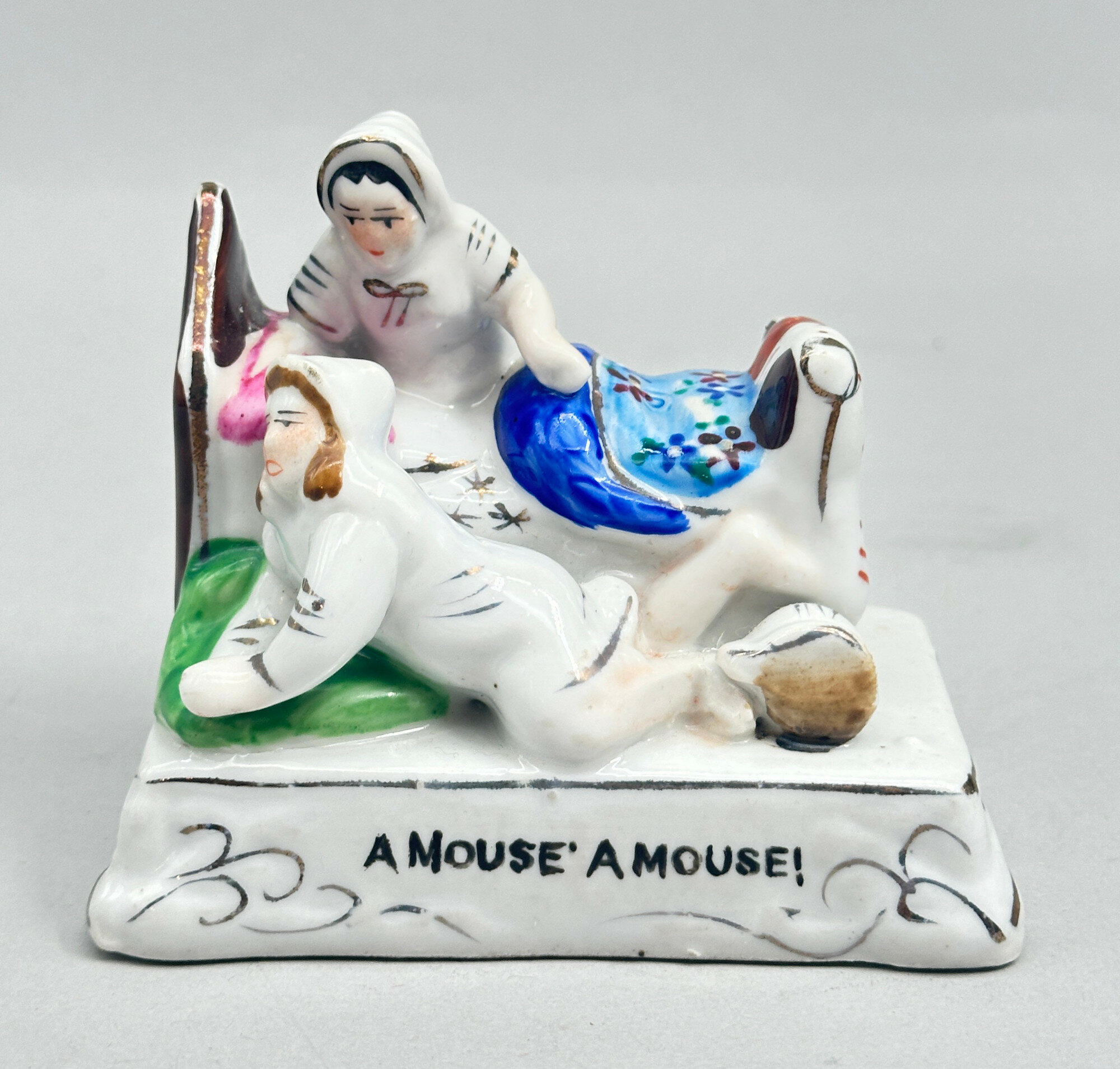
Fairing Figurine – A Mouse A Mouse, German, late C19th
Price: £25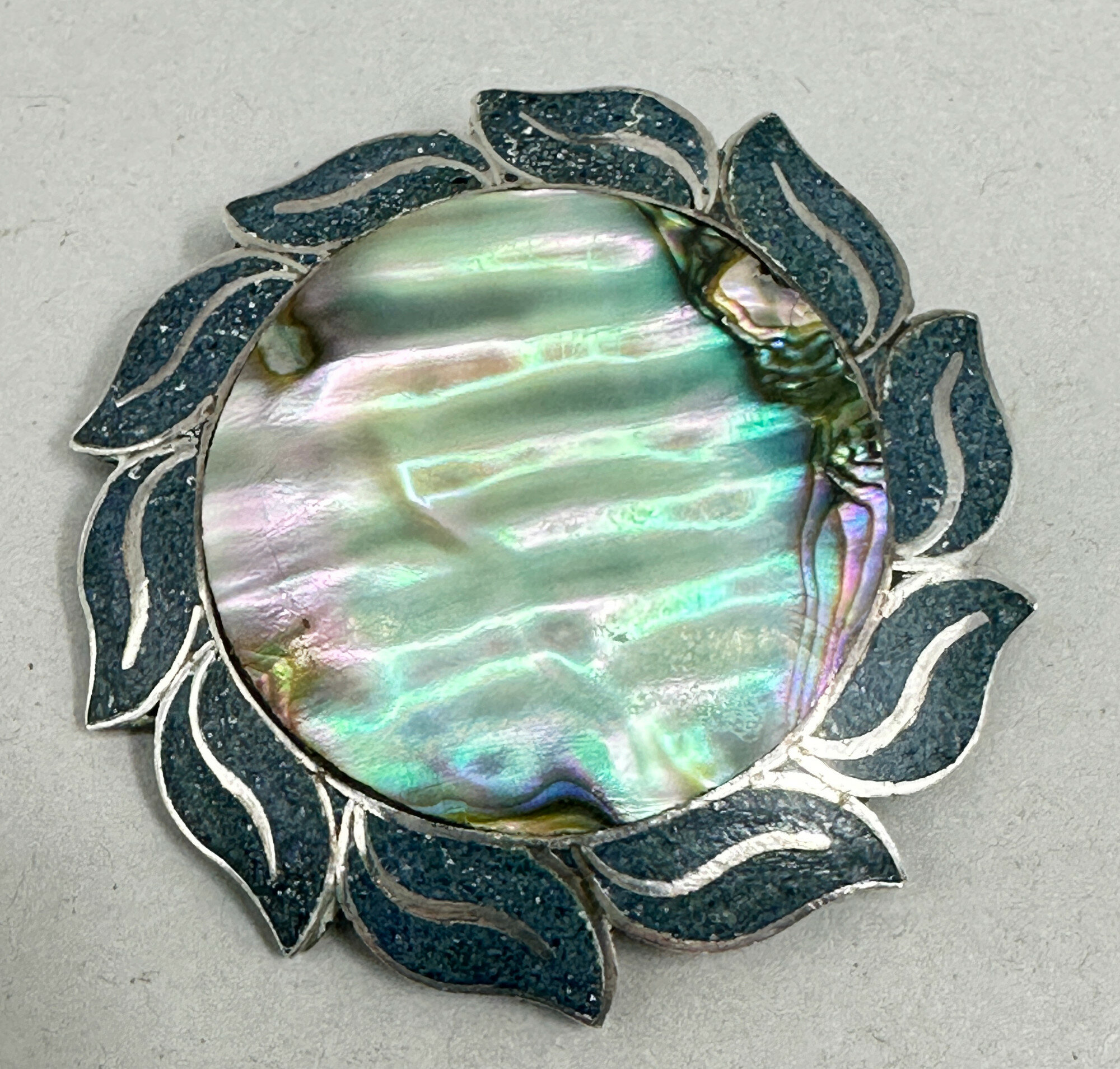
Taxco brooch with abalone shell c1950
Price: £20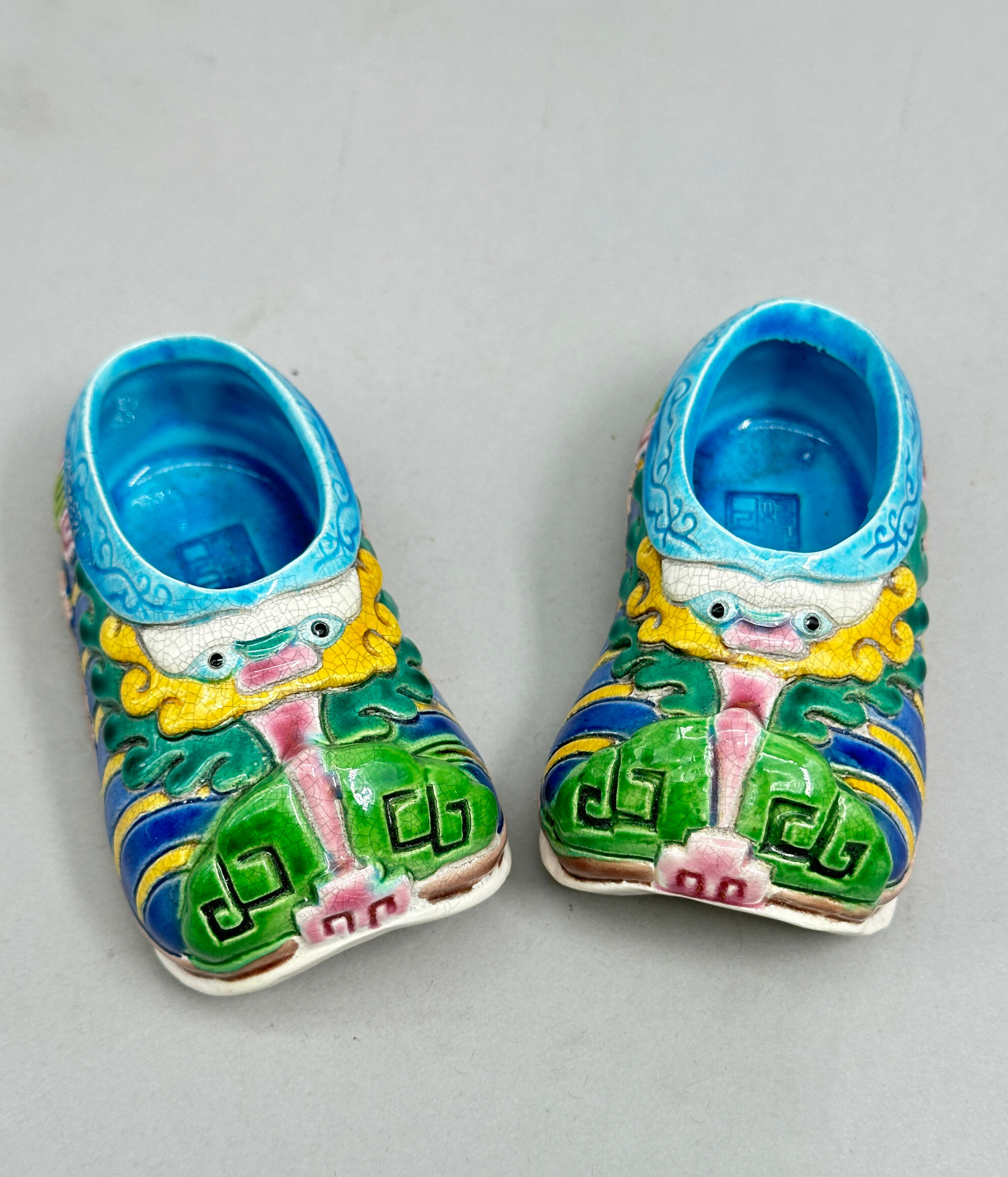
Pair of Chinese Ceramic Shoes, seal mark and with fitted box, C20th
Price: £55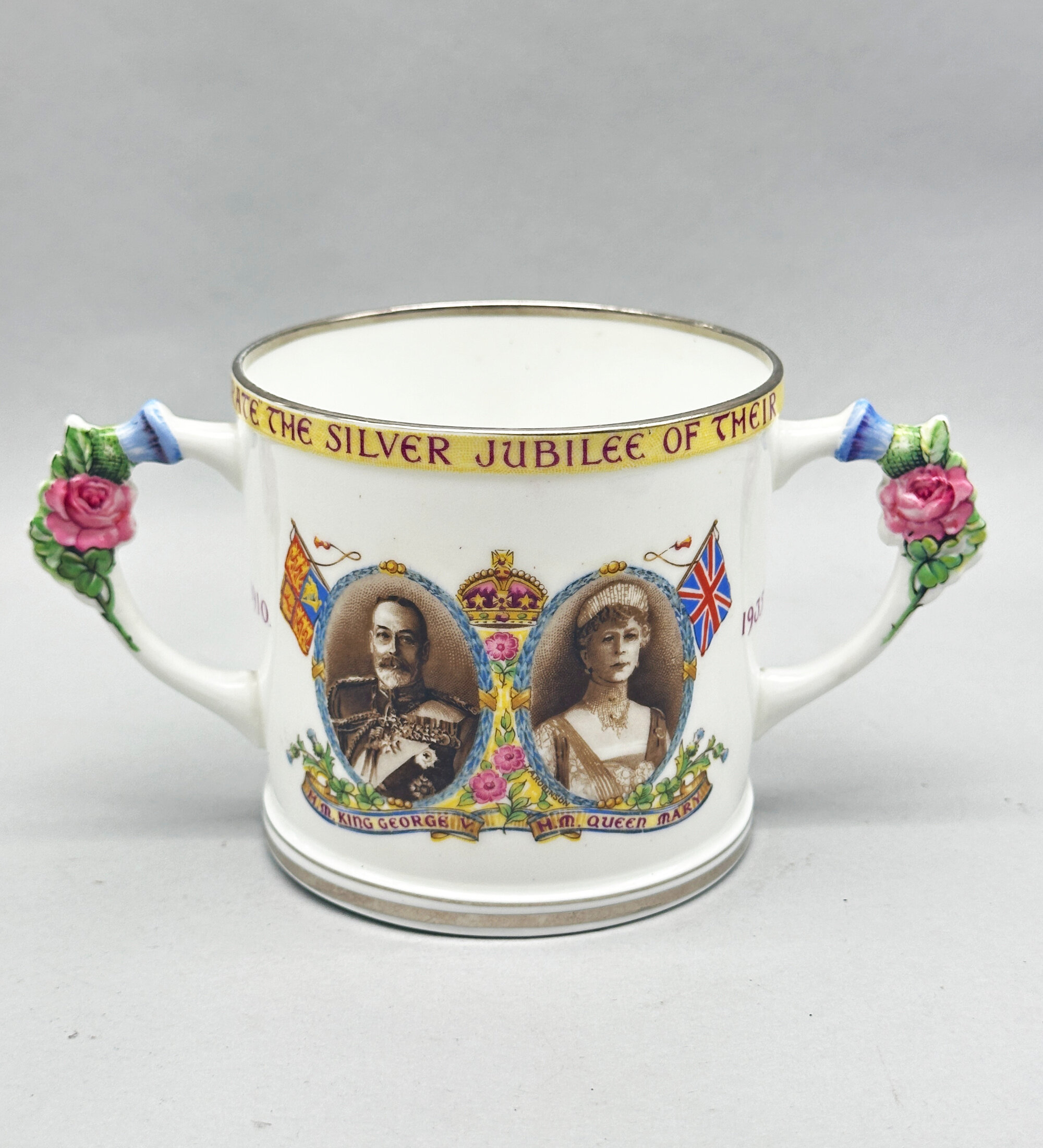
Cup Commemorating the Silver Jubilee of King George V and Queen Mary in 1935
Price: £55The Paragon China Company, formerly the Star China Company (see Lot XX), produced high quality gift items from 1920 to 1971, at first independently and then in alliance with other companies, finally being absorbed by Royal Doulton in 1972 who kept the ‘Paragon’ name until 1991. Commemorative wares were a speciality and this cup is a fine example.

Hula Pattern glass Vase by Bob Crooks, signed by the artist, modern
Price: £110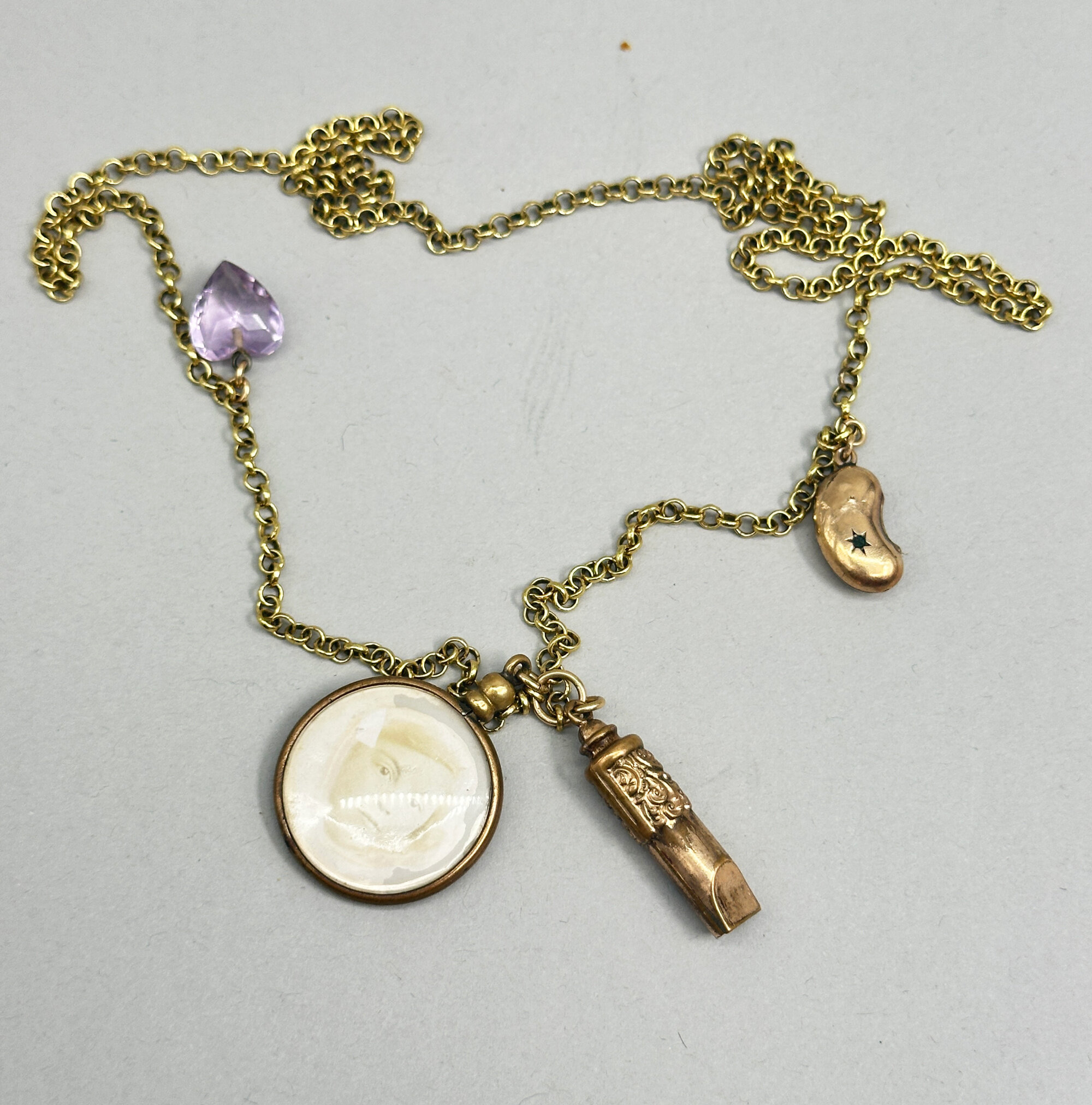
Victorian Rolled Gold Necklace with Pendants, late C19th
Price: £45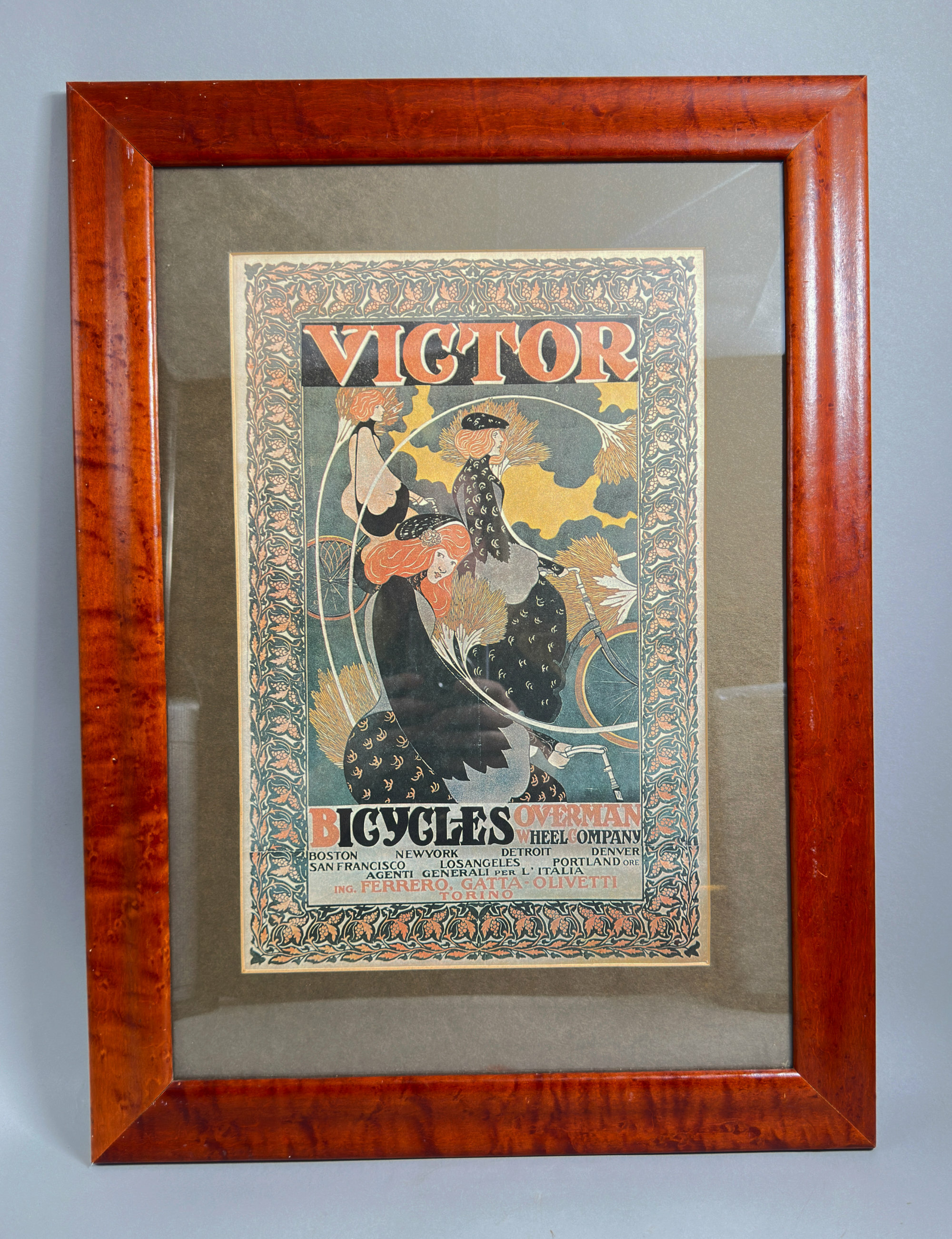
Framed poster for Victor Bicycles, Overman Wheel Company, C20th
Price: £55Will H. Bradley (1868-1962) was an American artist and illustrator whose work enjoyed enormous popularity in the late nineteenth and early twentieth centuries, indeed he became America’s highest paid artist. Some of his most elaborate and original poster and advertisement designs were produced in the last years of the nineteenth century and he was an apt choice for Albert Overman’s then thriving business. His style was quintessentially Art Nouveau and is often compared to that of the English artist, Aubrey Beardsley, indeed he was sometimes dubbed as the ‘American Beardsley'. This poster design for Overman has been much copied and reproduced over the years with original examples residing in museum collections. The dating of this particular printing is not wholly certain; the reproduction is certainly way superior to that of more modern versions and the accompanying frame also indicates some age, perhaps to the 1960s or through to the 1980s. We have, then, both an elegant decorative item and an excellent addition to a collection important poster art.
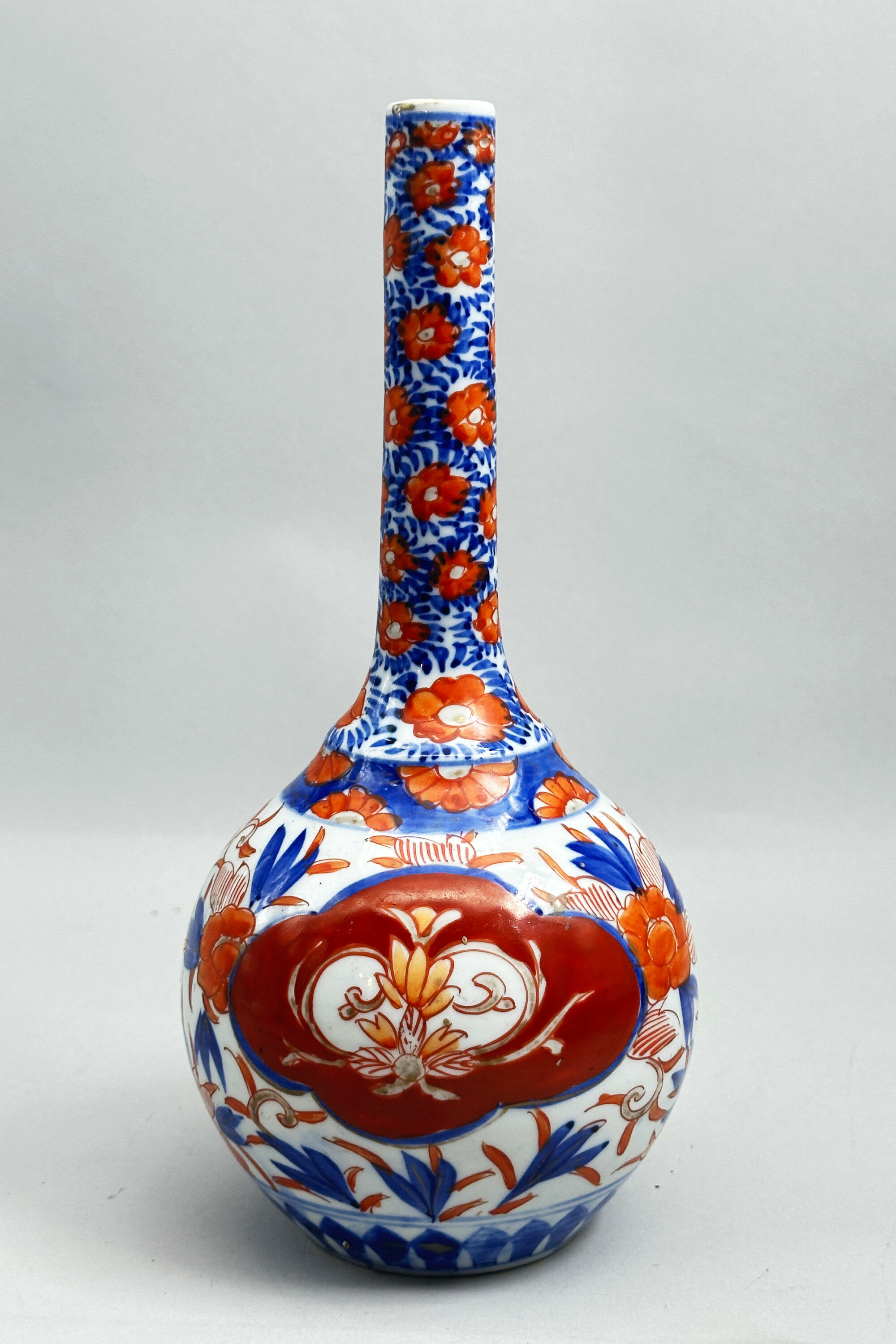
Japanese Imari Bottle Vase, circa 1900
Price: £30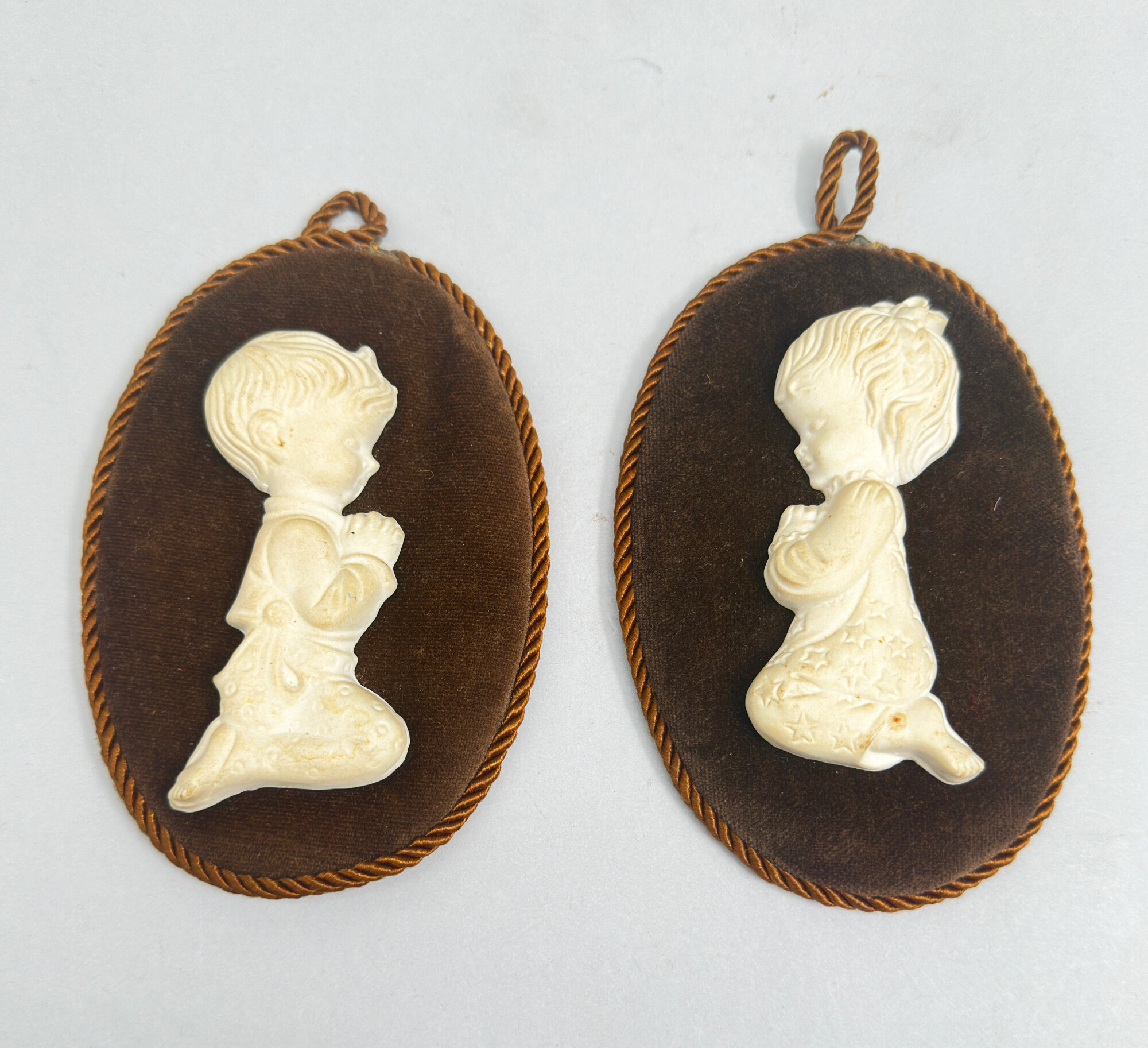
Pair of Capodimonte ceramic Wall Hanging Plaques, boy and girl praying, Italian 1960s
Price: £25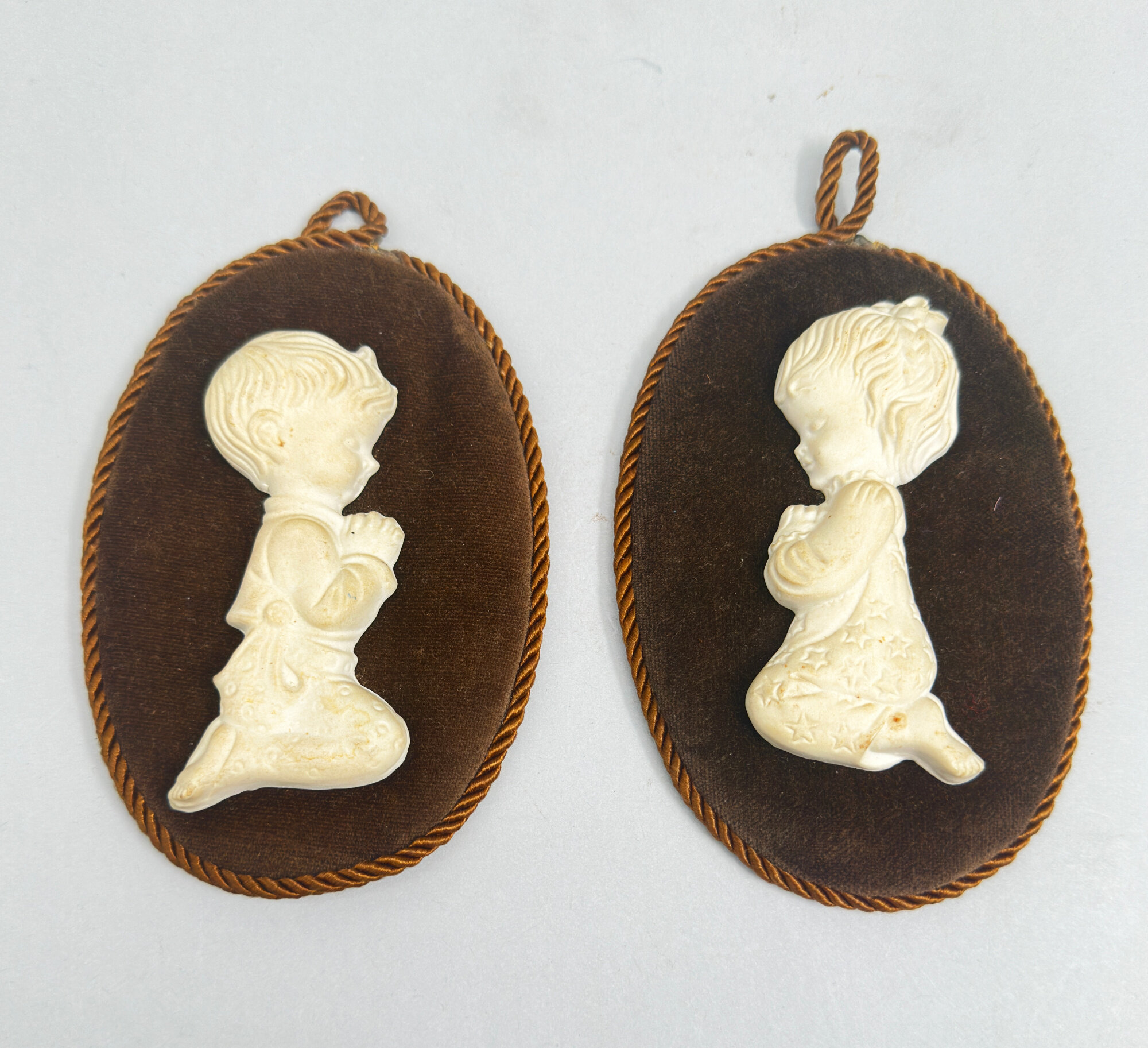
Pair of Capodimonte ceramic Wall Hanging Plaques, boy and girl praying, Italian 1960s
Price: £25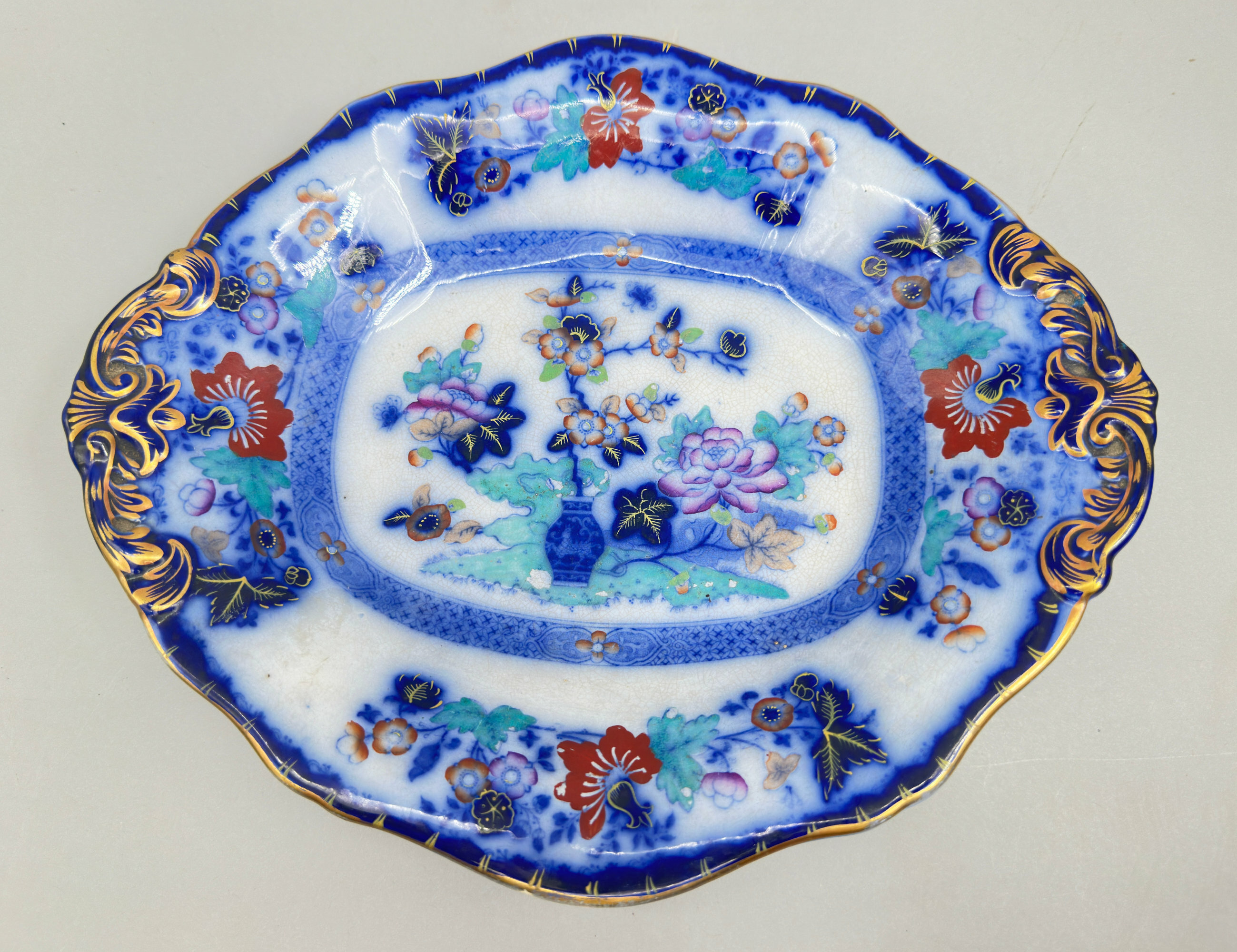
Bombay Japan pattern deep Dish, Minton or Samuel Alcock, English mid C19th
Price: £25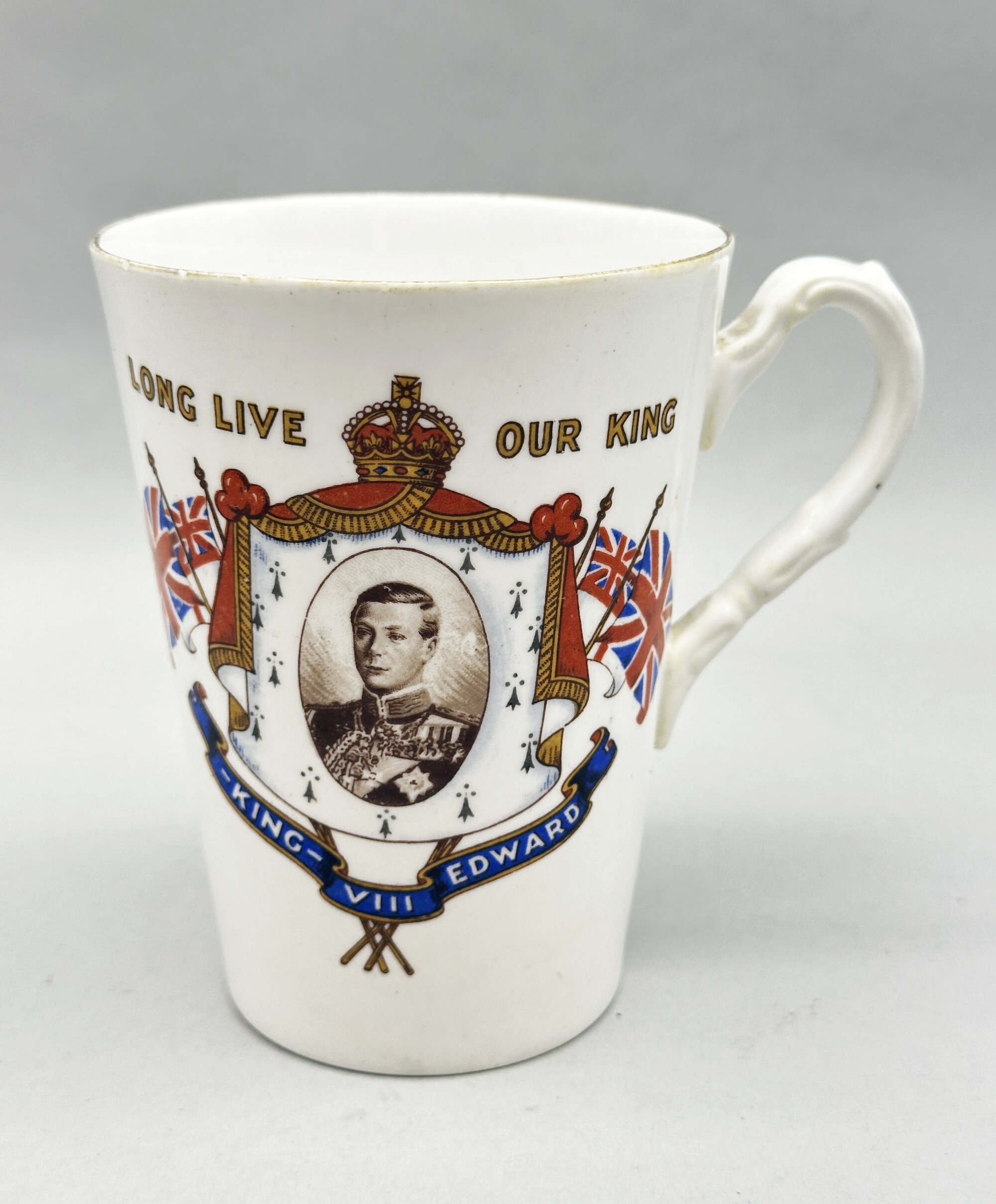
Mug Commemorating the Coronation of Edward VIII in 1937
Price: £25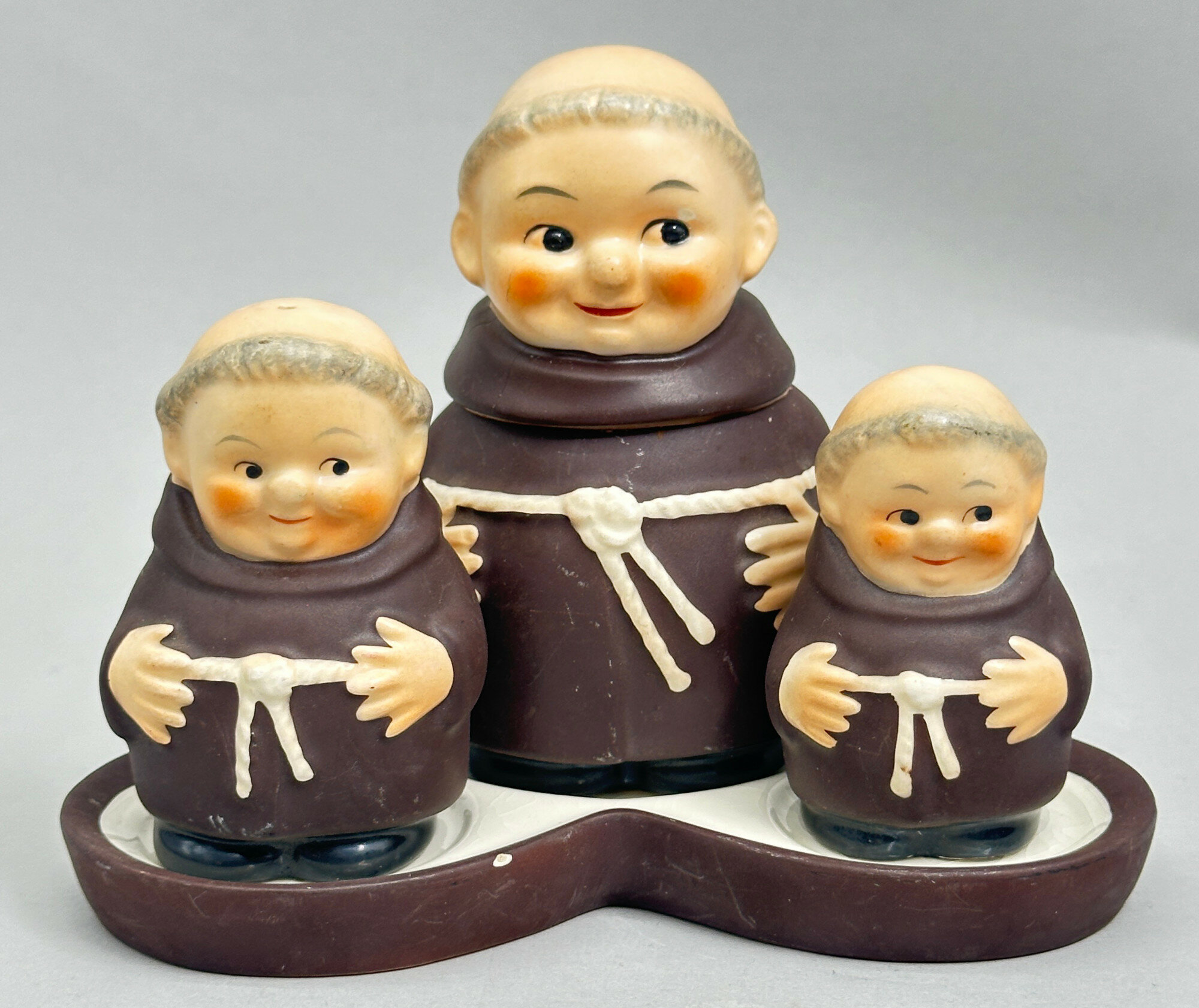
Cruet set in the form of three Friar Tuck Monks on a Tray, Hummel, West Germany, 1960s
Price: £55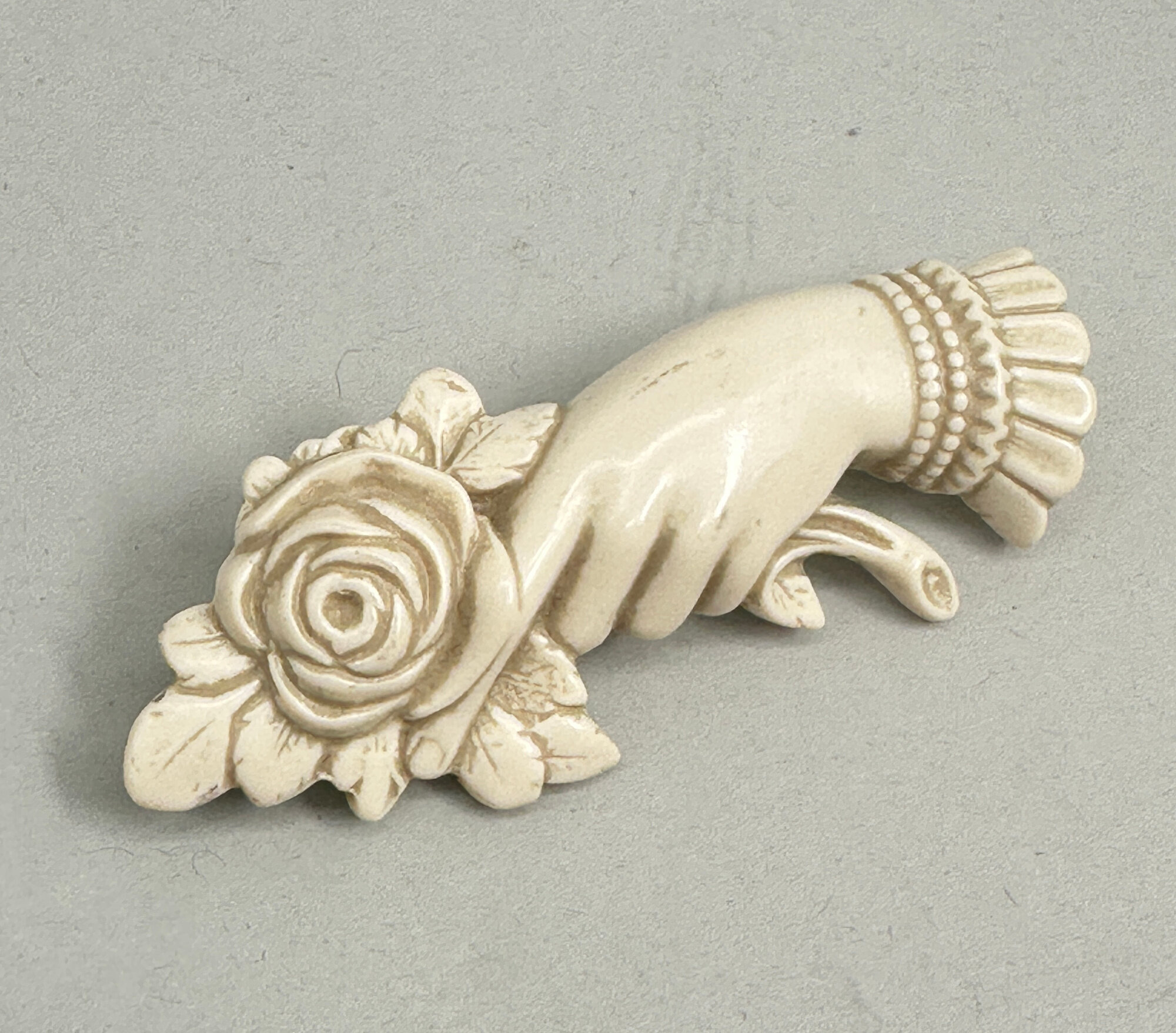
Bakelite Ivorine Mourning Brooch, British c1930
Price: £25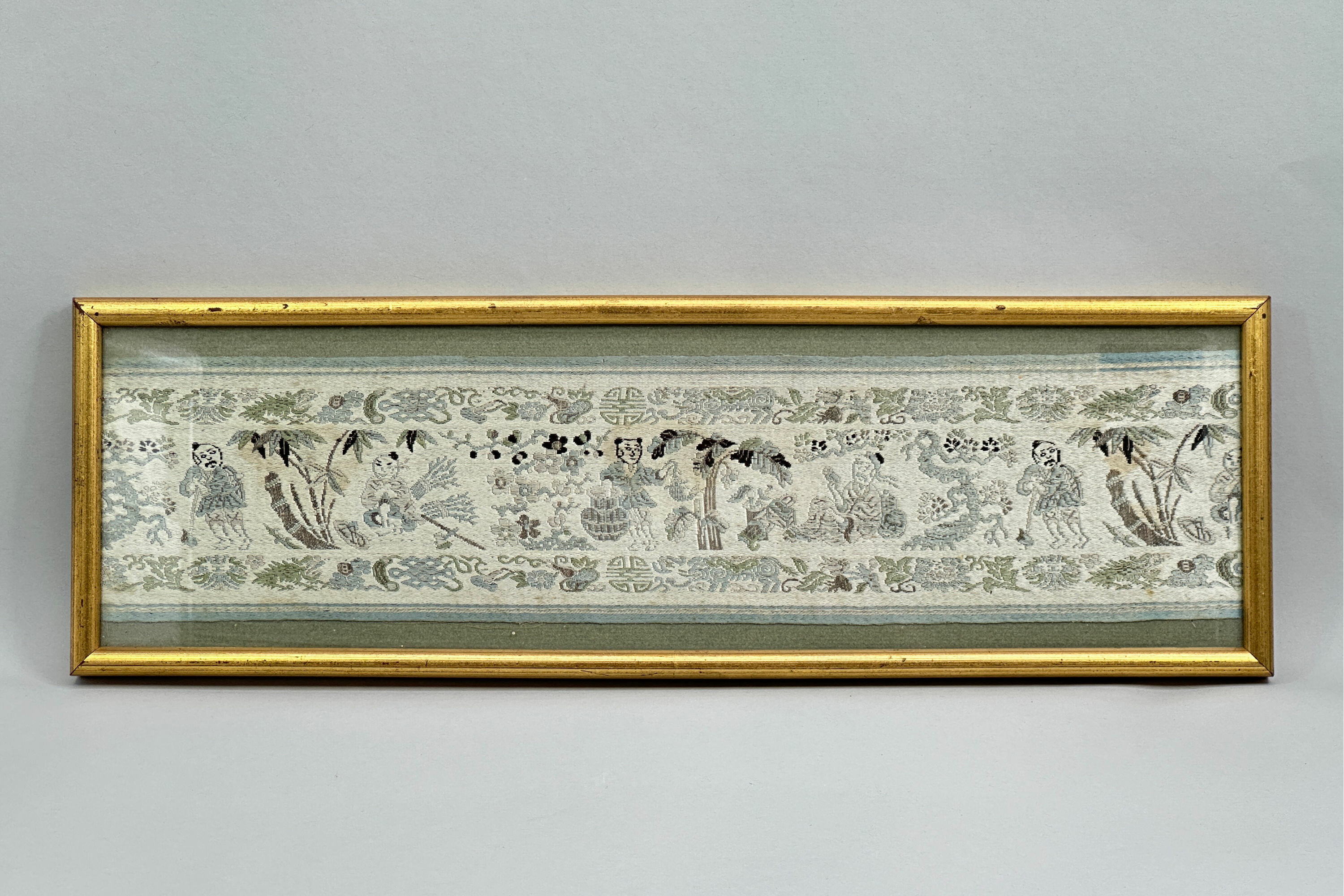
Framed Chinese Silk Embroidered Runner Panel, garden scenes, C20th
Price: £15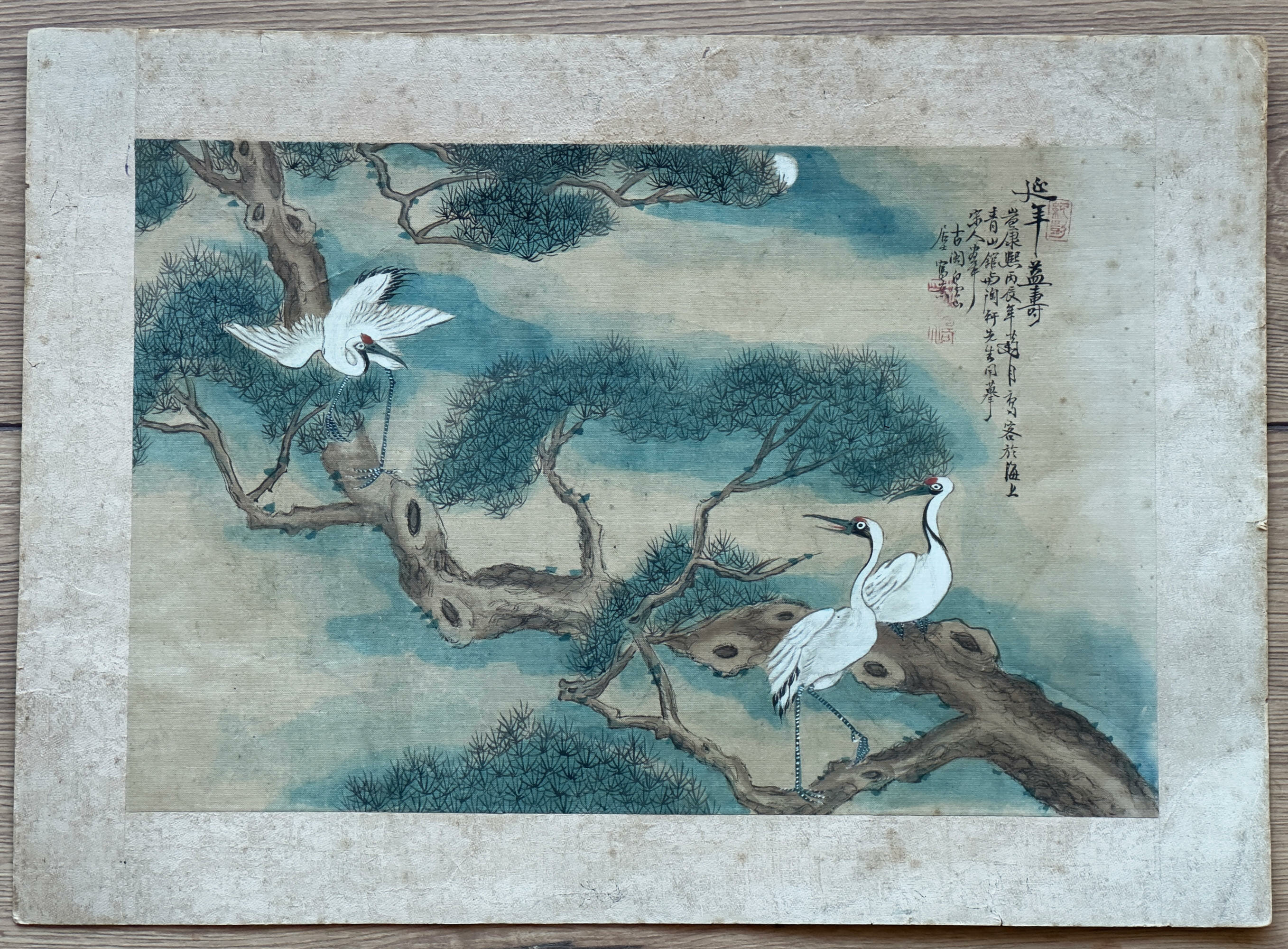
Chinese painting on Silk, Storks and Pine, circa 1900
Price: £25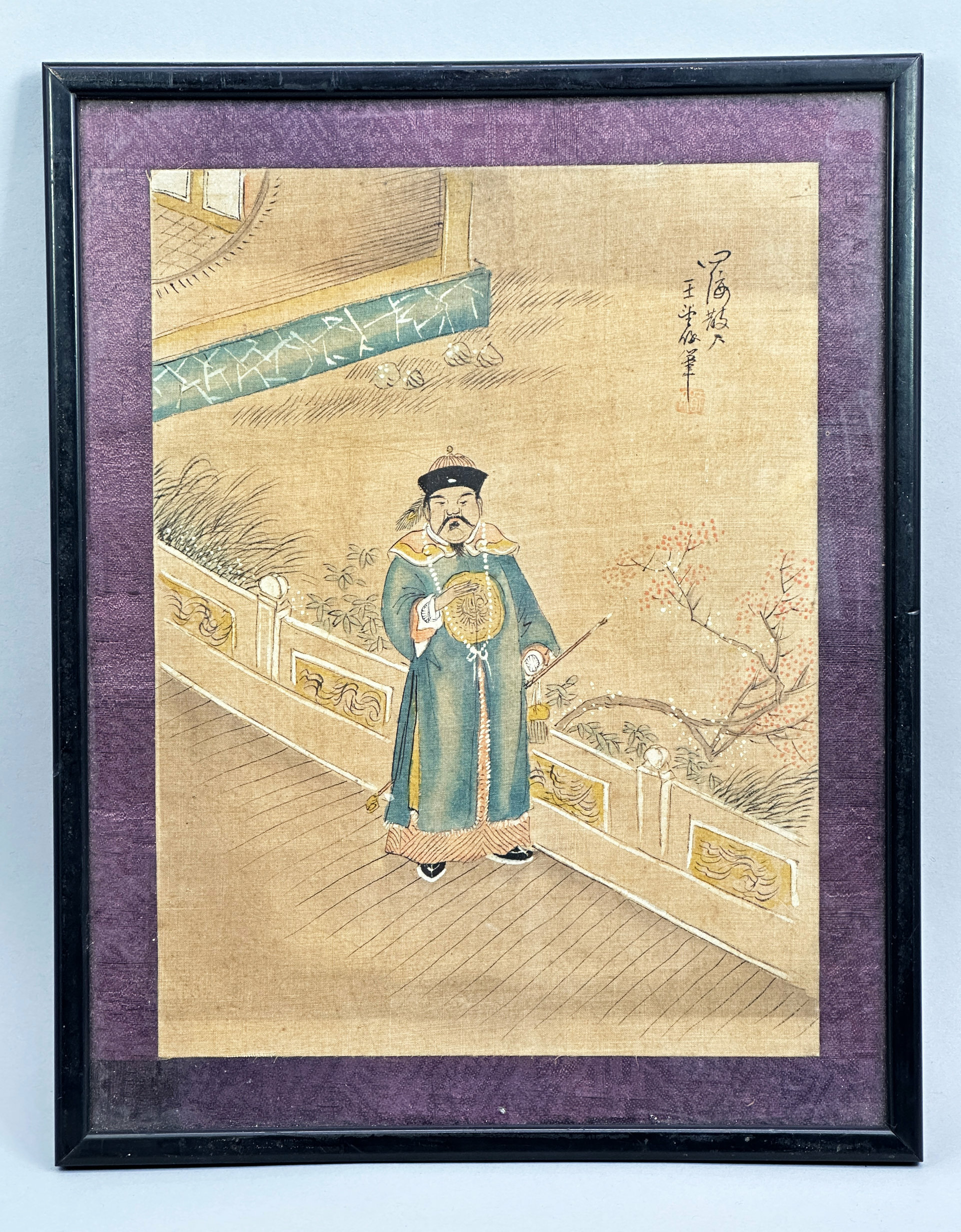
Framed Chinese Painting of a Court Official, C20th
Price: £45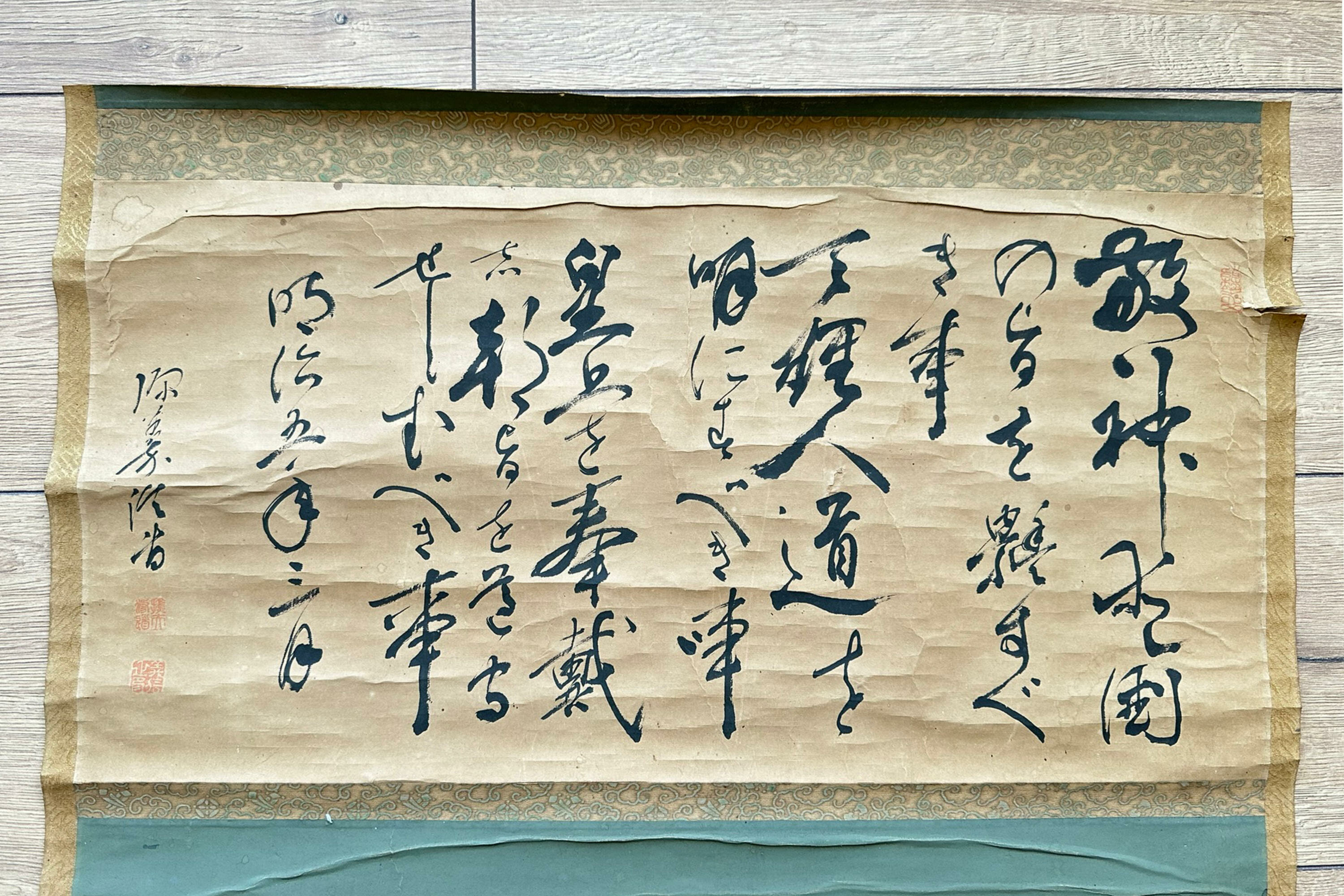
Chinese Calligraphy Scroll, Qing Dynasty (1636-1912)
Price: £25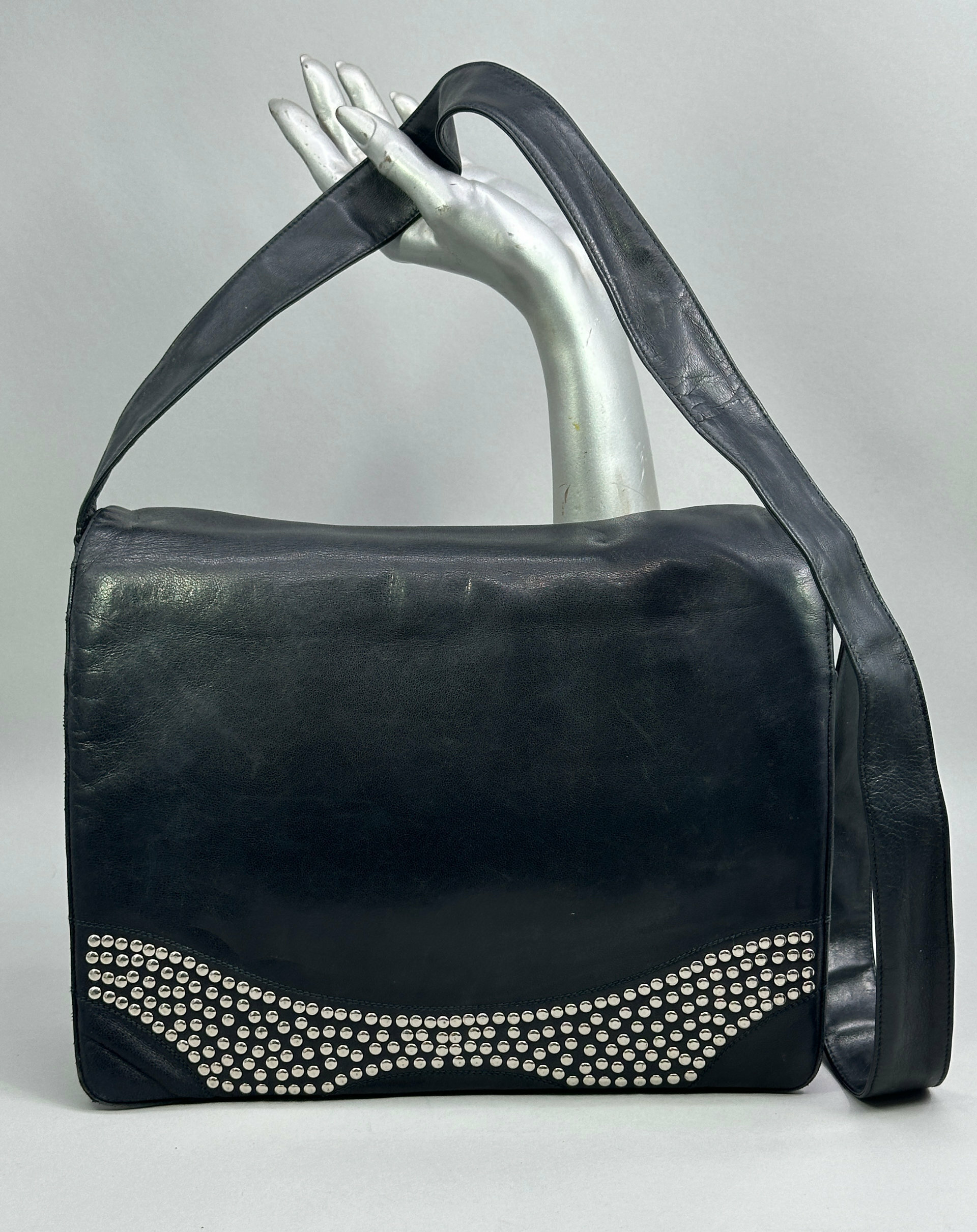
Maud Frizon Handbag c2000
Price: £150
Cup : the Silver Wedding Anniversary of Queen Elizabeth II and Prince Philip in 1972
Price: £25The Paragon China Company, formerly the Star China Company (see Lot XX), produced high quality gift items from 1920 to 1971, at first independently and then in alliance with other companies, finally being absorbed by Royal Doulton in 1972 who kept the ‘Paragon’ name until 1991. Commemorative wares were a speciality and this cup is a fine and typical example.
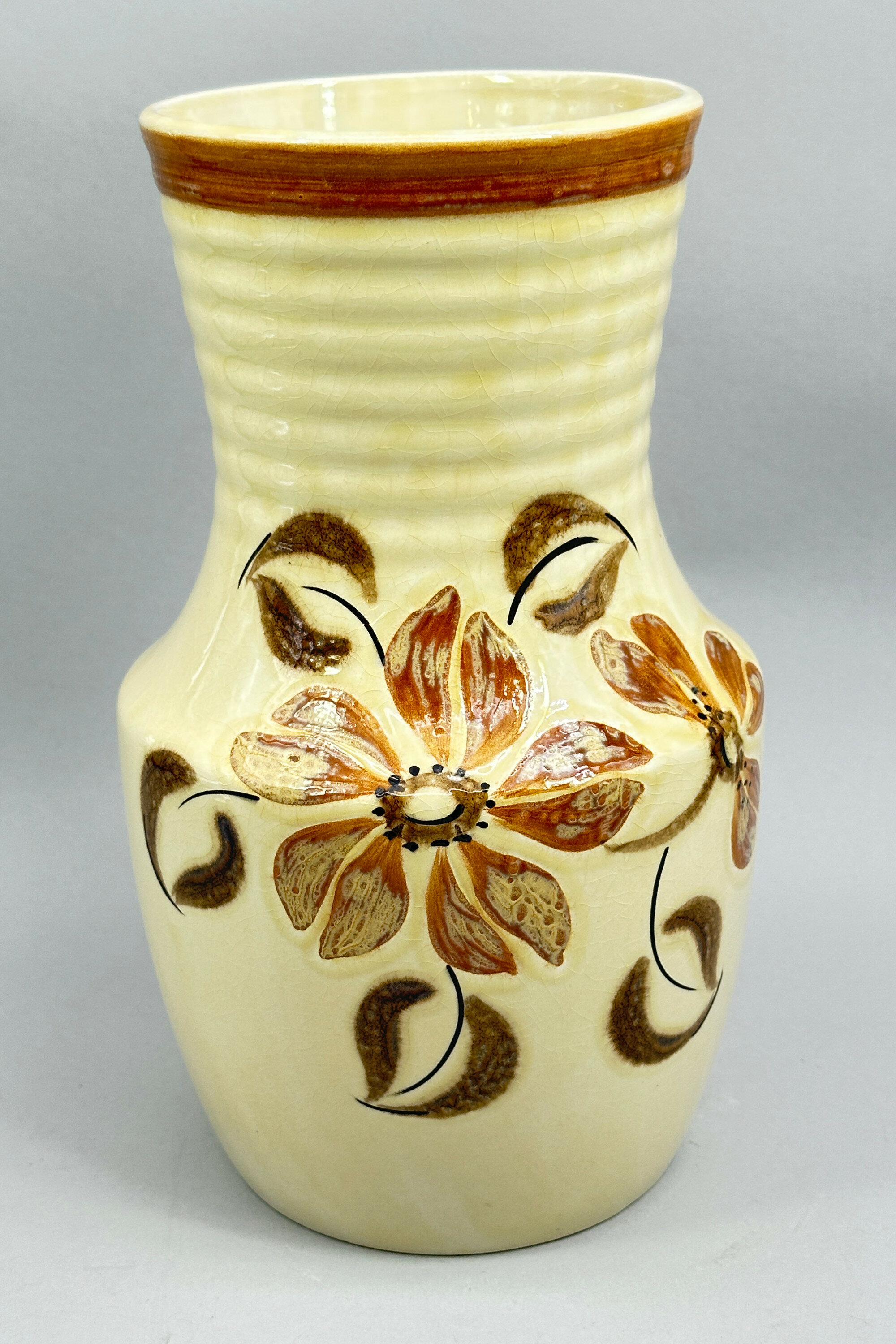
Vase with signature E.Radford and numbered 1267, mid C20th
Price: £45There were, in fact, two craftsmen working in the C20th British pottery industry with the name Edward Radford, father and son. Radford senior worked for Pilkington’s Royal Lancastrian Pottery in Manchester from 1903 until his retirement in 1936, acting as their main thrower. Radford junior joined his Father in 1905, but the First World War intervened, in which he won a Military Cross for his actions at Passchendaele in 1917 and afterwards he settled in Stoke on Trent, the heart of Britain’s pottery industry. An association developed with H.J.Wood’s Alexandra Pottery in Burslem who produced a range of wares bearing his name in the 1930s, although Radford himself may have acted as more a salesman than the designer. Production continued after the war and even after Radford’s retirement in 1948. The form of mark used here implies a later dating and both the shape, indicated by the model number underneath which is found on other vases with different decoration, and the decoration itself suggest the post war era, probably in the 1950s. There is, though, a modest charm here which would blend comfortably with a modern interior.
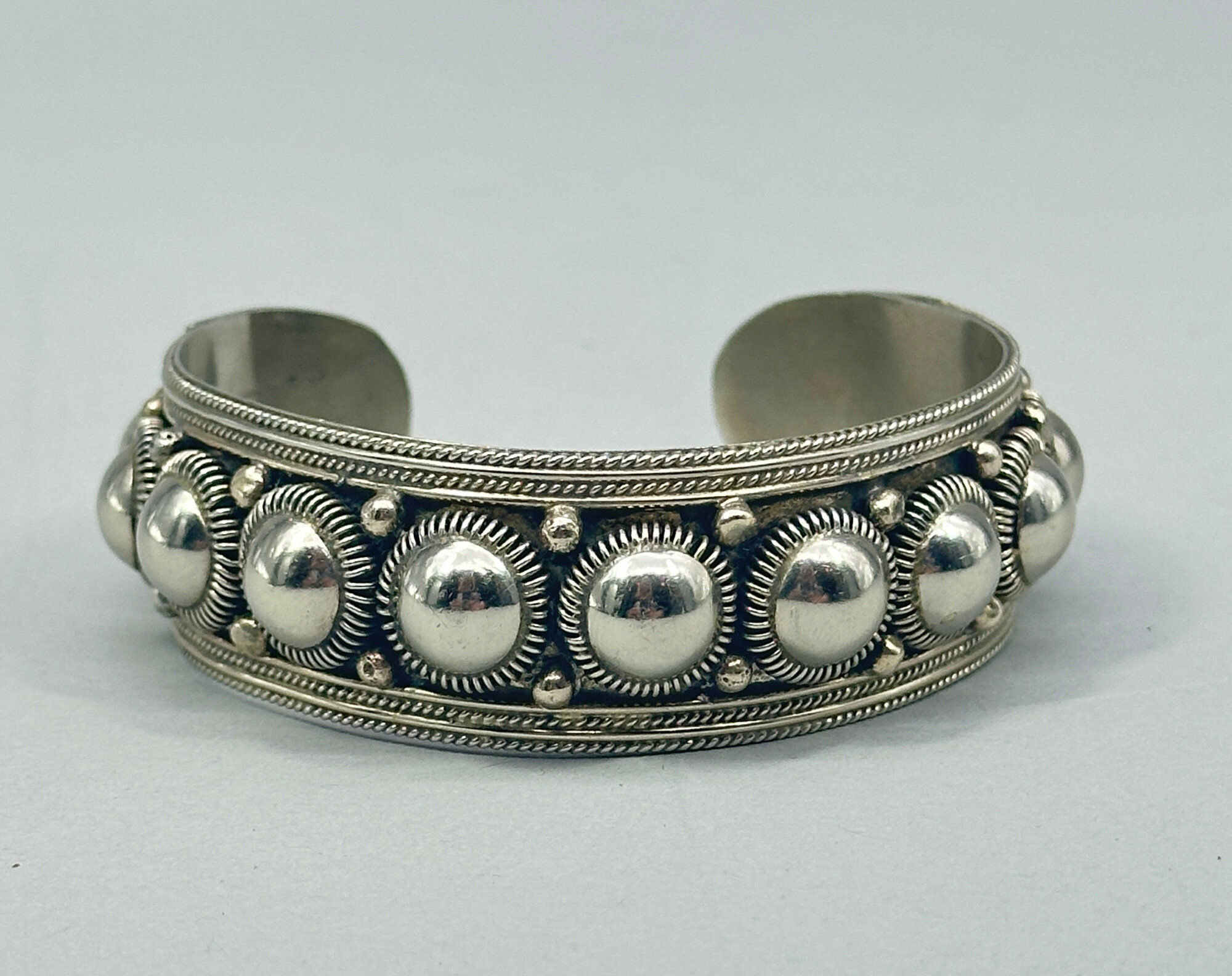
Siam silver cuff bracelet c1950
Price: £85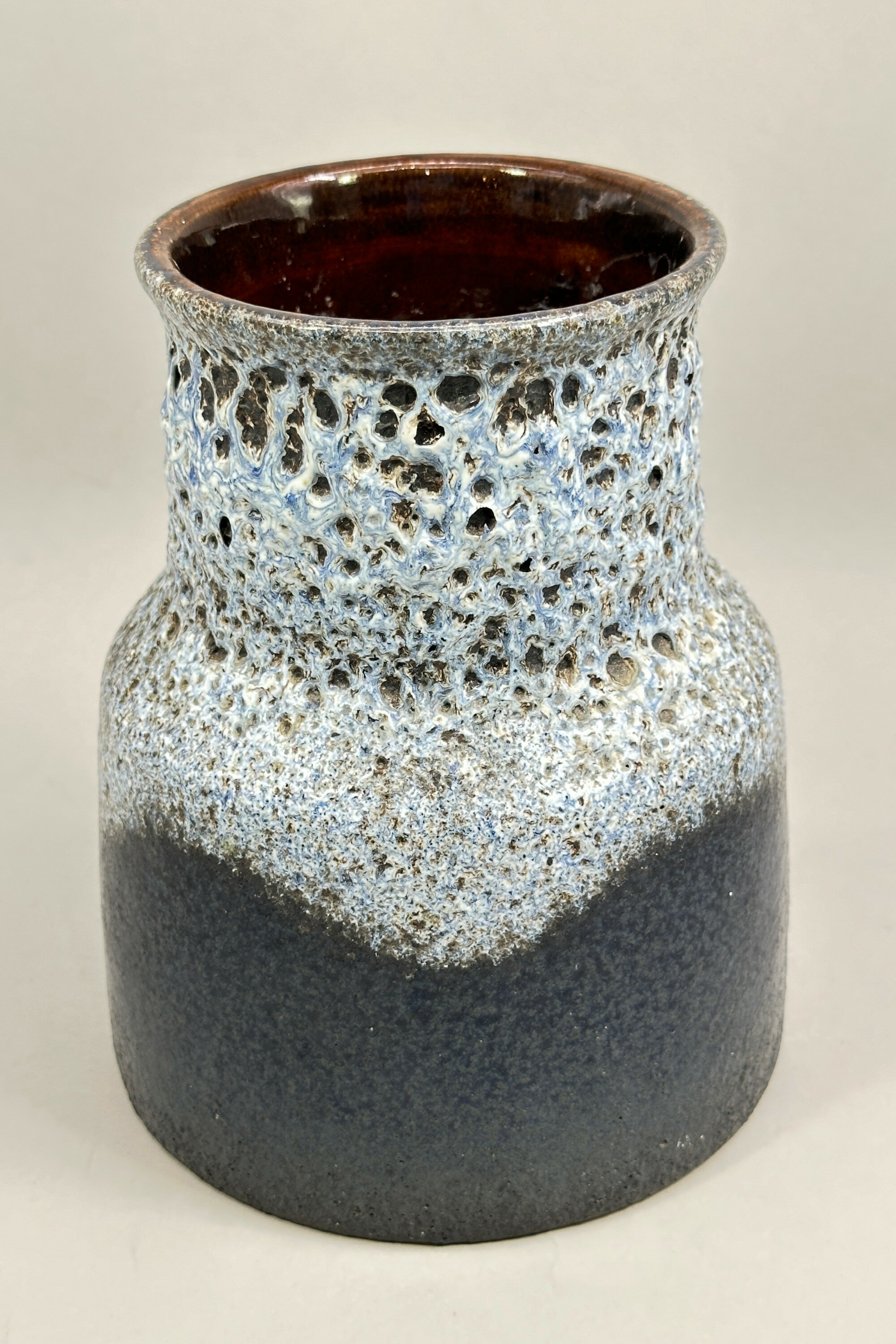
West German Pottery Lava Glaze Vase, Scheurich, 1960s
Price: £45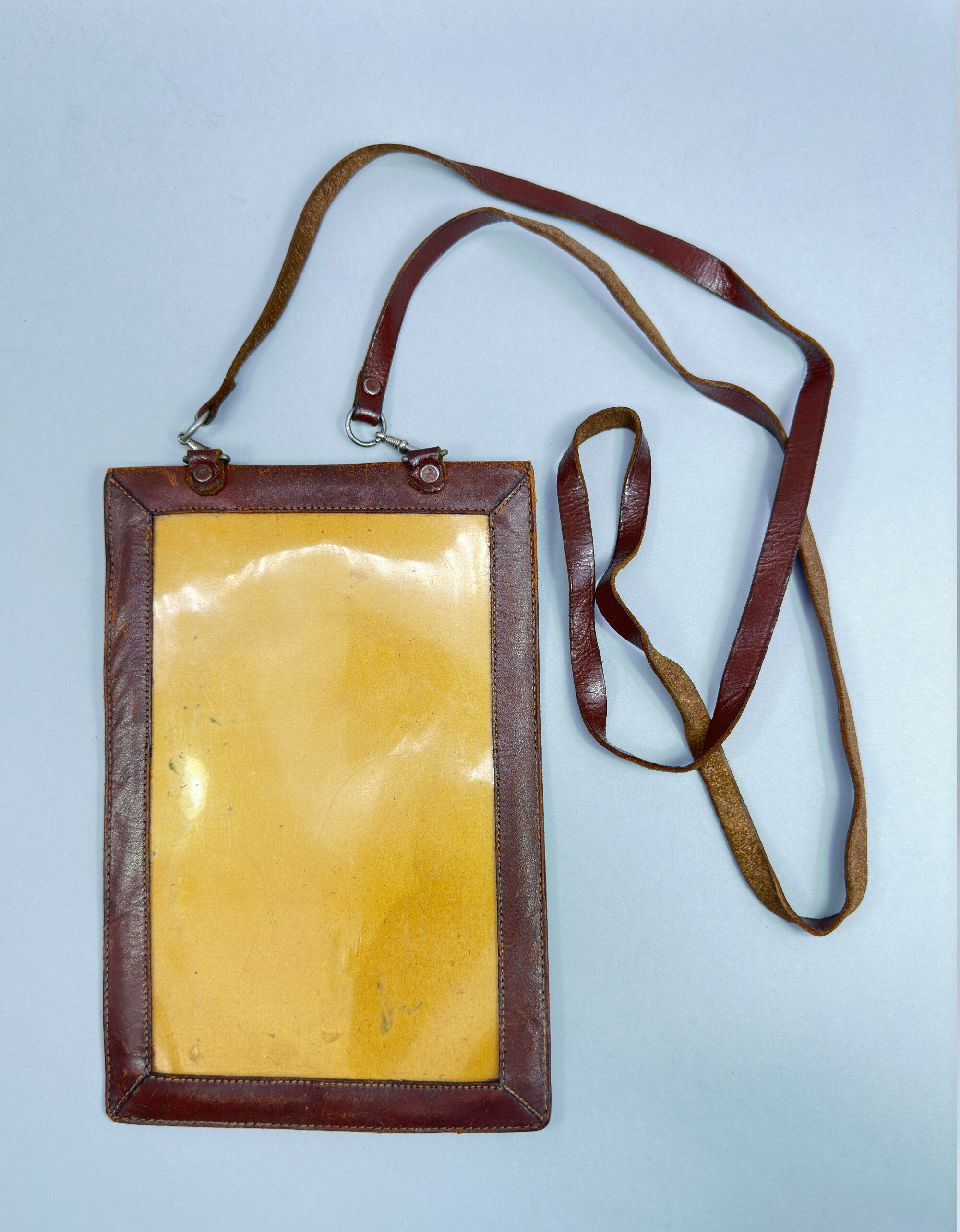
Vintage Leather Map Case, probably 1940s
Price: £45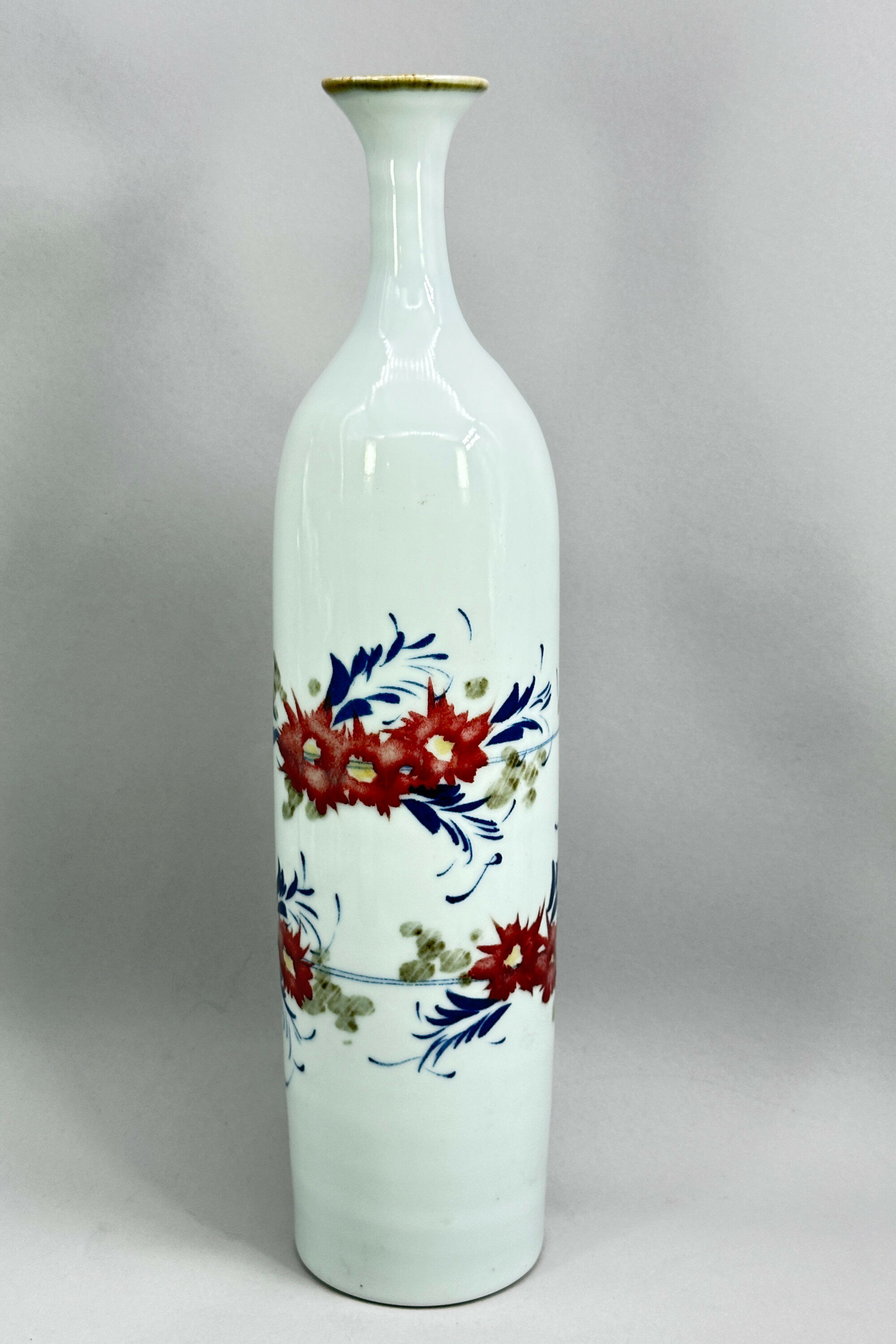
Japanese Studio Pottery Vase, signed, C20th
Price: £75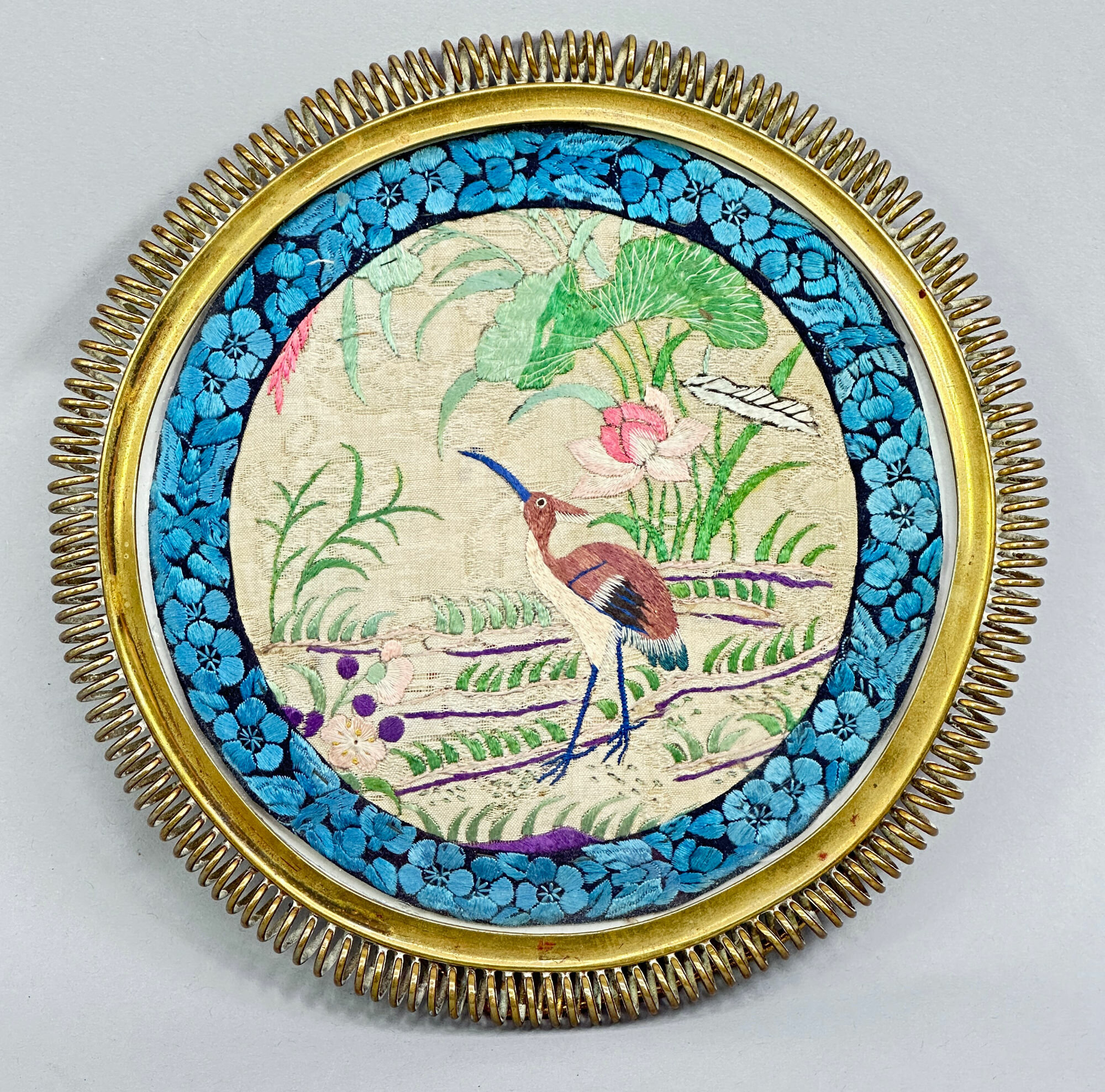
Chinese circular silk textile Panel in later European brass metal Frame, C19th/C20th
Price: £55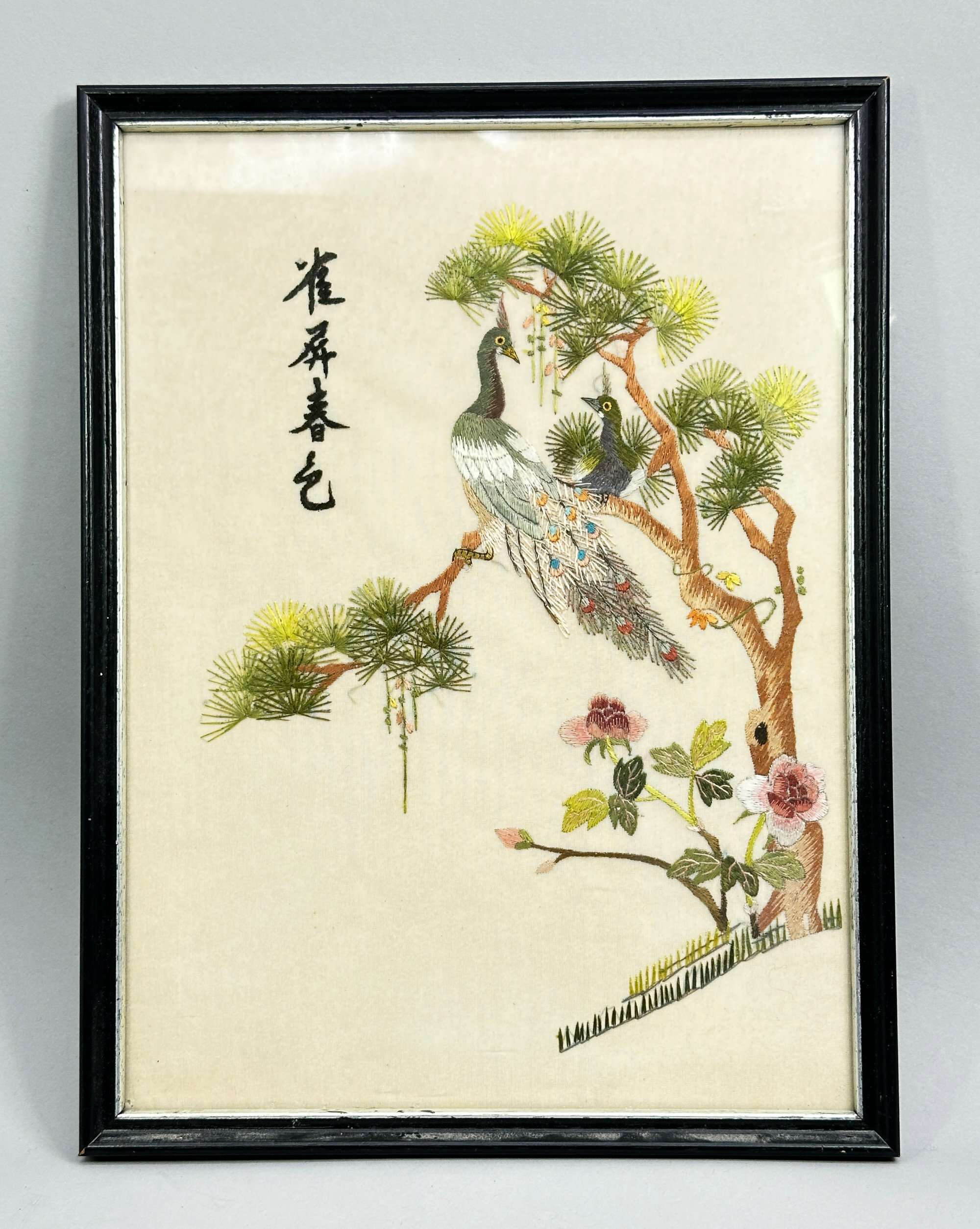
Framed Chinese Embroidery Silk Textile, signed, second half C20th
Price: £25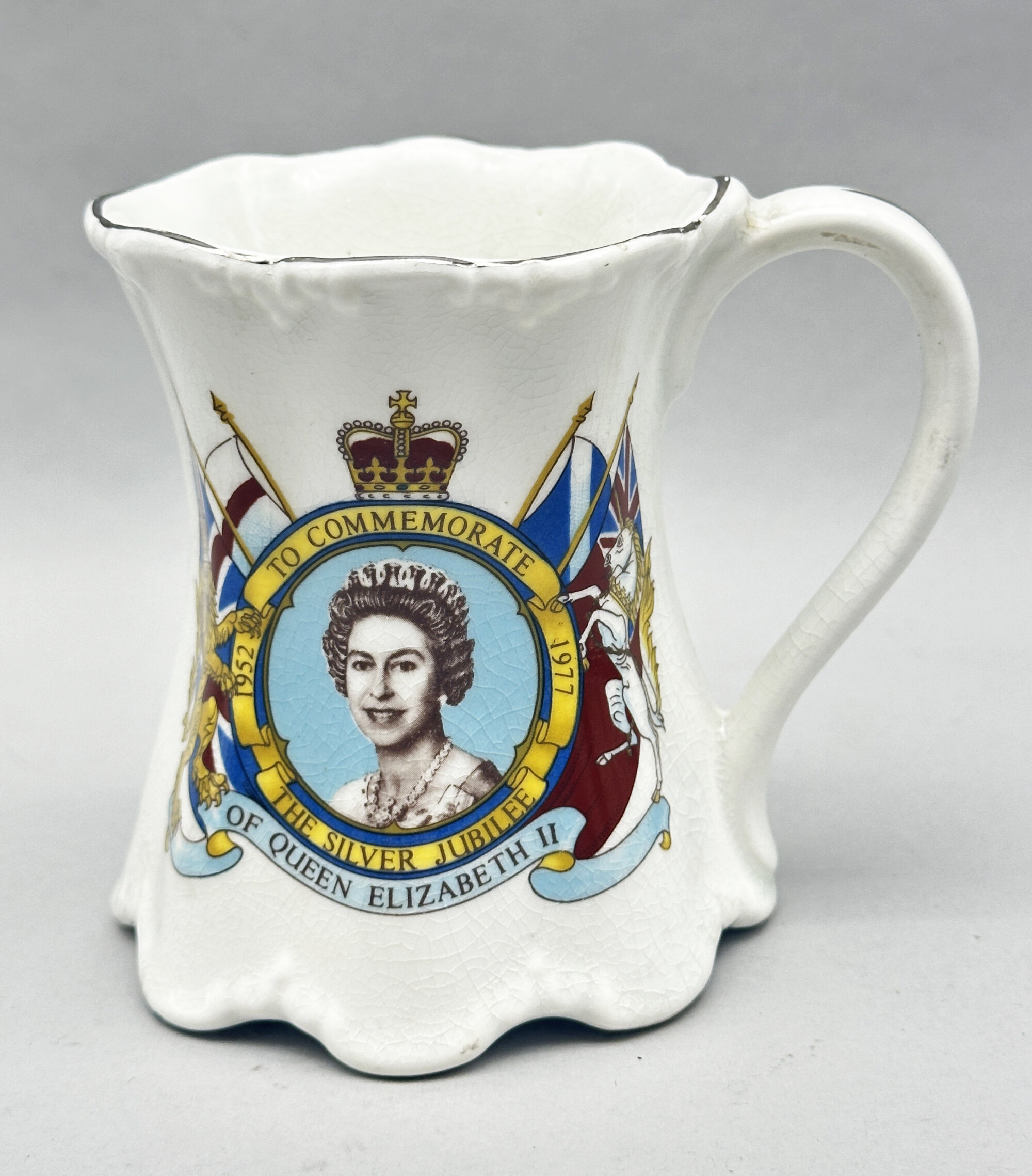
Queen Elizabeth II Silver Jubilee China Mug, 1977
Price: £10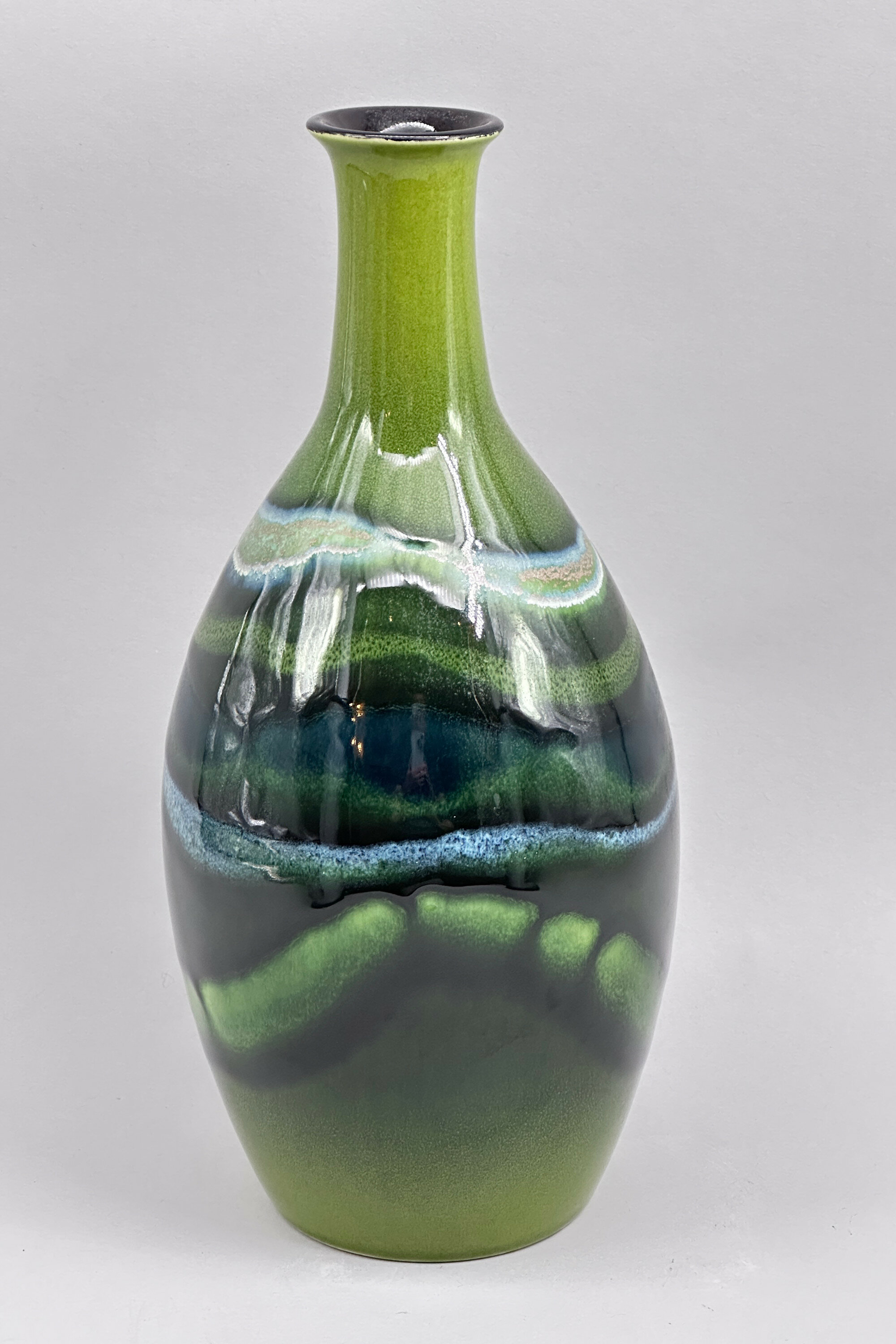
Poole Pottery Maya Pattern Bottle Vase, early C21st
Price: £85This fine quality vase is from the Maya range made by Poole Pottery, some of the pieces still being in production today and described in the maker’s catalogue as follows “Poole Pottery’s Maya collection is inspired by British landscapes and earthy tones. The greens and blues in this stunning range represent the earth meeting the sky in a natural yet bold design. Here at Poole Pottery, all our Maya ceramics are hand-cast and made using our signature reactive glaze in the famous Middleport Pottery in Staffordshire. The distinctive pieces you see here are created via our Living Glaze technique, where layers of colourful glazes react with one another to create a unique, glossy and dynamic finish.” But this particular form does not appear in the current catalogue and does not seem to be otherwise available. The form of the mark appears on other Poole pieces of more recent manufacture and dating is probably to around twenty years ago. The initials are for the artist’s signature and Poole write “Items are personalised with the artist's own individual mark, adding value to the collectability of each piece.” Given its scarcity, this vase would make an interesting addition to a collection of Poole Pottery aside from being a highly decorative item in its own right.
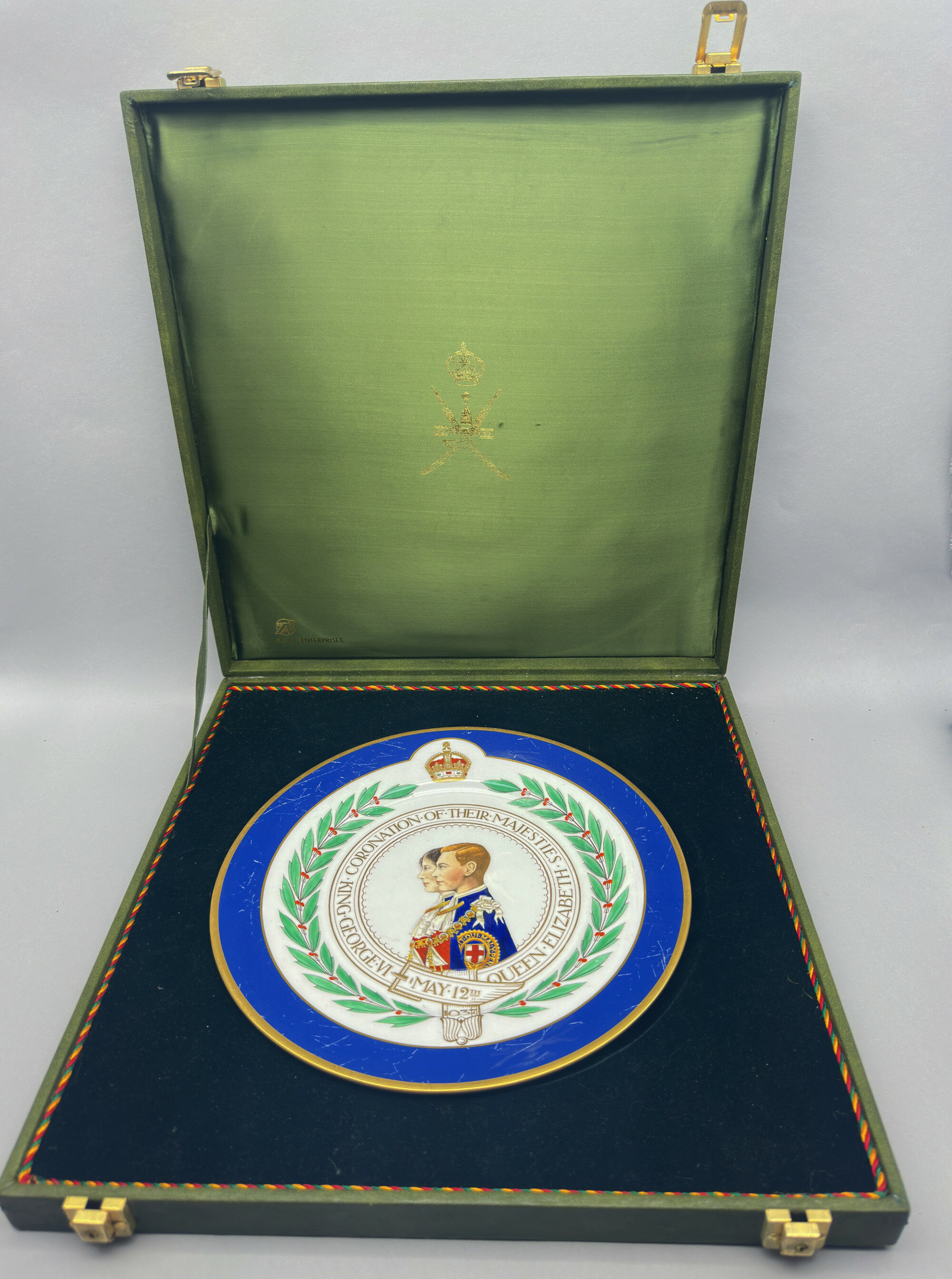
Mintons Coronation Plate, King George VI and Queen Elizabeth 1937, boxed
Price: £25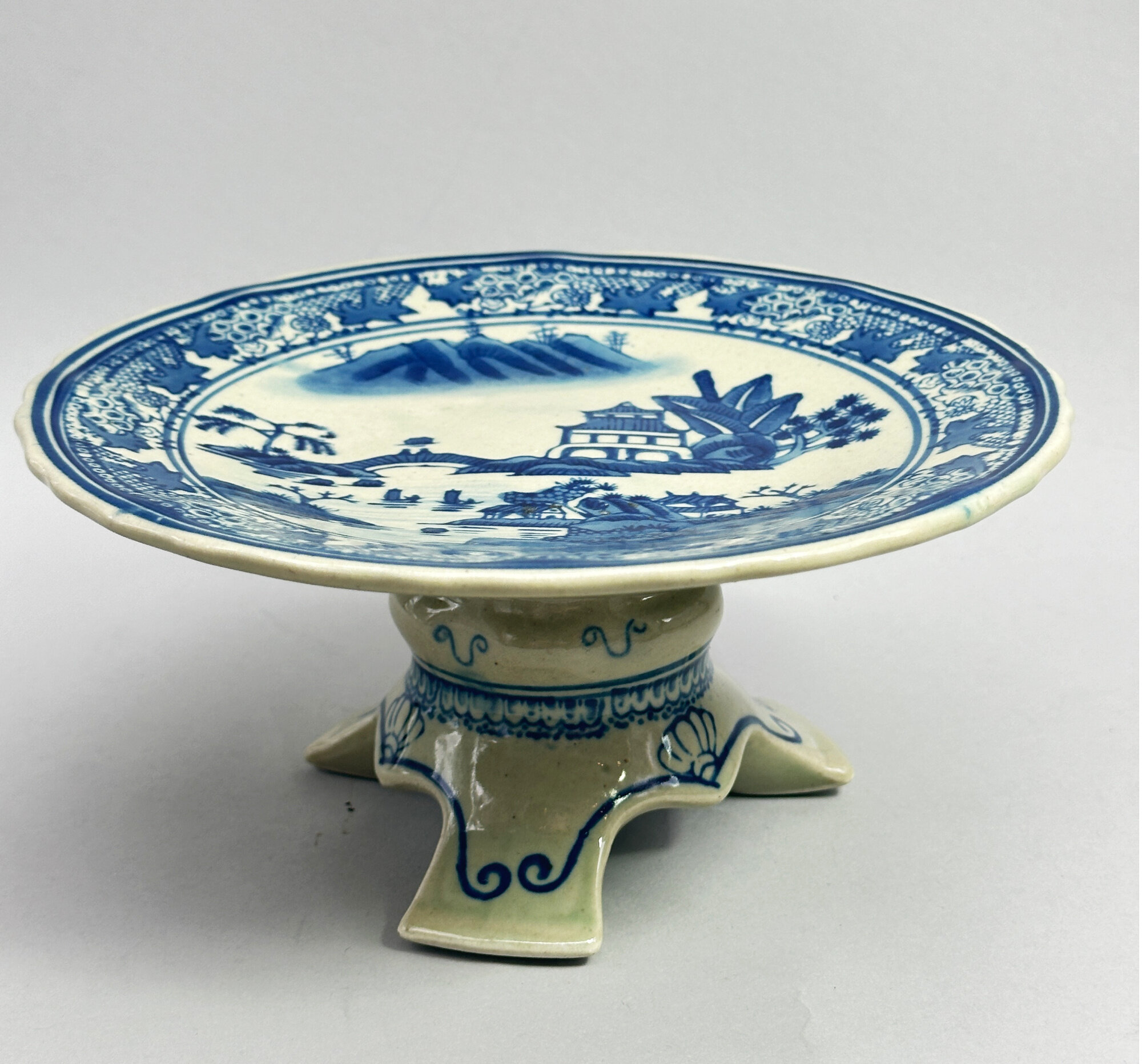
Japanese Celadon Ground Tazza with Chinese Nanking decoration, late C19th
Price: £25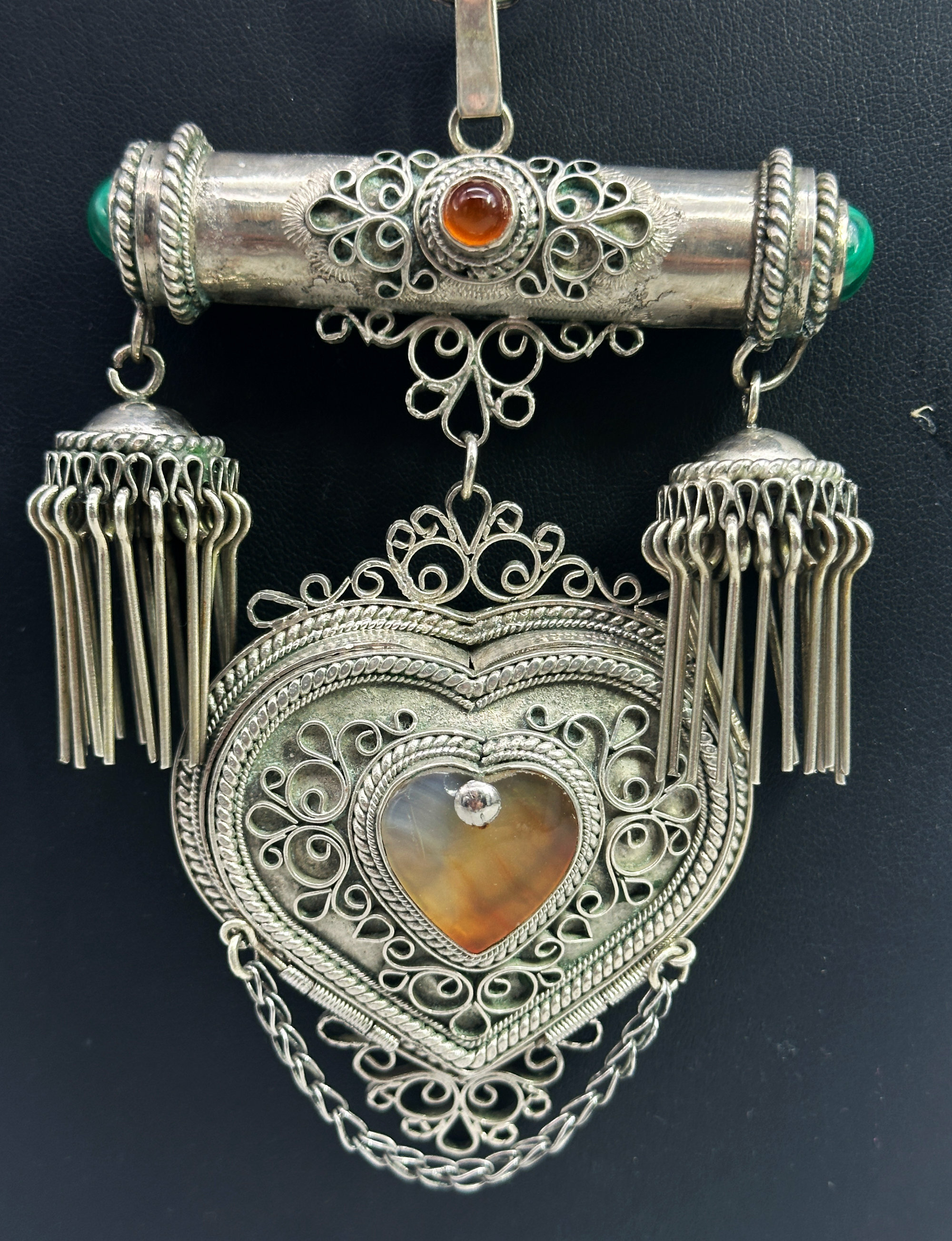
Large Islamic silver necklace with heart shaped box c1920
Price: £85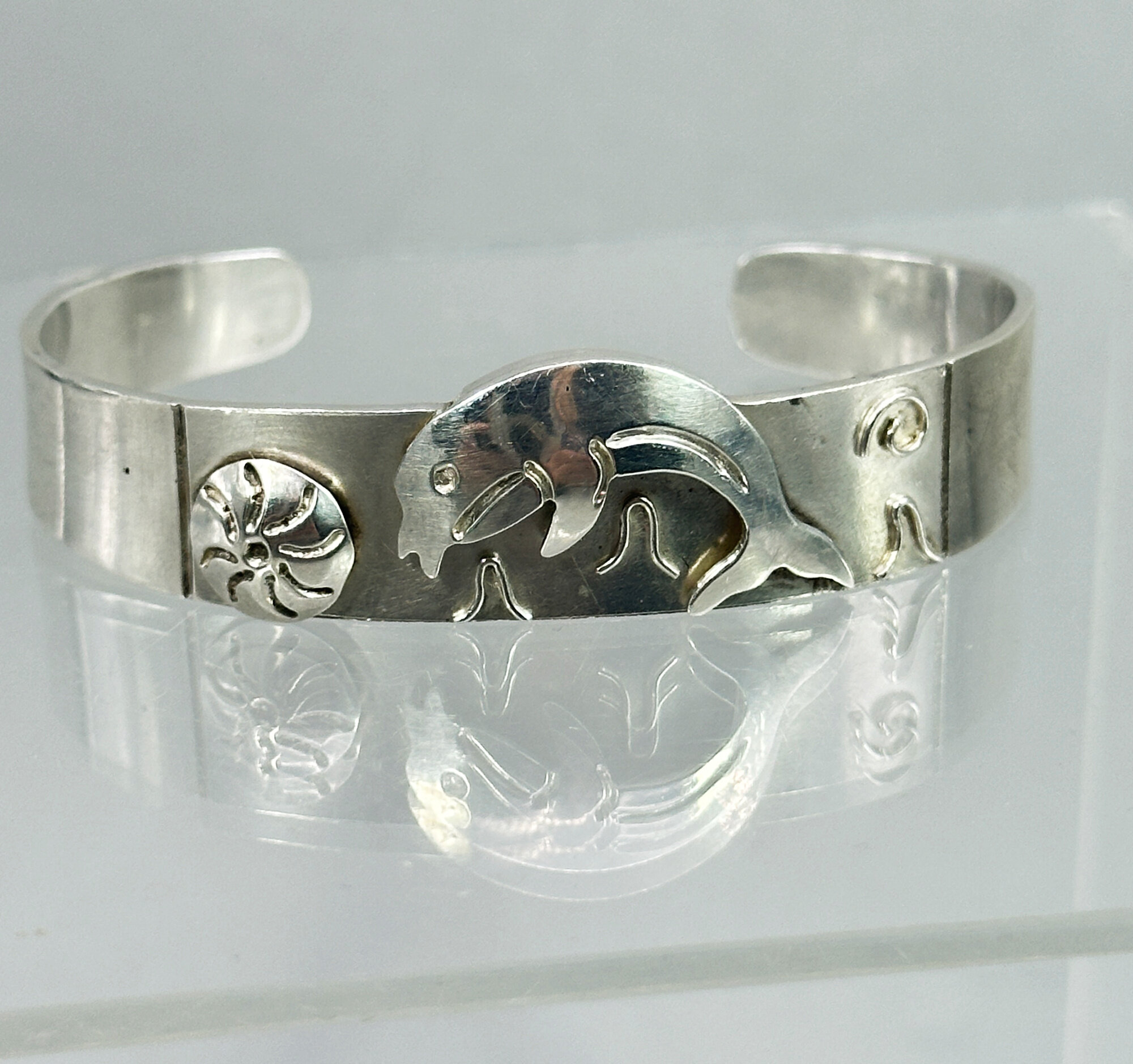
Mexican silver dolphin bangle bracelet c1990
Price: £65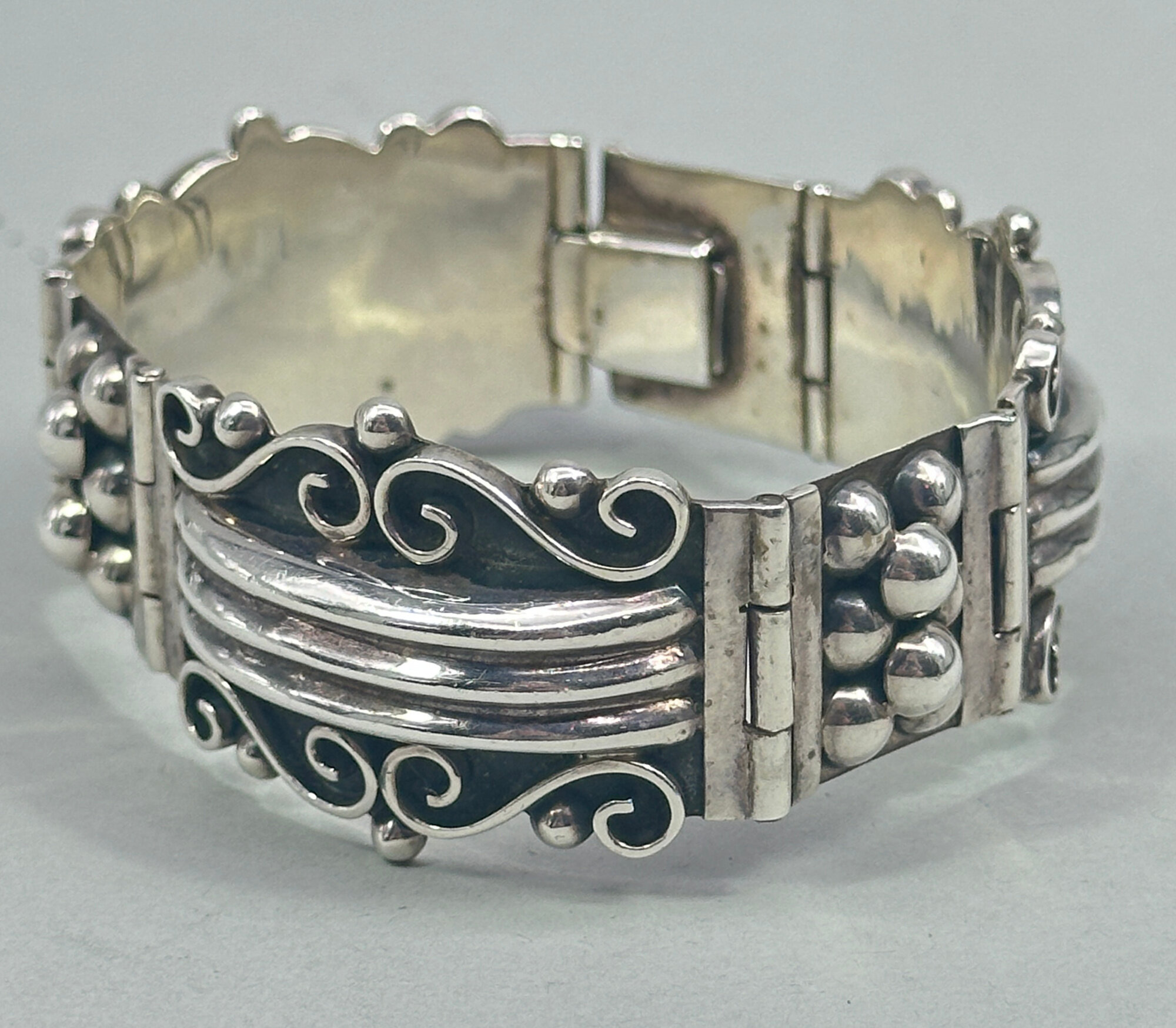
Outstanding Taxco silver bracelet c1960
Price: £295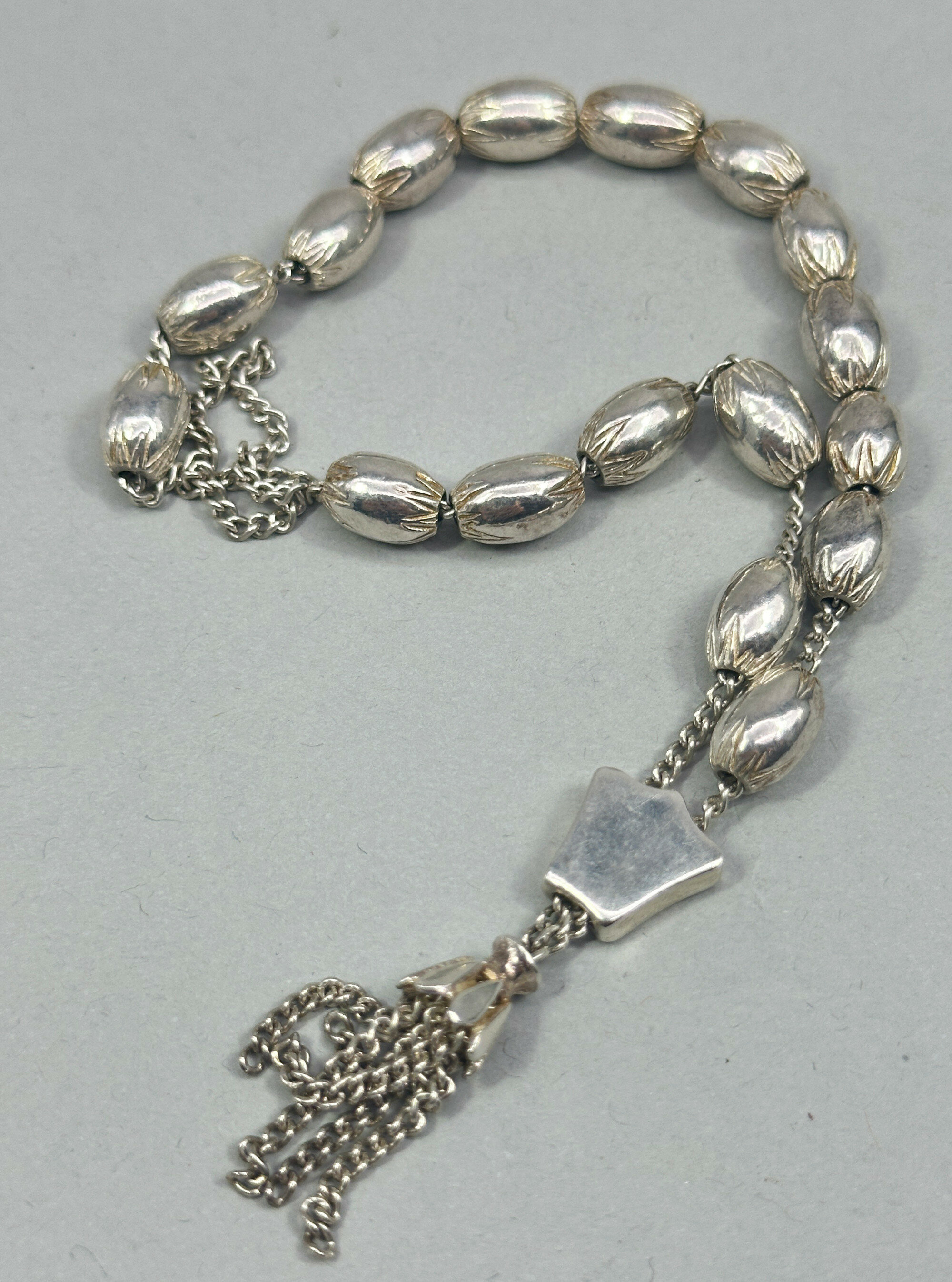
Silver prayer beads with seventeen Beads, 20th century
Price: £75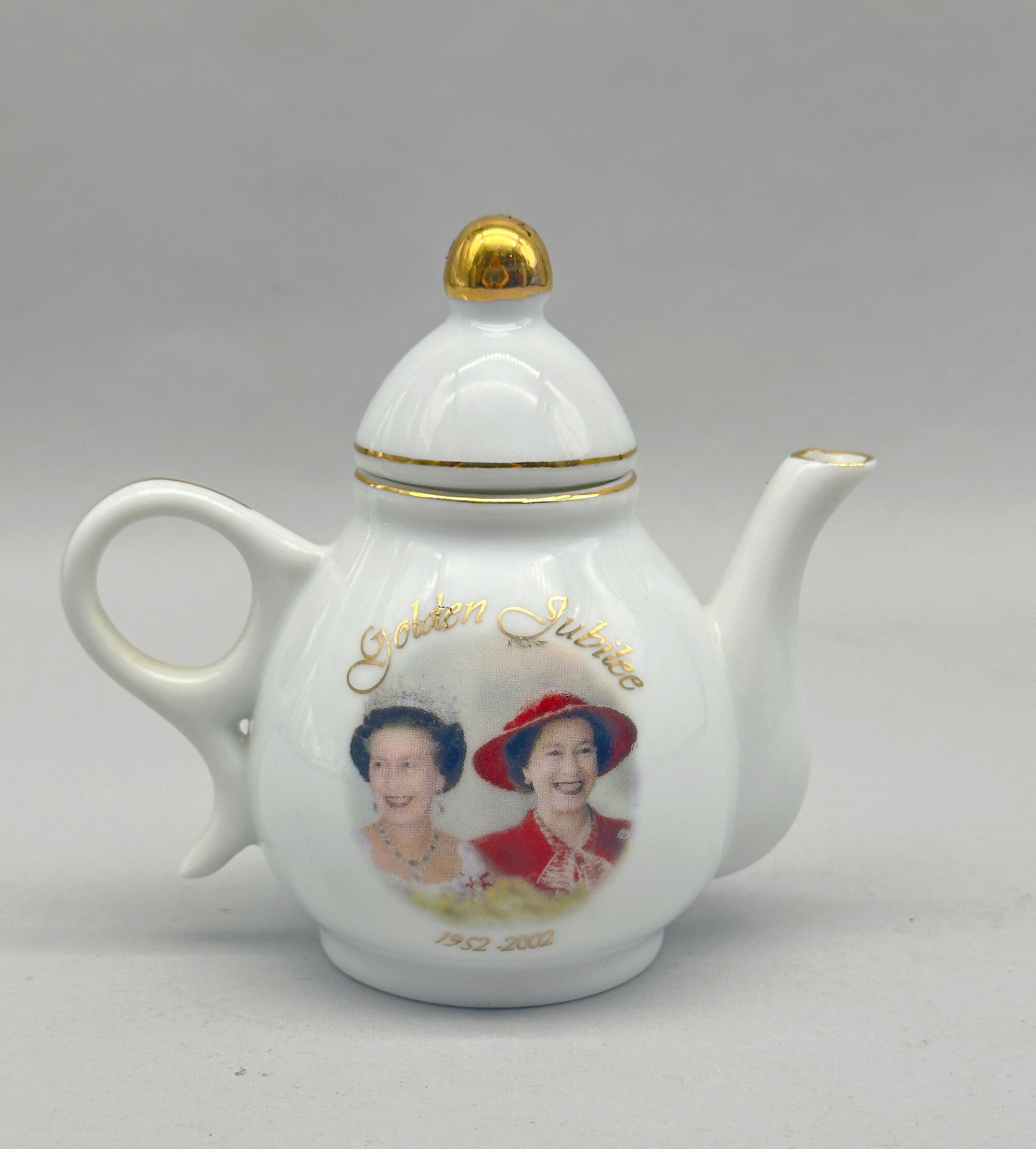
Teapot and Cover : Golden Jubilee Queen Elizabeth II, 2002
Price: £10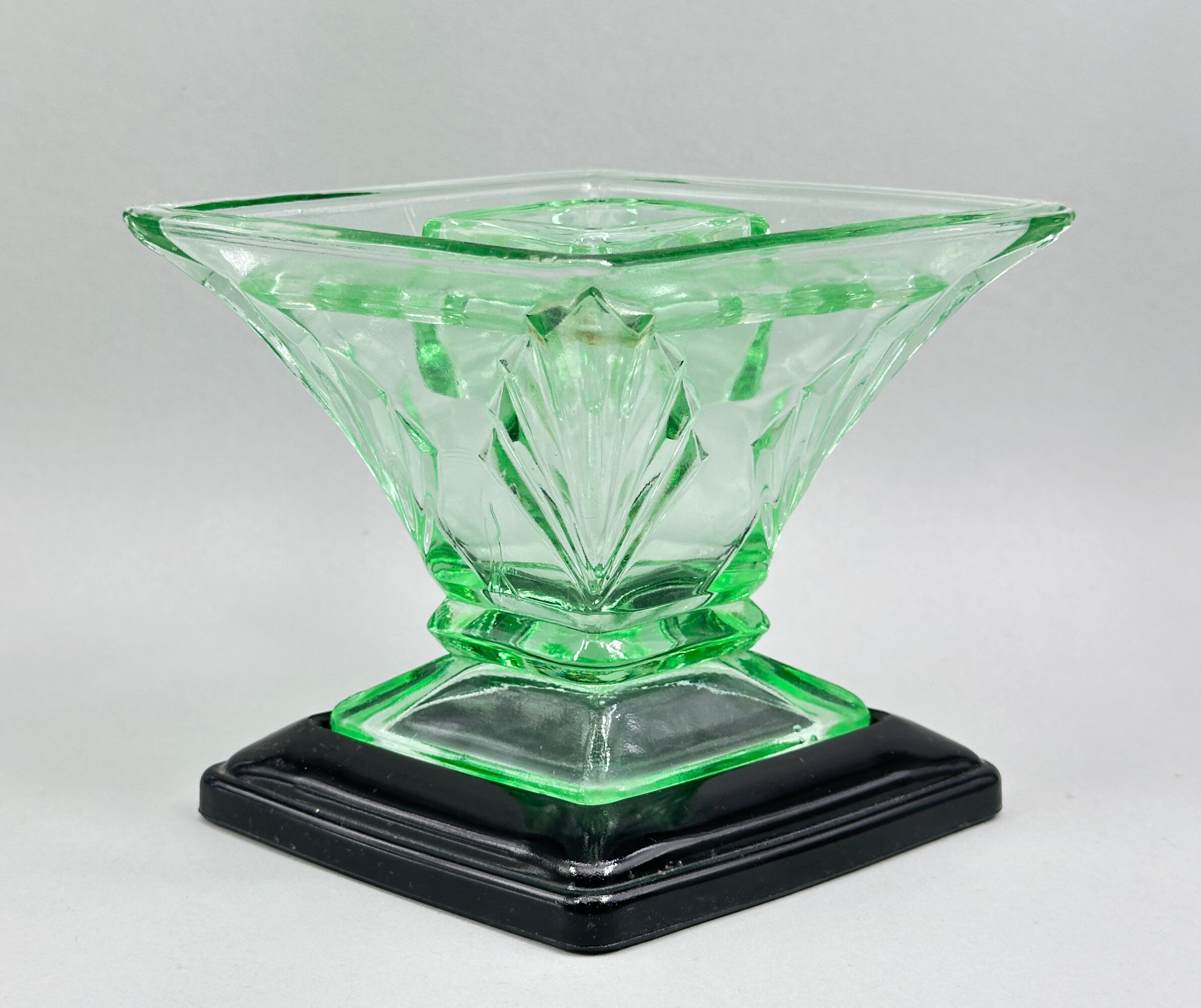
Art Deco Flower Vase, Frog and Stand, Bagley Glass, Spinette Range, 1930s
Price: £45Bagley Glass was established in Knottingly, England (south east of Leeds) in 1871. Bottle makers at first they branched out in 1912 and opened a department 'The Crystal Glass company' which made crystal and pressed glass. But it was for the latter that Bagley were to become famous and they became the biggest manufacturer of pressed glass in England in the years before and after the war. Many of their designs were influenced by the Art Nouveau styles and this flower vase, unusually presented complete with its frog and stand, is a classic example of their range.
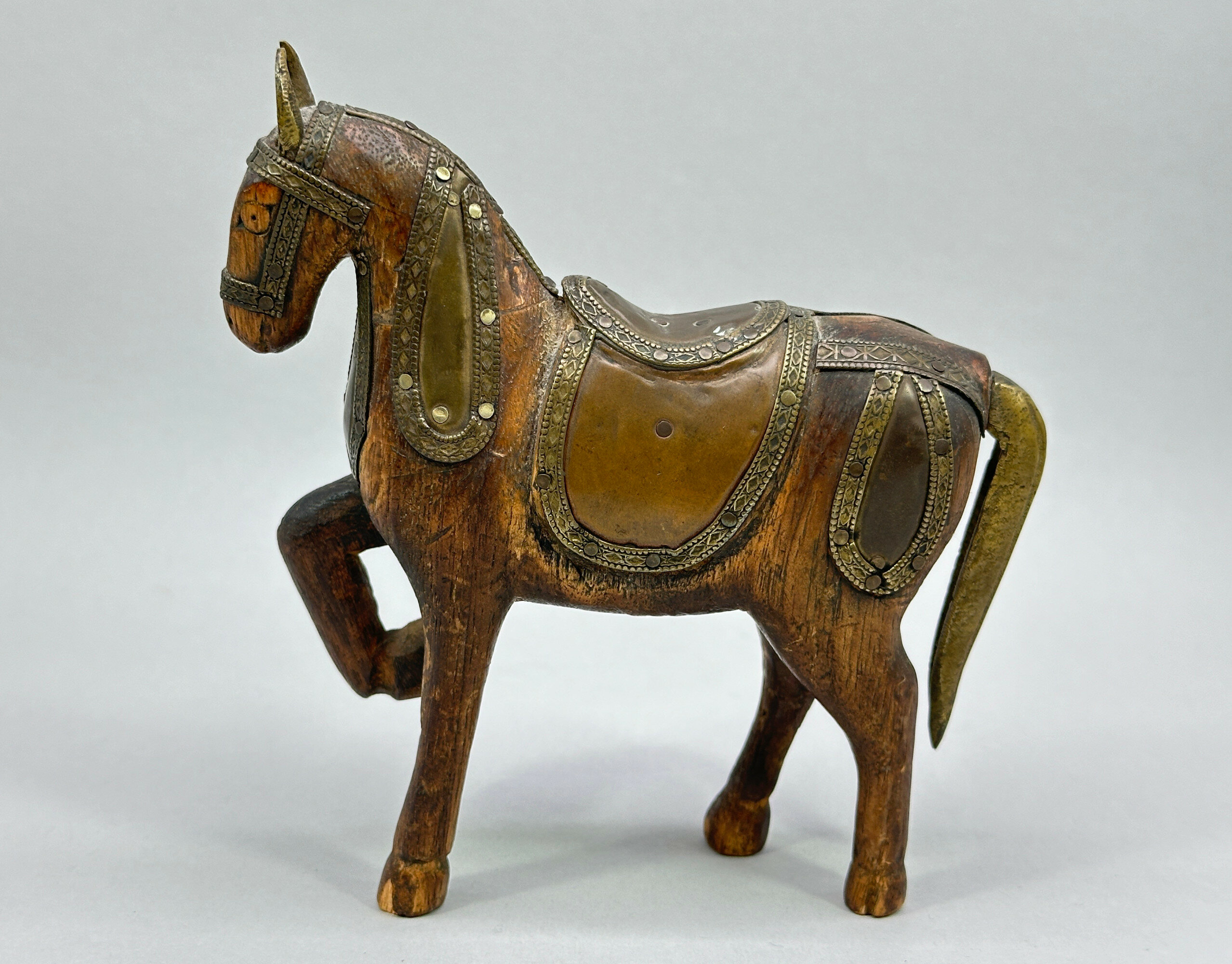
Indian wooden toy model of a Horse with metal fitments, early C20th
Price: £25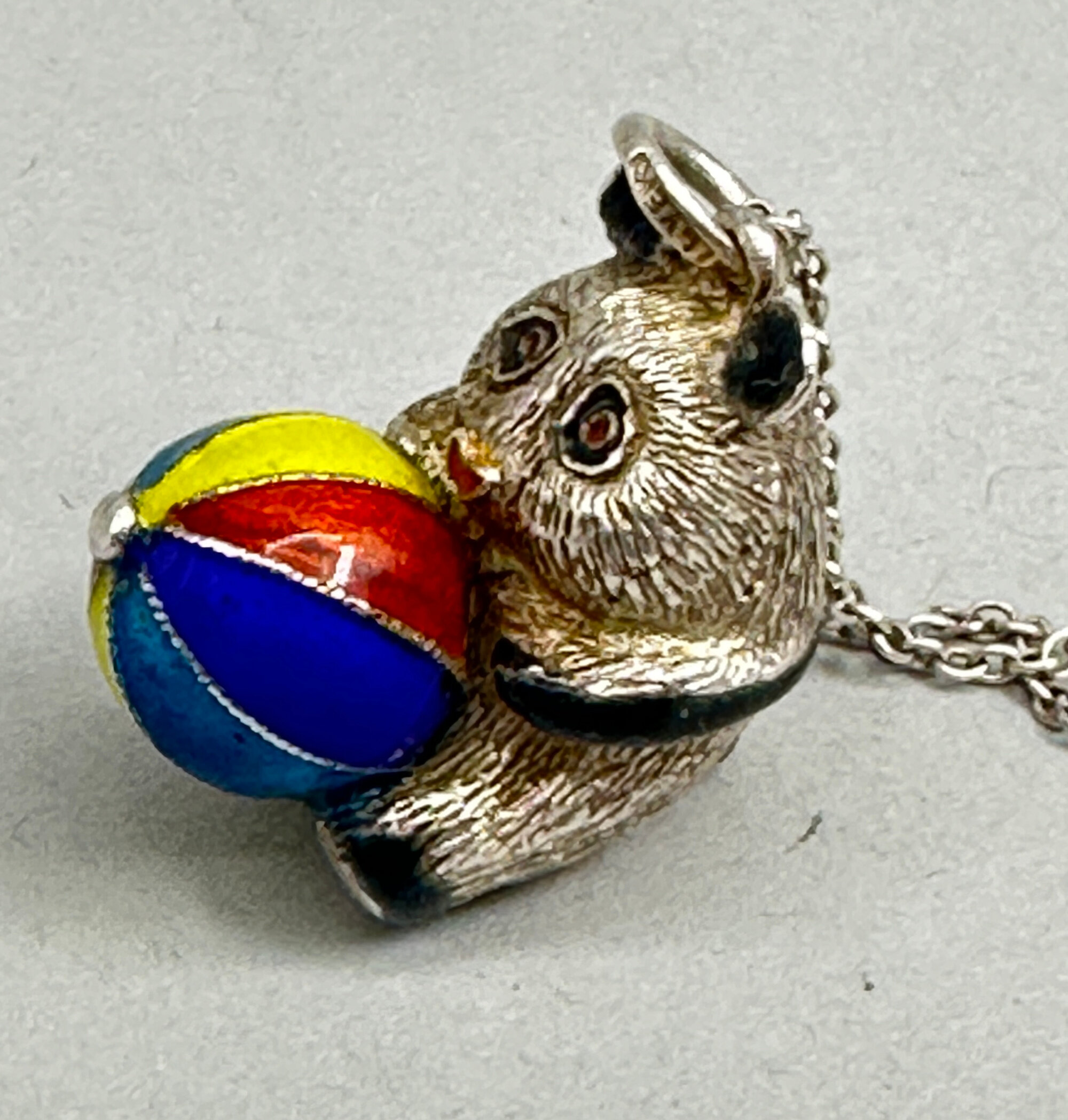
Sold silver and enamel Panda pendant necklace c1980
Price: £55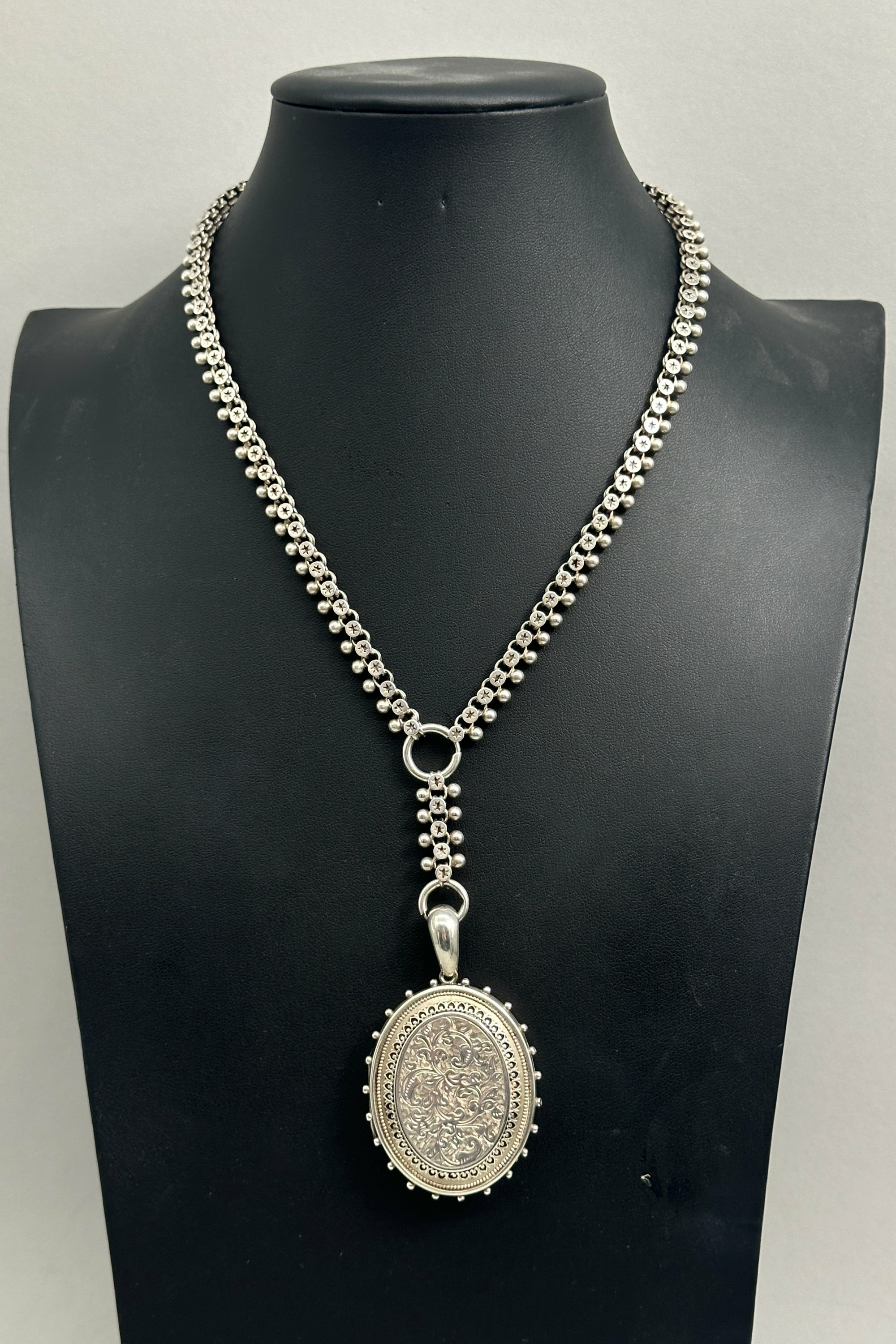
Victorian book chain with locket c1900
Price: £350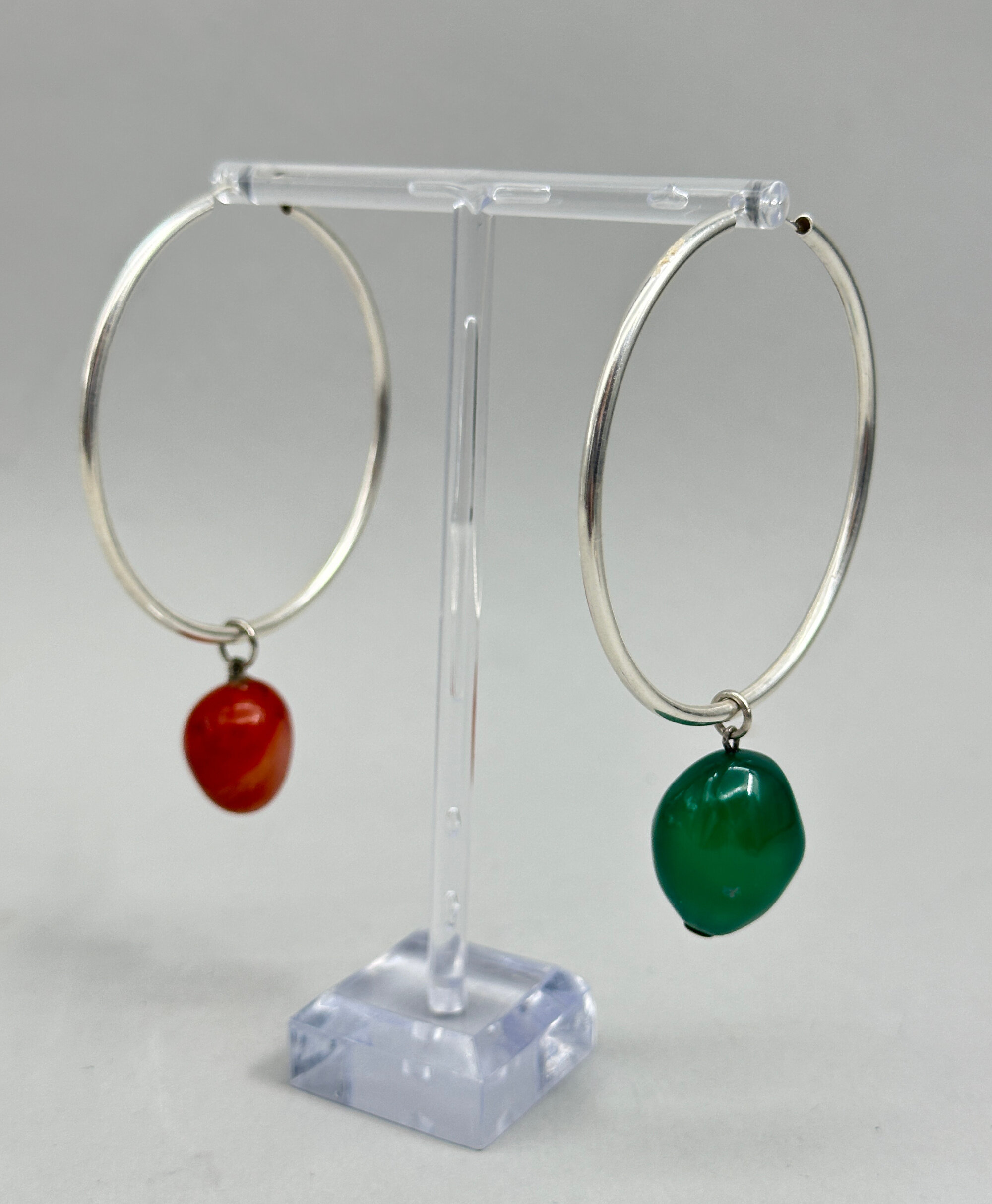
Pair of large hoop earrings with stone drops
Price: £45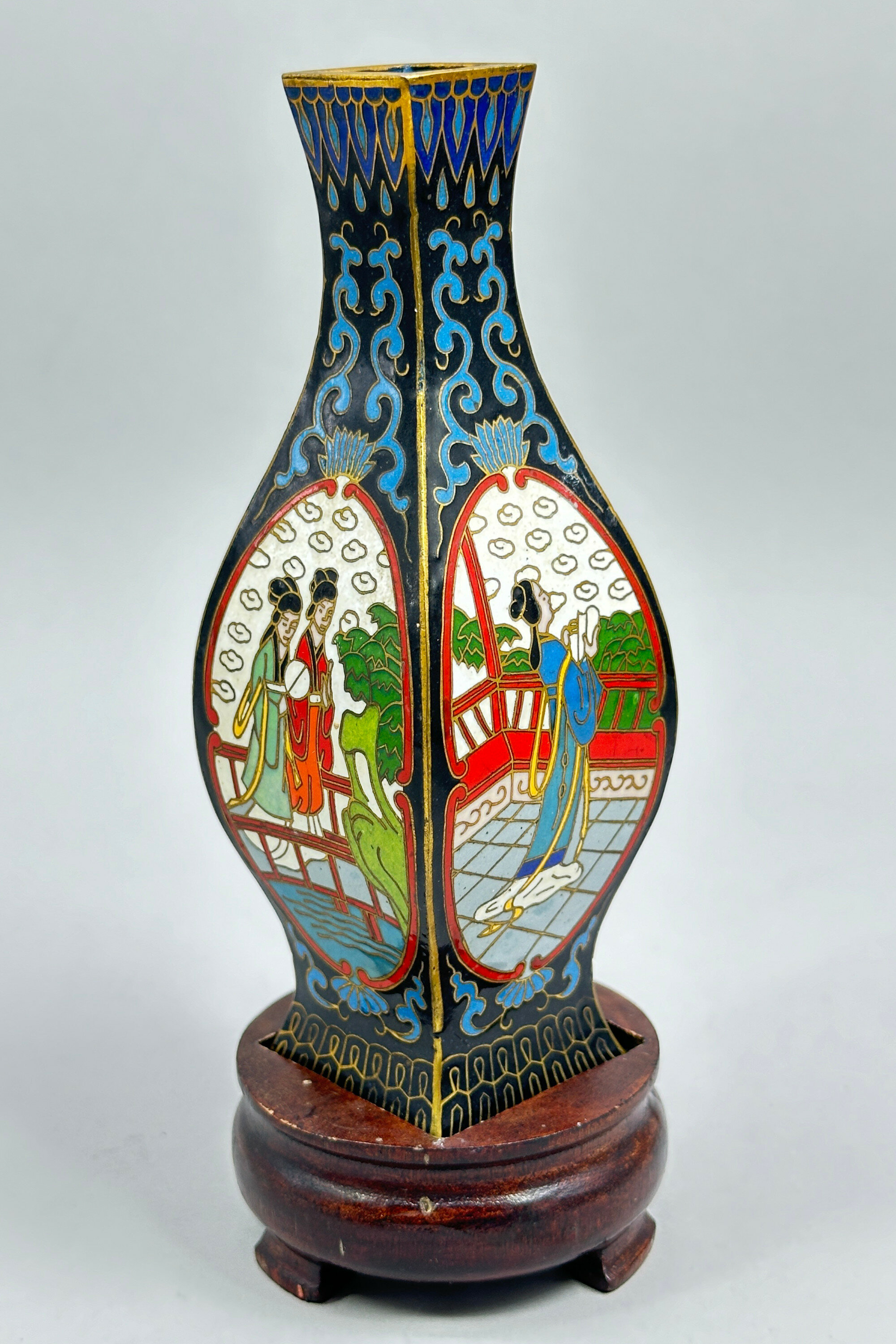
Chinese Cloisonné Square Vase on Stand, C20th
Price: £25The cloisonné technique, in which glass derived enamels were set in wire outlines (the so called ‘cloisons’ from the French word), was developed in China in the early Ming dynasty (1368-1644) and then used throughout, right up until the C20th, indeed pieces are still produced today. The style of enamelling here with fairly bold outlines to the decoration and the use of bright enamel colours suggests a dating here to the mid twentieth century which corresponds to the probable date of the accompanying wood stand. Perhaps intended as a desk ornament or possibly a flower vase, this piece could certainly find a home in a contemporary setting.
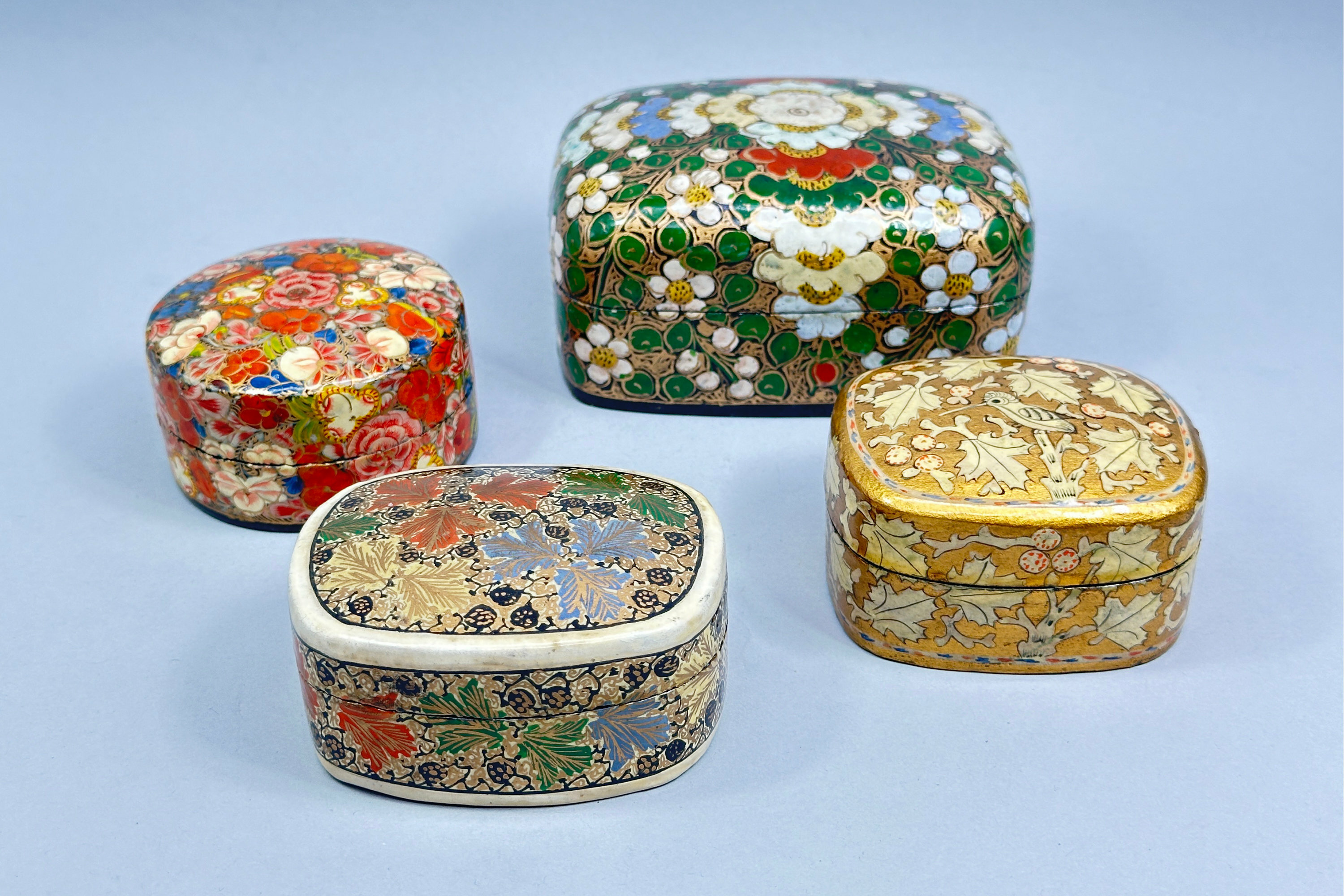
Four Papier-mâché Trinket Boxes, Kashmir, mid C20th
Price: £35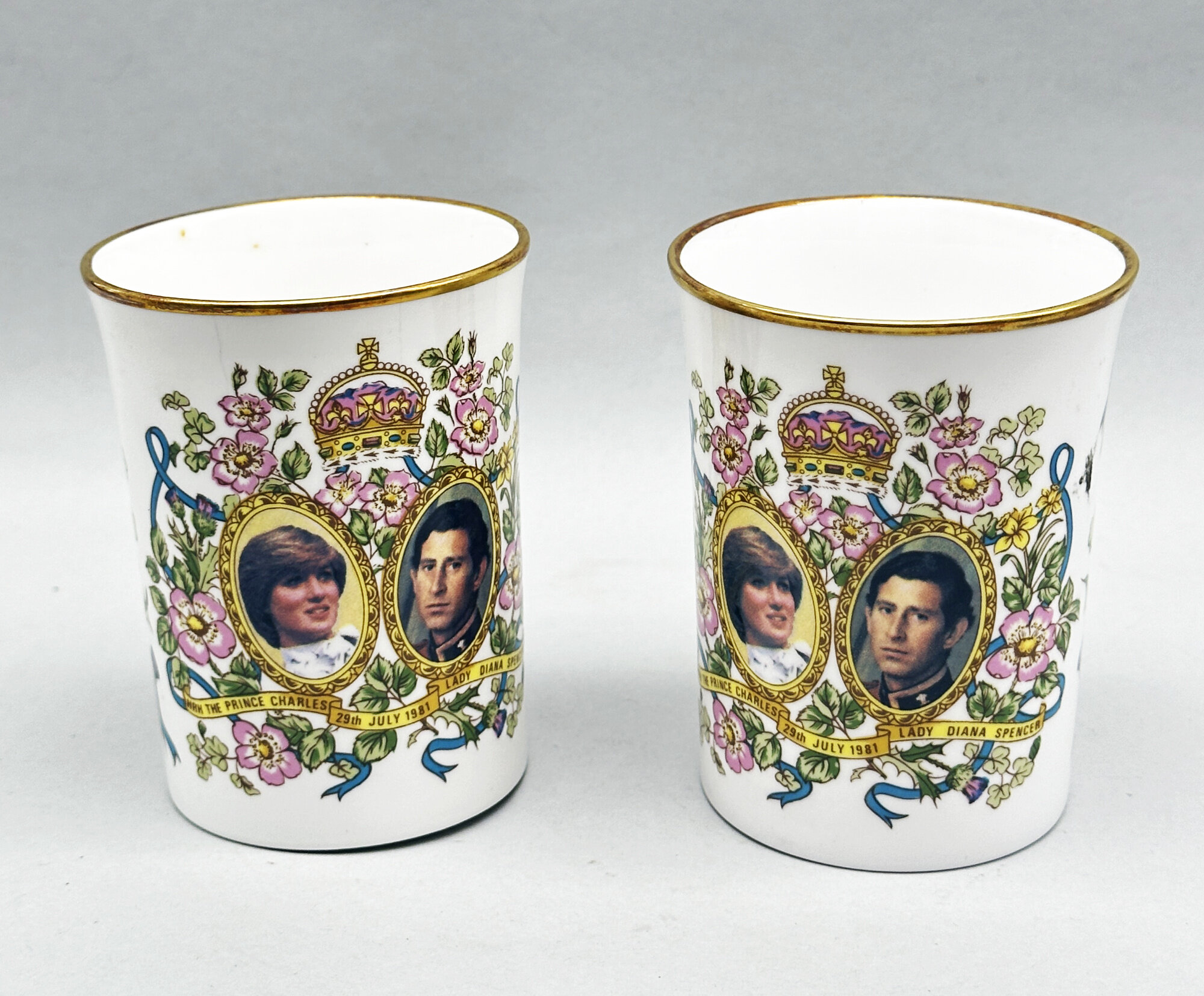
Two Beakers : Wedding of the Prince Charles and Lady Diana Spencer, 1981
Price: £15
Two Amelia Art Glass Vases, Apple and Pear
Price: £30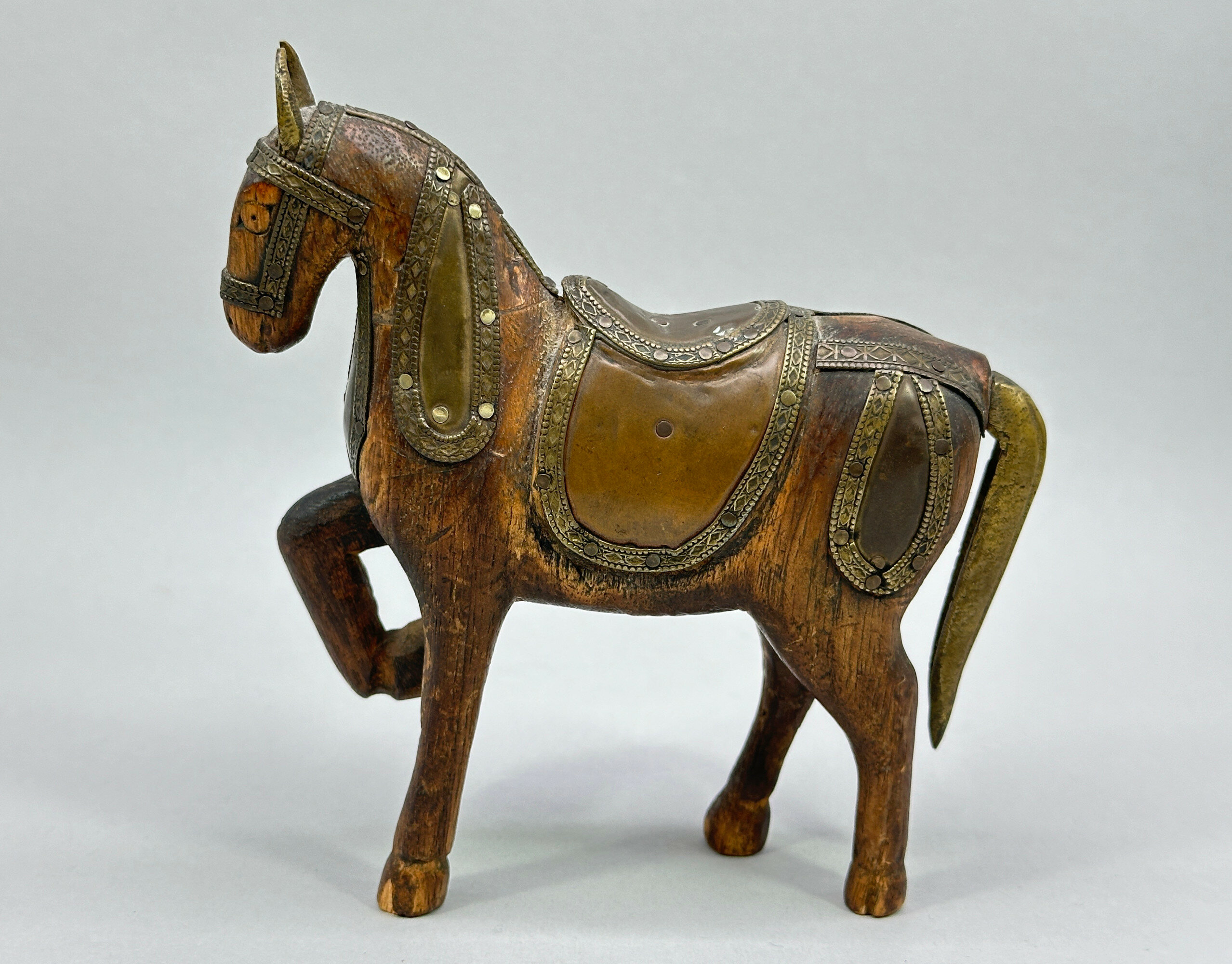
Indian wooden toy model of a Horse with metal fitments, early C20th
Price: £25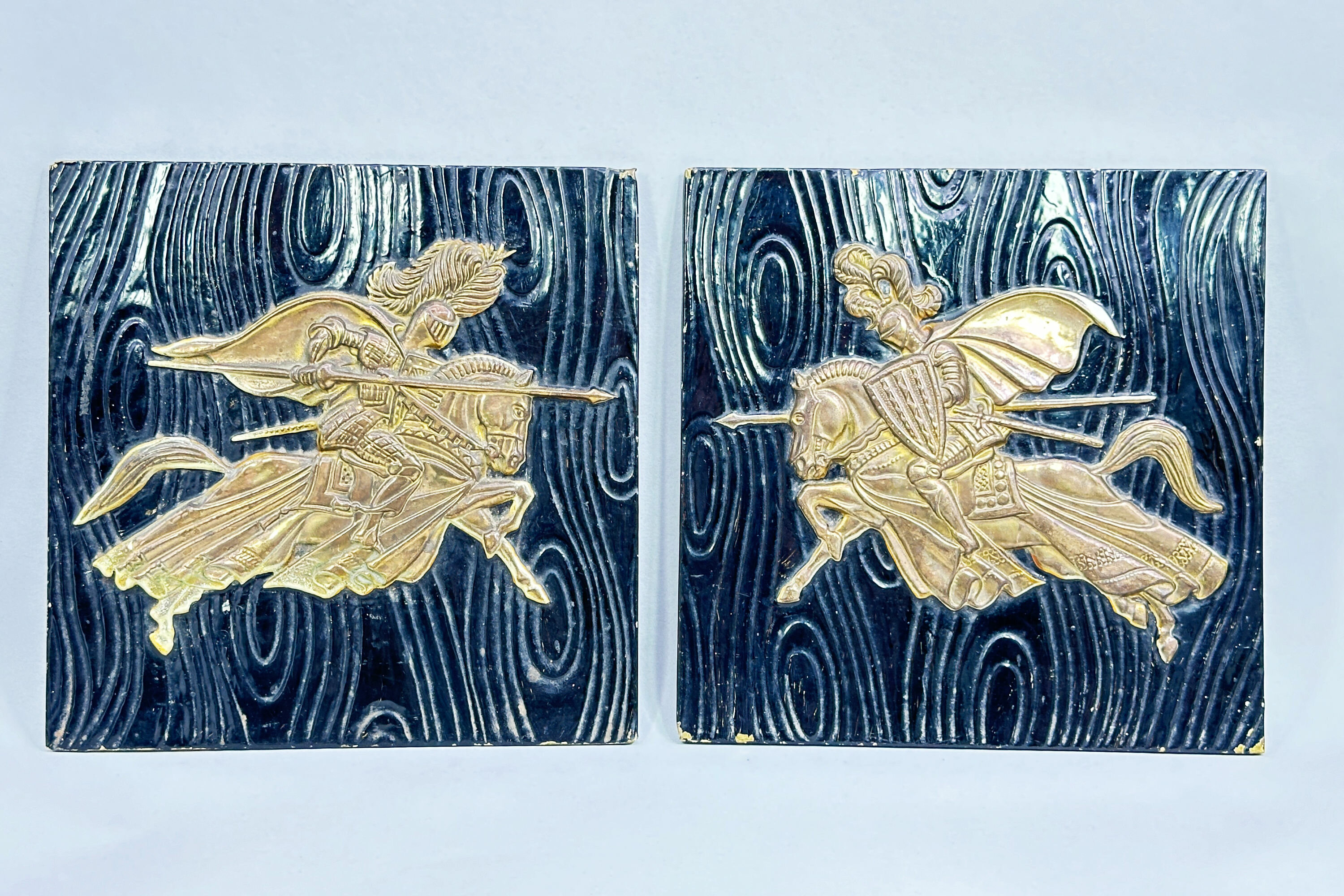
Pair of Brass Wall Plaques of Jousting Knights, Peerage Brass, mid C20th
Price: £45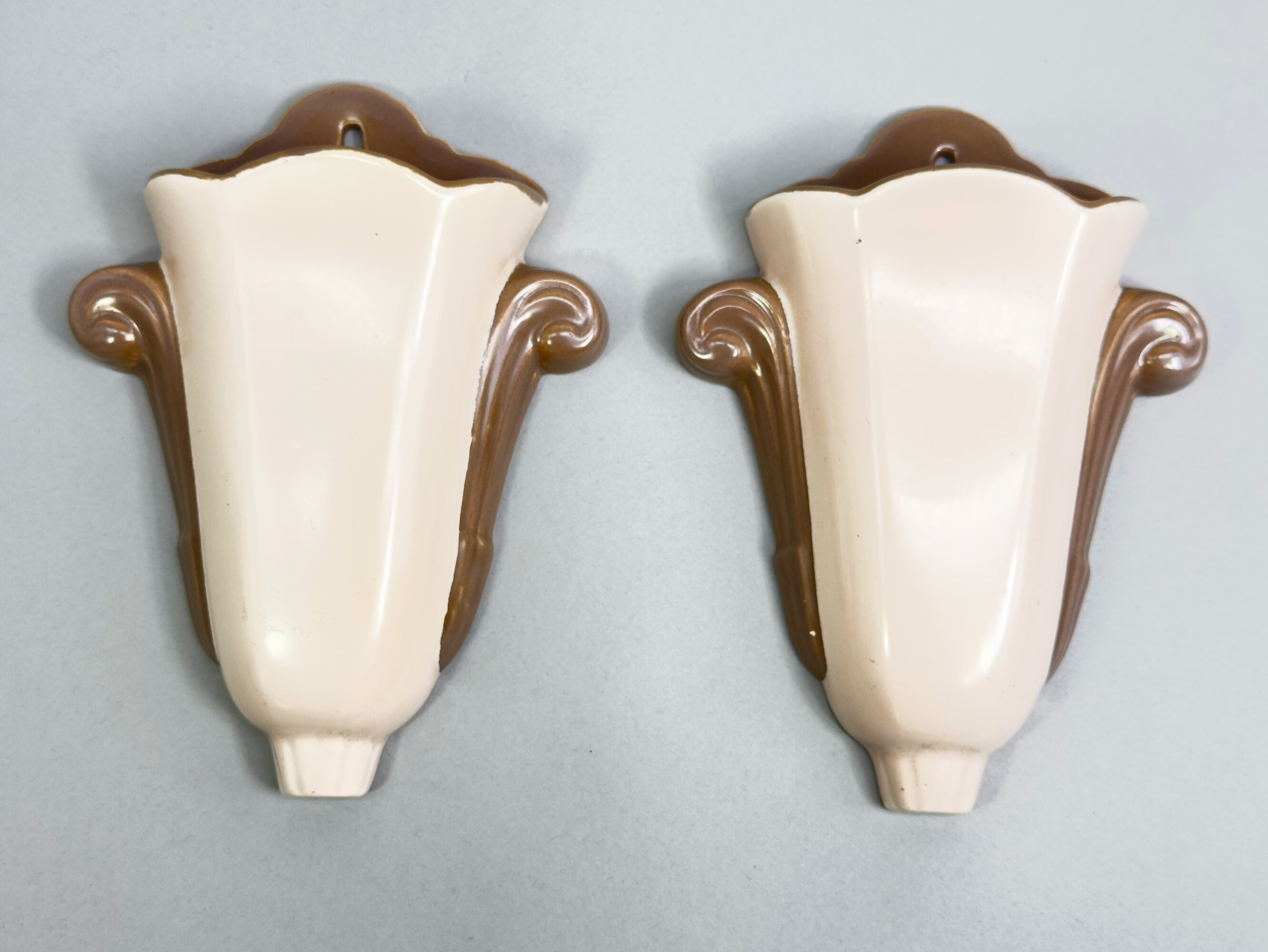
Pair of Art Deco style Wall Pocket Vases, Poole Pottery, mid C20th
Price: £55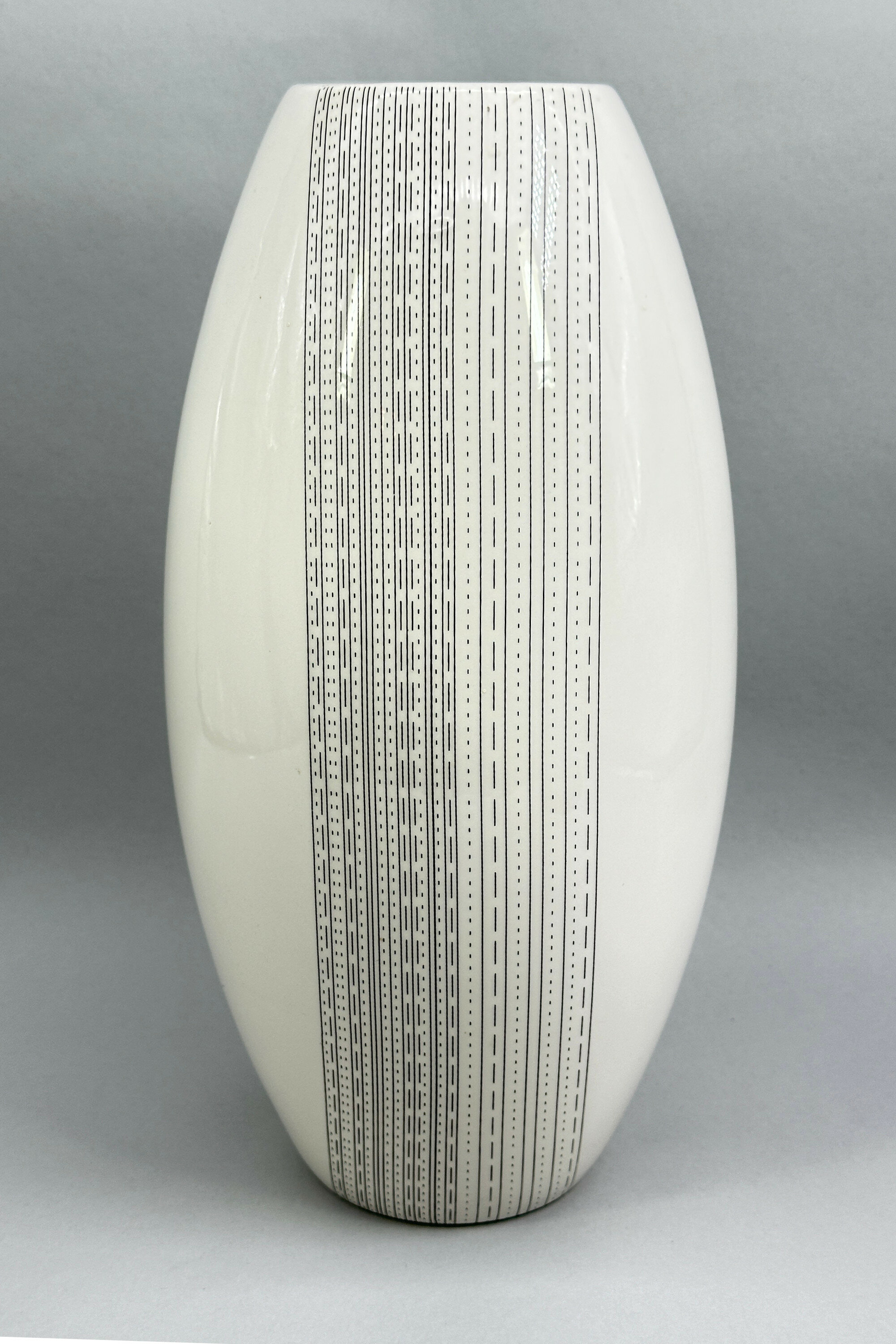
Abstract Design White Glaze Vase, probably British mid C20th
Price: £25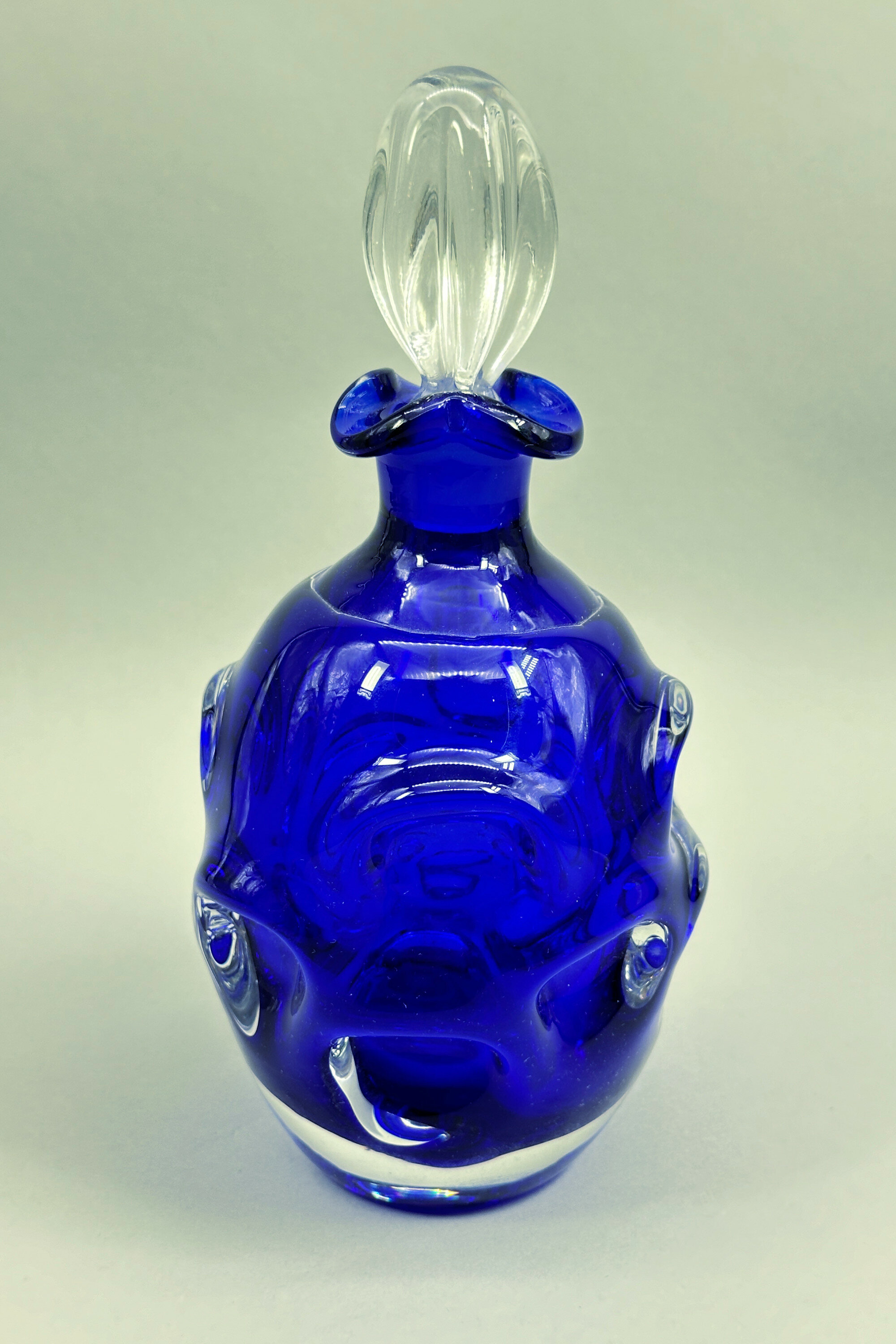
Aseda Glasbruk Blue Glass Bottle and Stopper by Bo Borgstrom, 1960s
Price: £55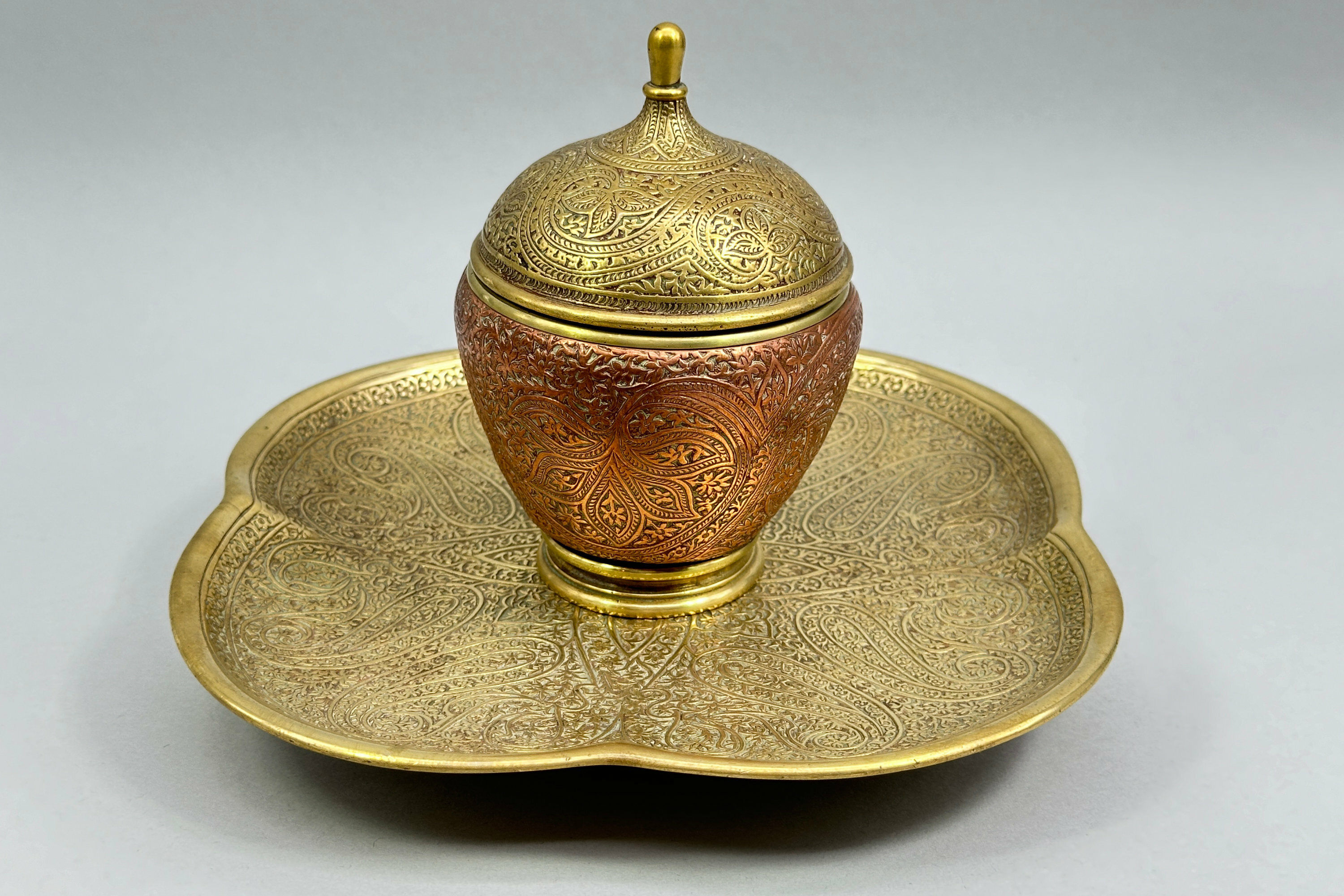
Indian Brass and Copper Inkwell, C20th
Price: £55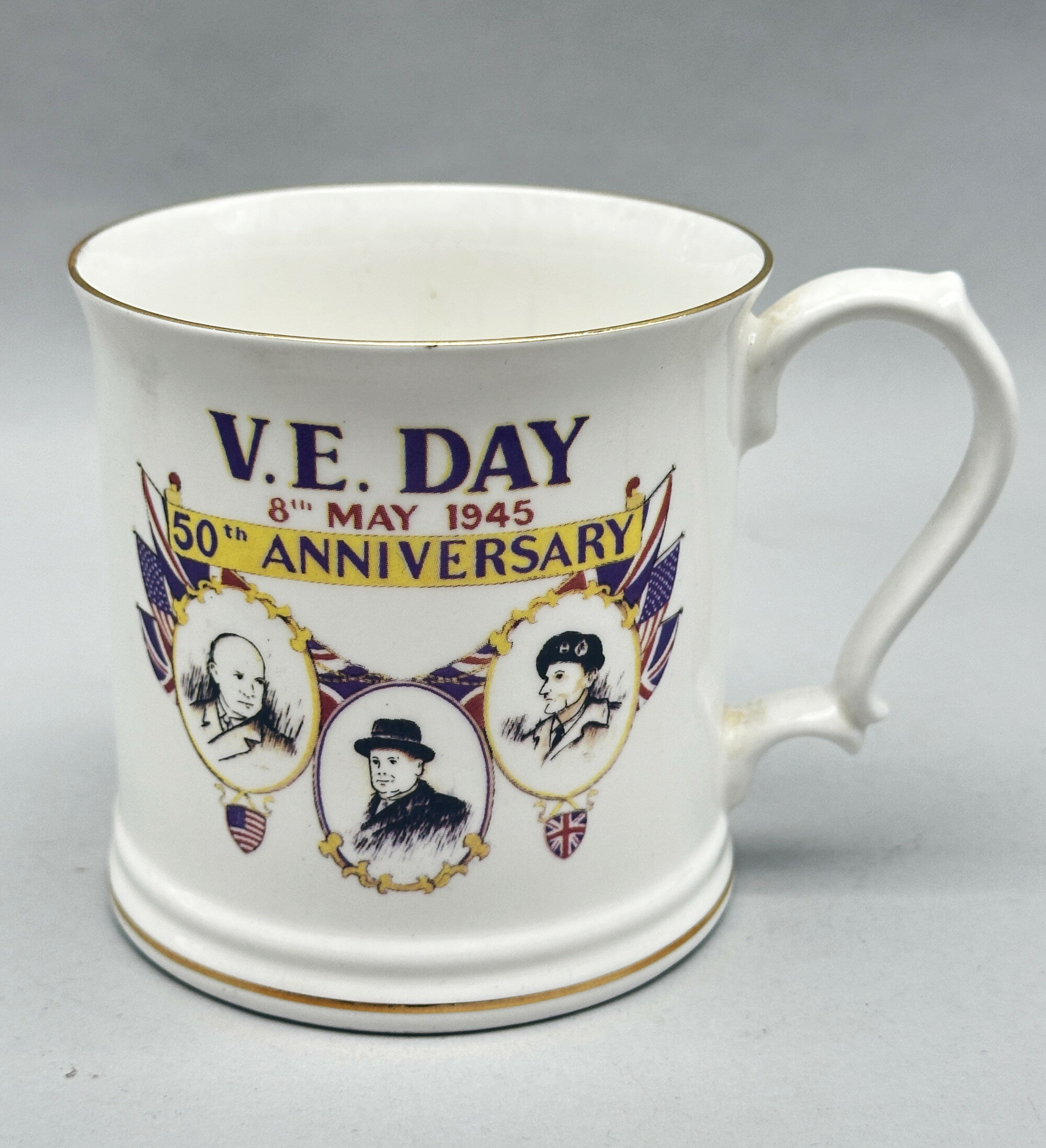
VE Day, 50th Anniversary Commemorative Mug, 1995
Price: £10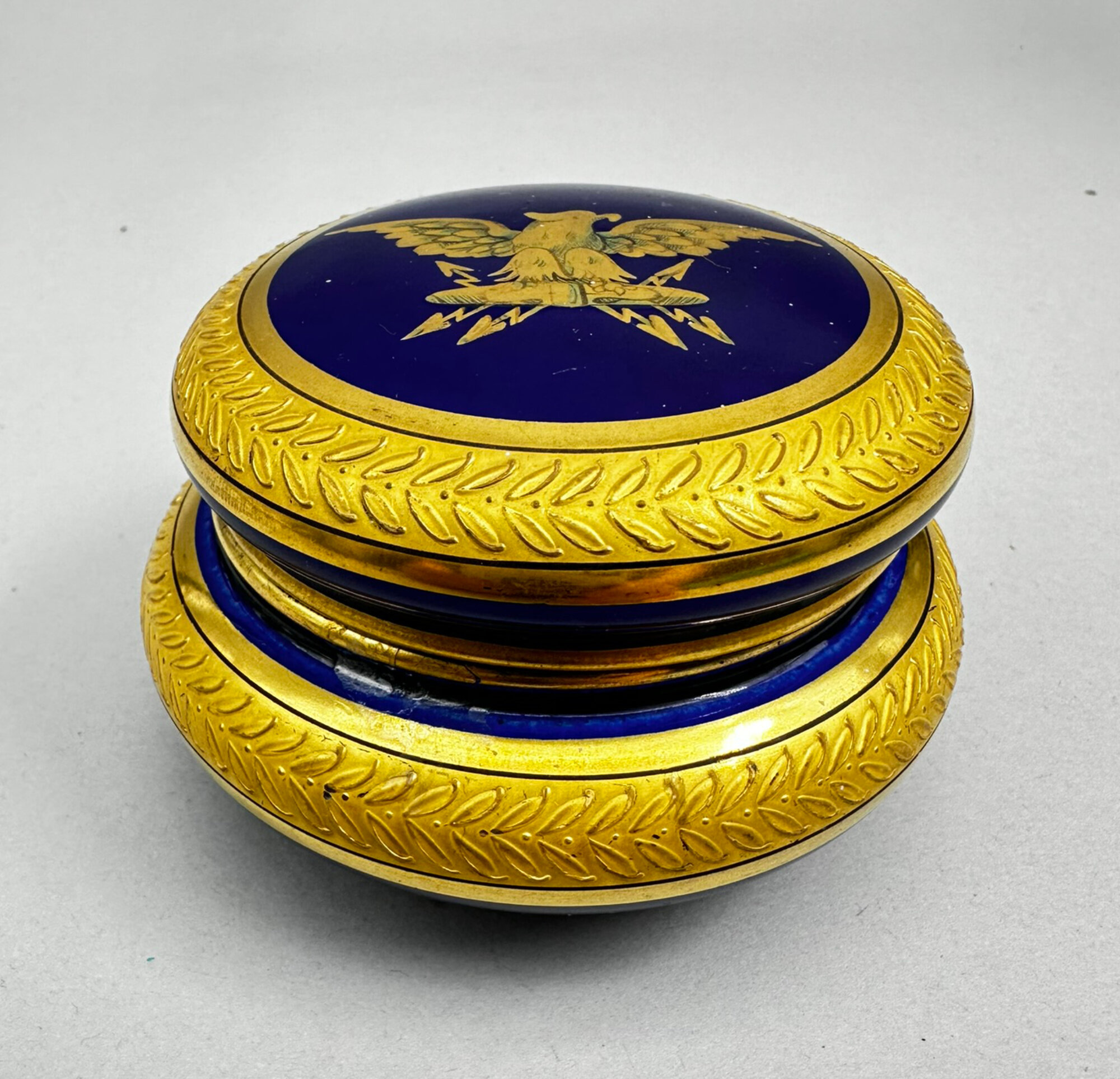
Blue Ground Empire Style Powder Box and Cover, Jean Pouyat, Limoges circa 1900
Price: £75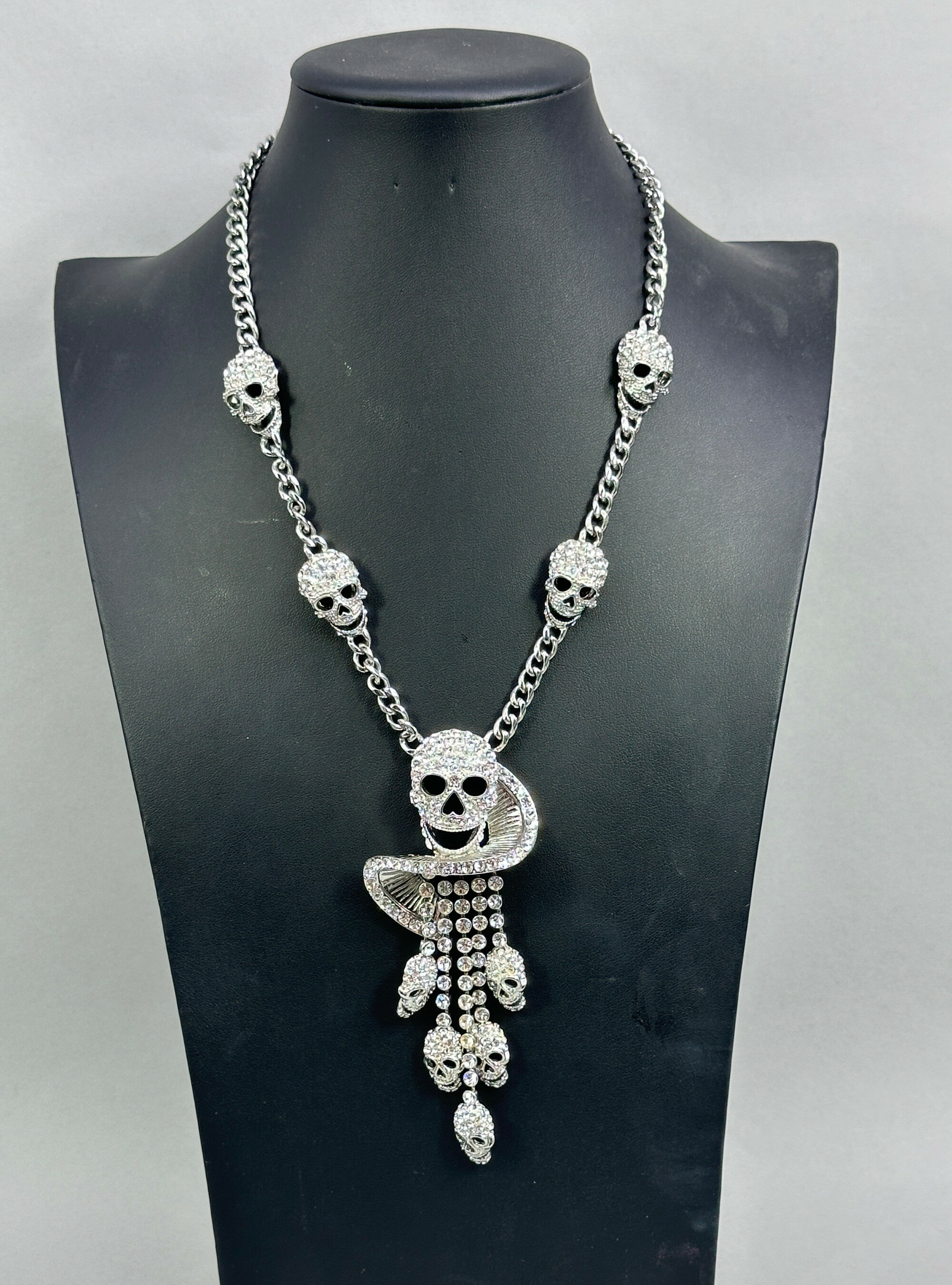
Butler and Wilson Skull Necklace, boxed, modern
Price: £125
Framed Oil Painting on Board of a Winter Landscape Scene, C20th
Price: £55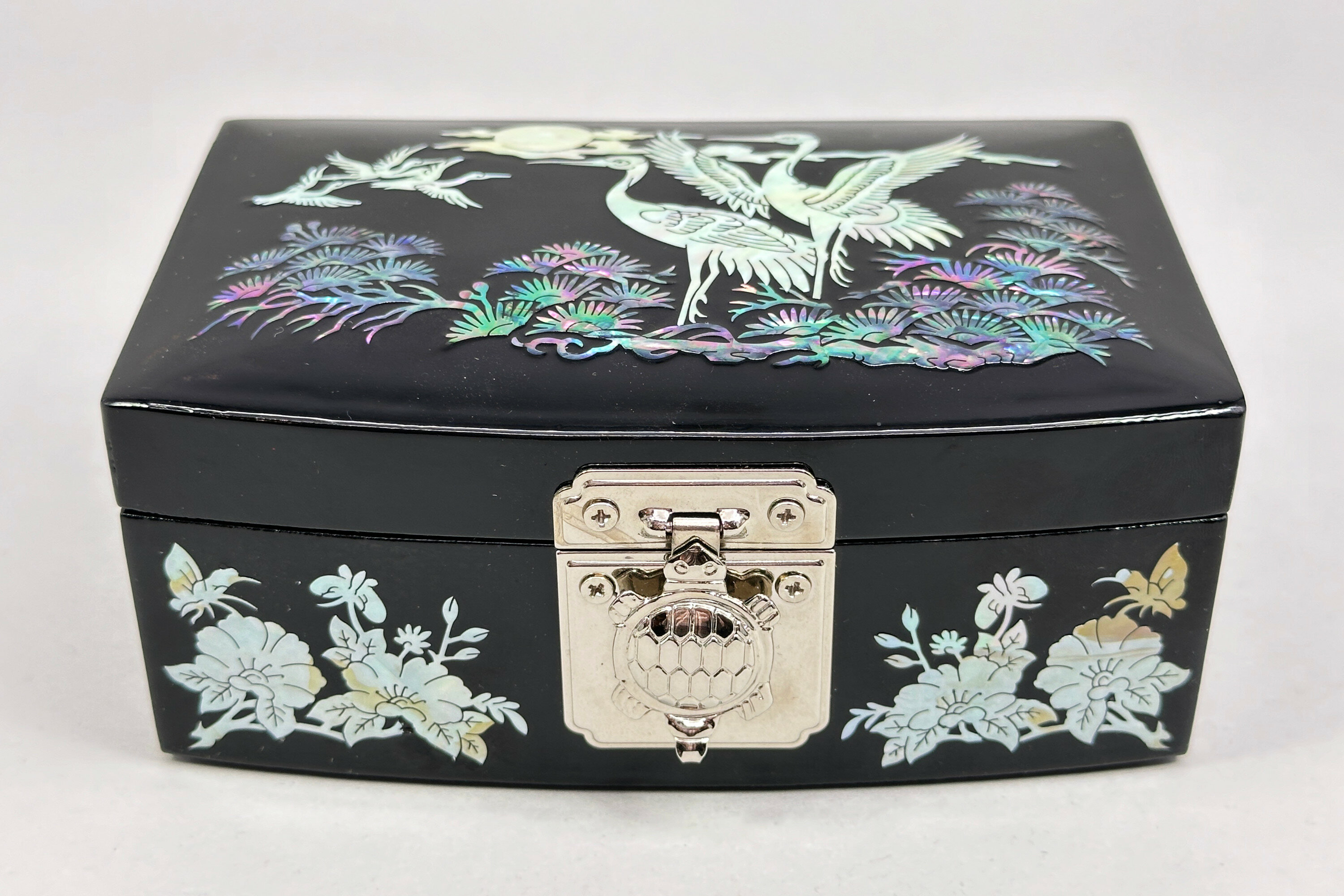
Korean Najeonchilgi lacquerware jewellery Box, C20th
Price: £25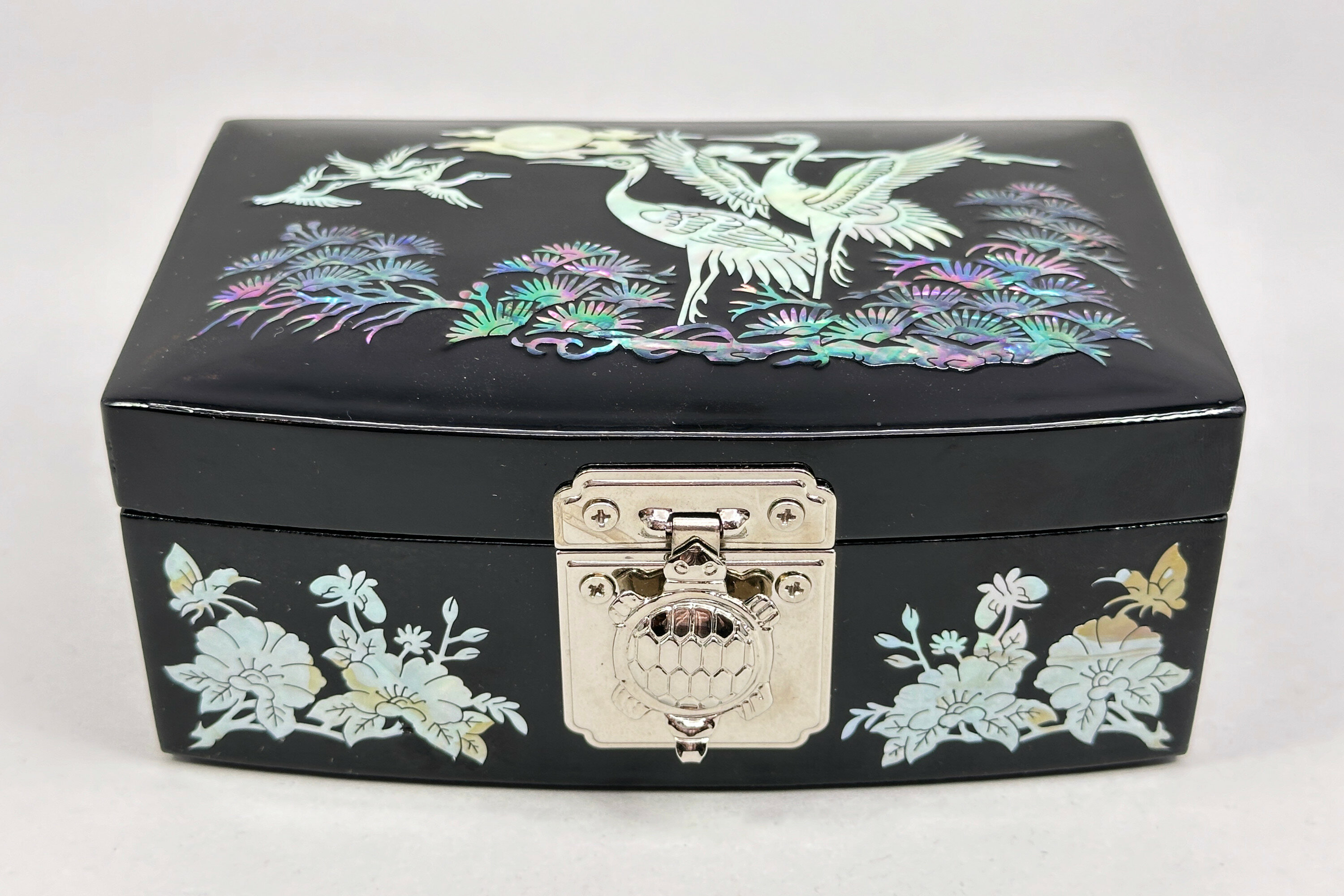
Korean Najeonchilgi lacquerware jewellery Box, C20th
Price: £25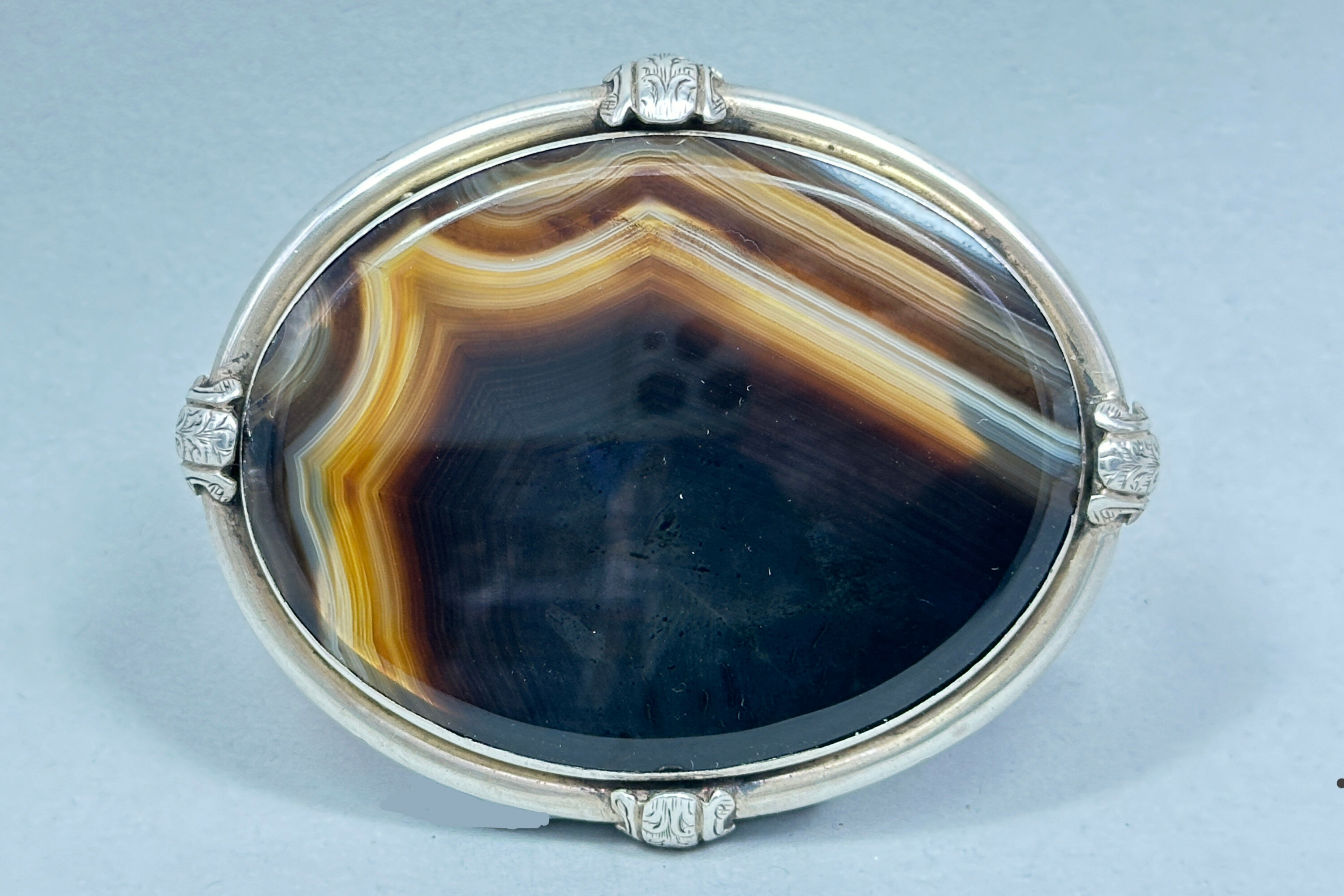
Victorian Silver Mounted Banded Agate Brooch, late C19th
Price: £100
Green Chalcedony silver mounted brooch with marcasite stones, 1940s
Price: £45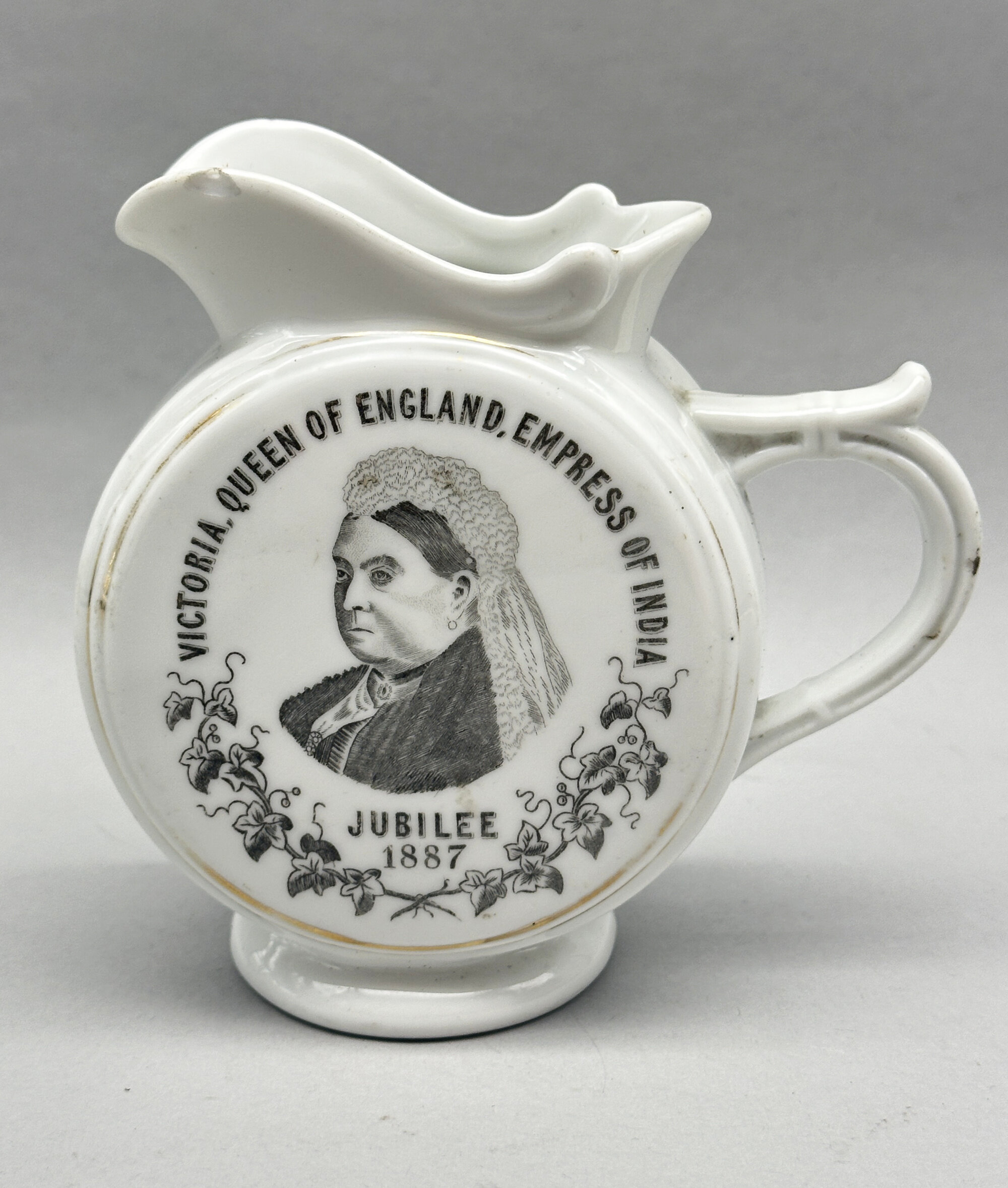
Queen Victoria Golden Jubilee Jug, 1887
Price: £10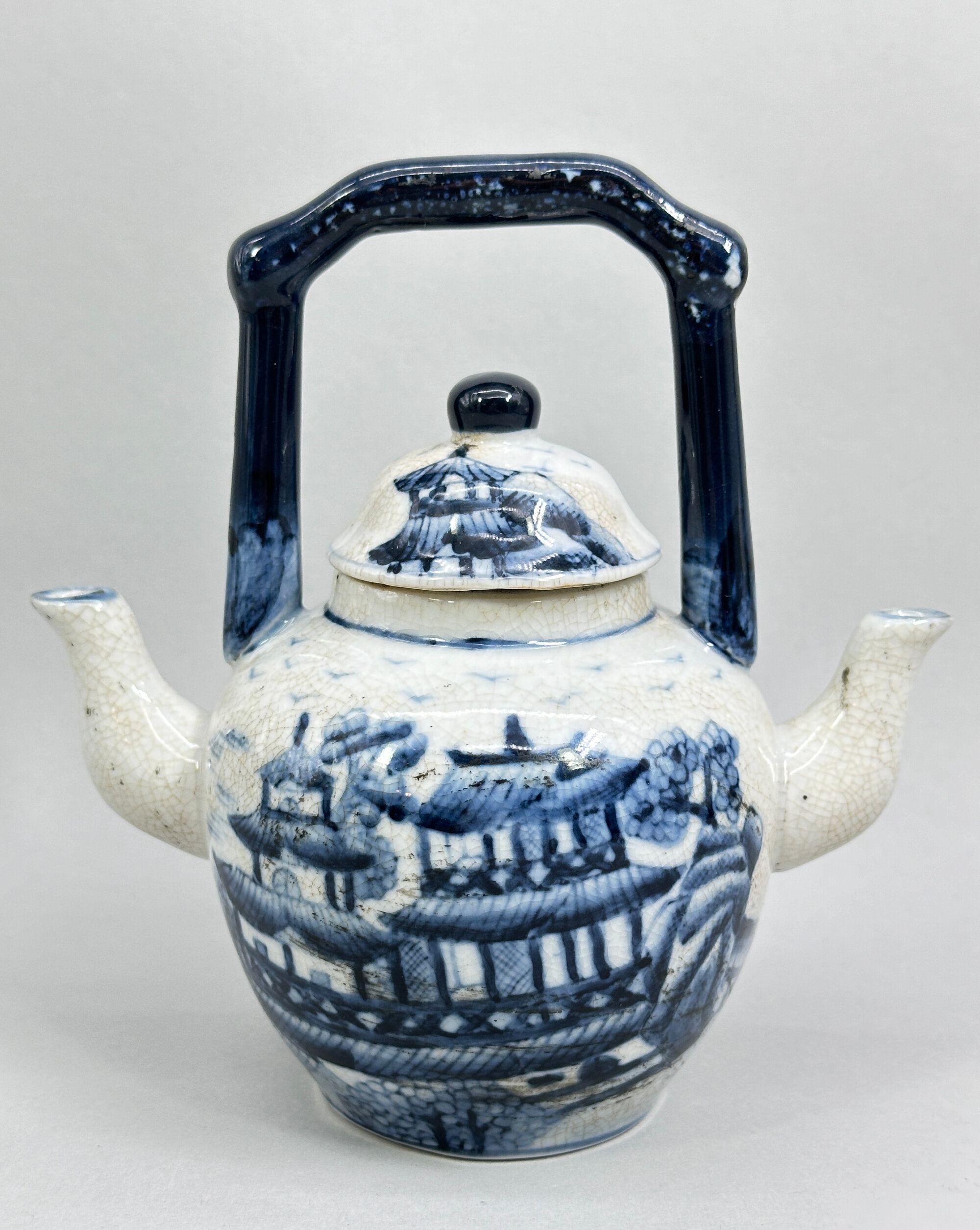
Chinese provincial double spout Teapot, early C20th
Price: £55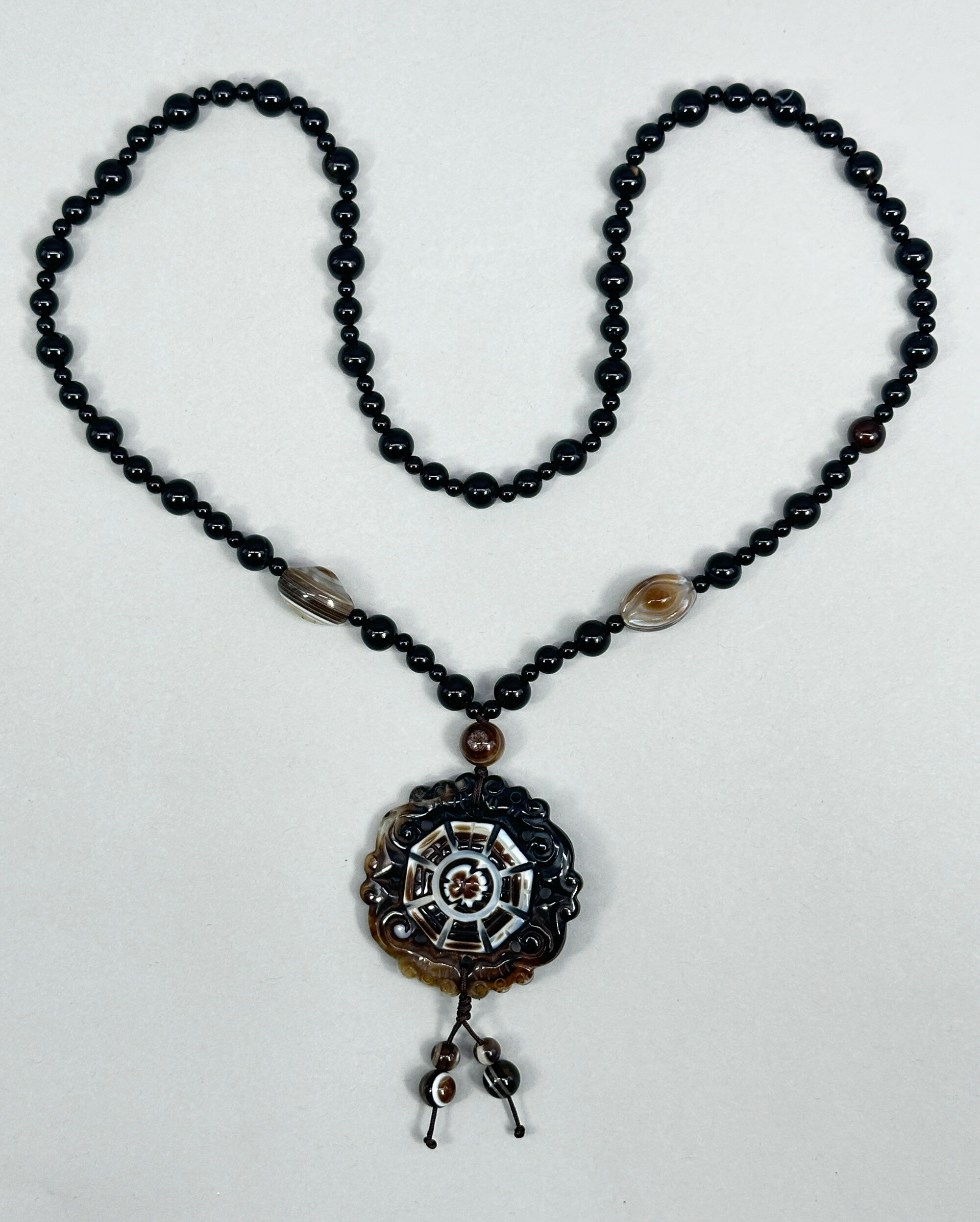
Chinese agate carving with onyx beads, 20th century
Price: £35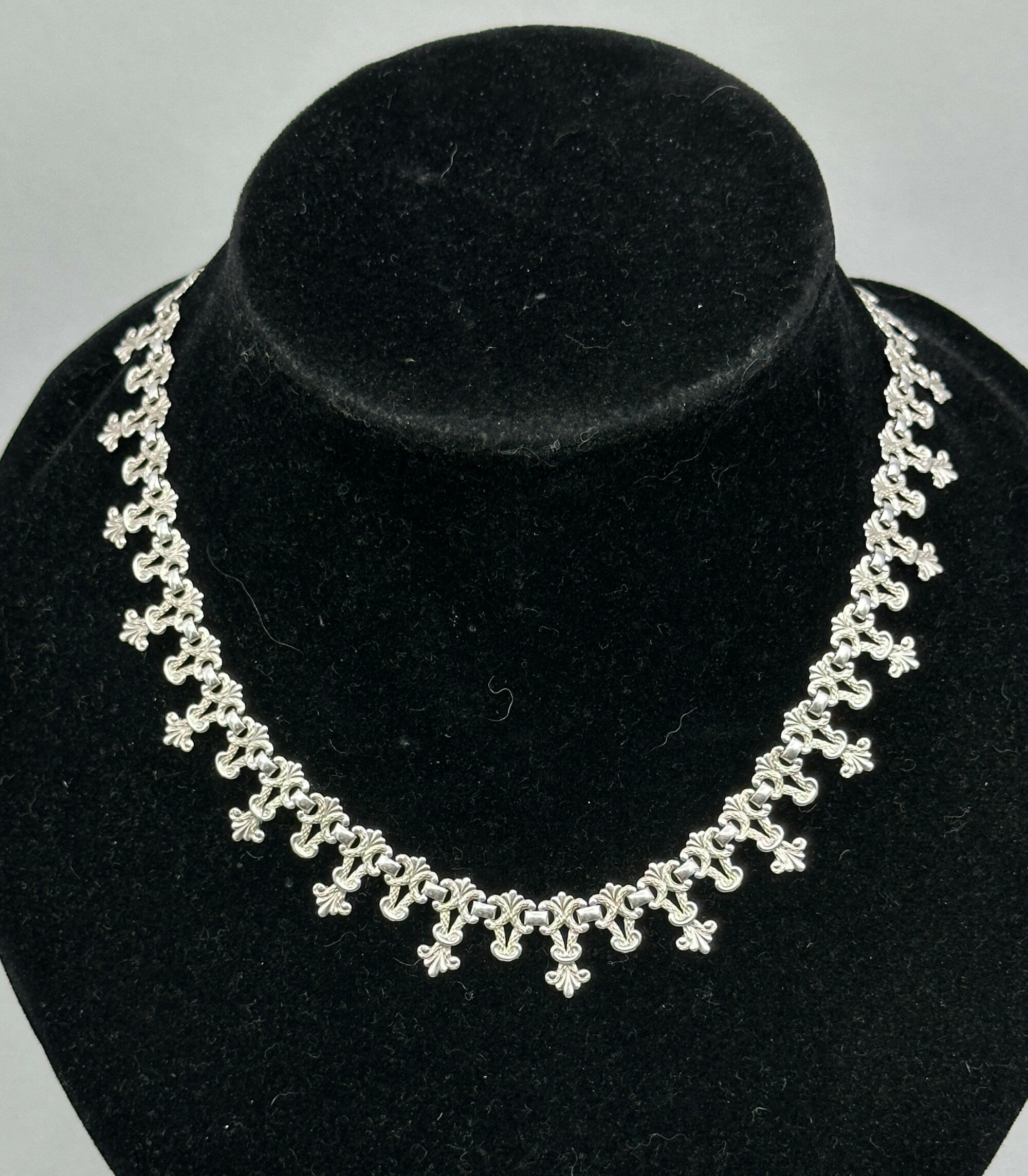
Edwardian silver fleur-de-lis collar necklace circa 1910
Price: £85Please note that the necklace is not marked for silver and has not been tested.
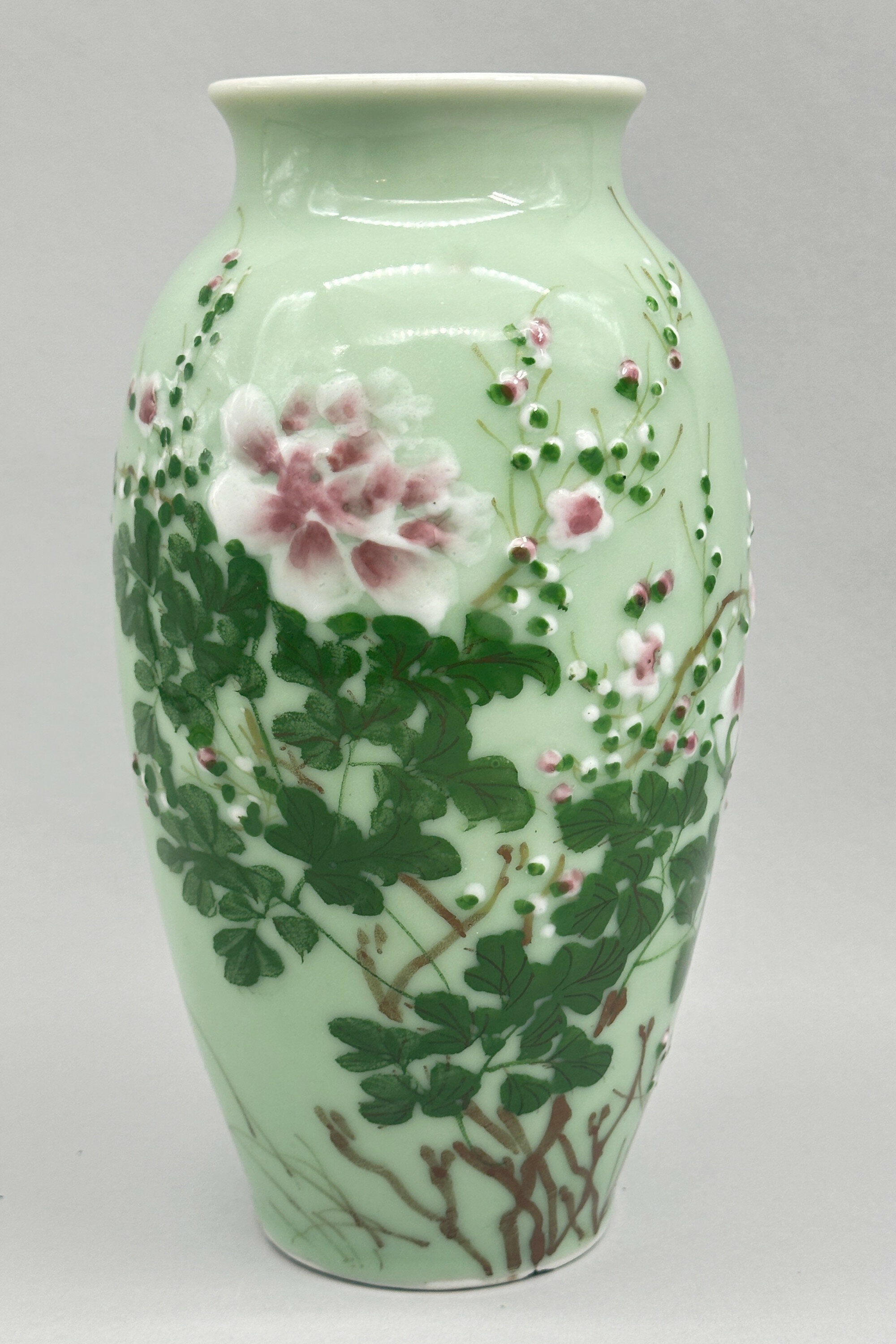
Japanese Celadon glaze vase with enamel decoration, late C19th
Price: £25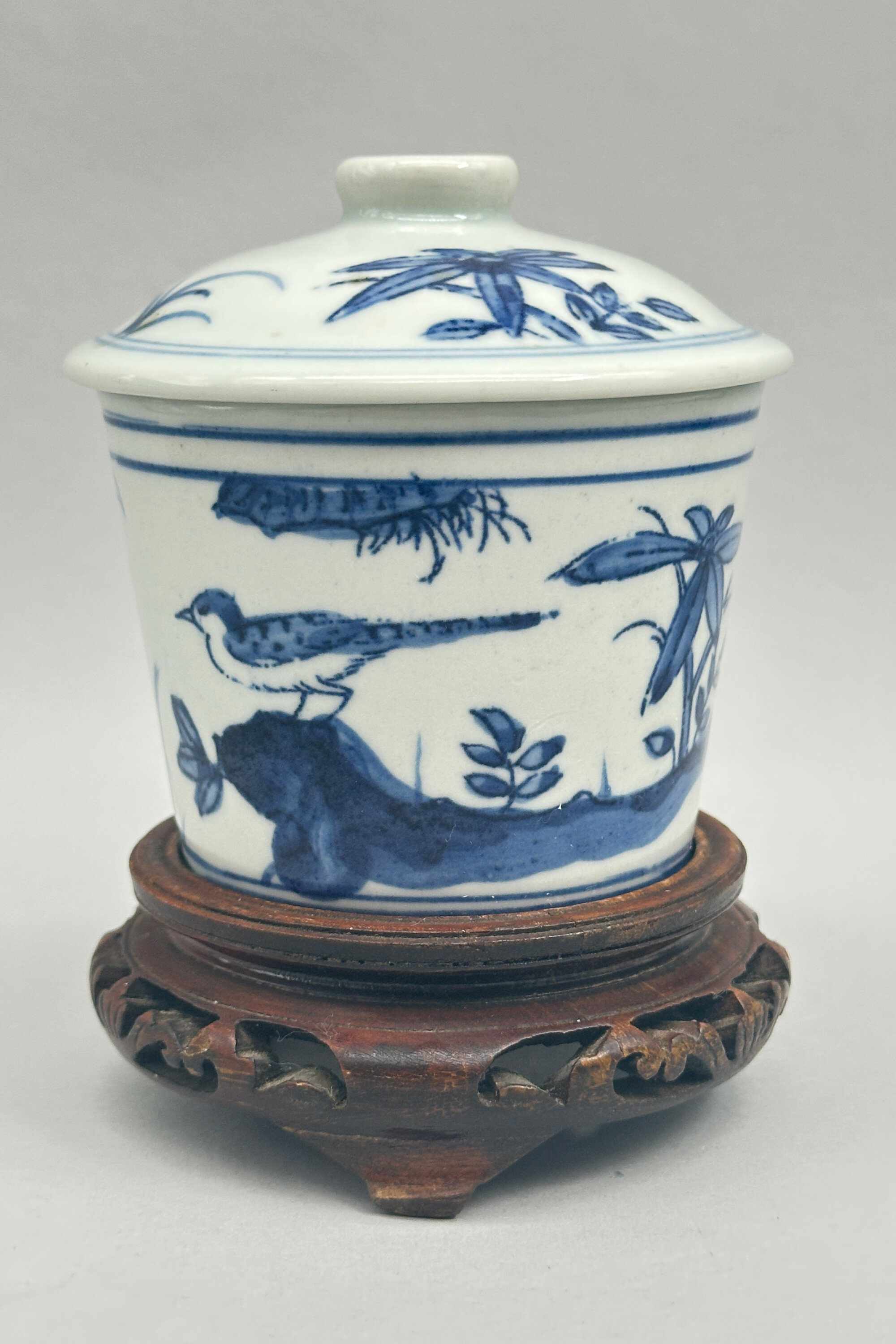
Chinese Small Blue and White Potiche and Cover with wood stand, late C20th
Price: £45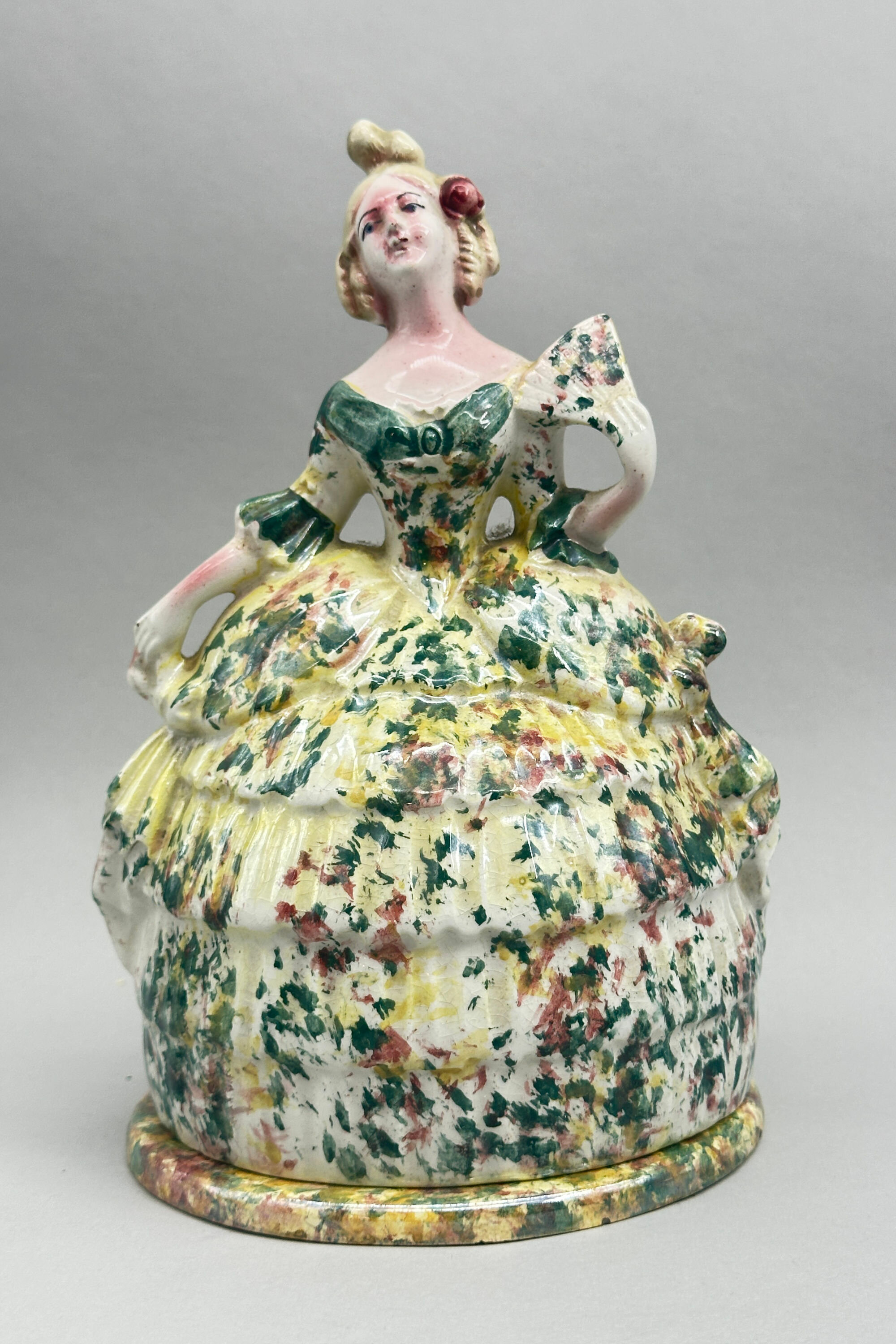
Lustreware Vanity Box, Lady in Crinoline, probably continental early/mid C20th
Price: £35
Vintage Needlepoint Picture of a Garden Scene, framed, second half C20th
Price: £25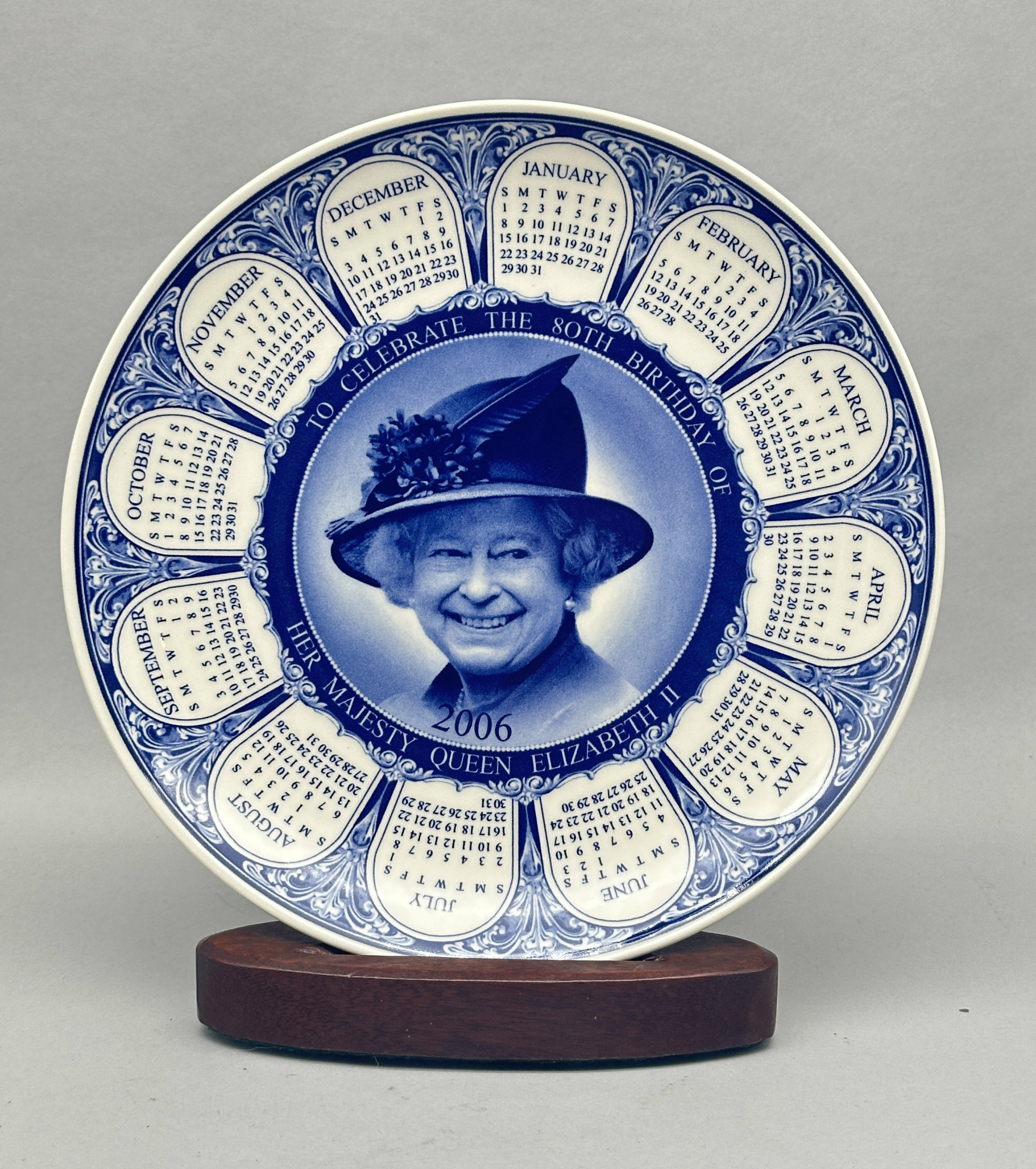
Wedgwood Calendar Plate, 80th Birthday of Queen Elizabeth II, 2006
Price: £10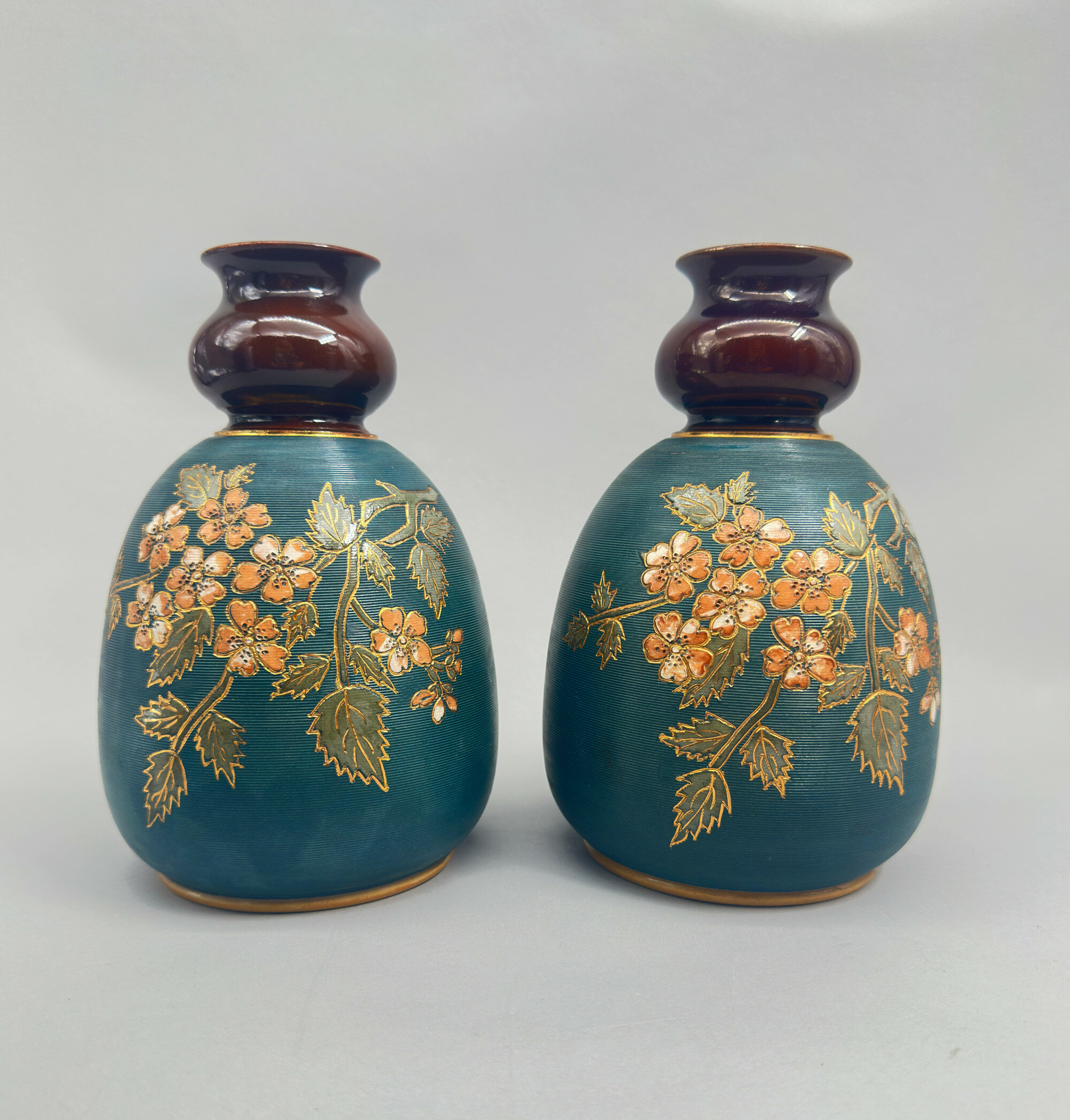
Pair of Lovatt and Lovatt Langley Mill Vases, early C20th
Price: £85The Langley Mill Pottery was located in Langley Mill, Derbyshire on the Derbyshire – Nottinghamshire border. From its establishment in 1865 to its final closure in 1982, it went through five distinct periods of ownership, producing a wide range of stoneware ranging from utilitarian items and to high quality art pottery. This pair of vases dates from the third company that traded there, Lovatt and Lovatt. The Lovatt family had entered into partnership with the owner of the founding business at Langley Mill, James Calvert. From 1895 the business was in sole control of the Lovatt family and traded as ‘Lovatt and Lovatt’ until 1935. The early years of the twentieth century proved to be something of a zenith for them and a wide range of art pottery pieces were made which enjoyed great popularity. Production techniques were streamlined without a reduction in quality and in 1905, leadless glazes were introduced. These are proudly announced on the base of this pair of vases which are an excellent example of the Lovatt and Lovatt style and probably date to 1912, indicated by the impressed numbers for that year.